

Visiting Westminster Abbey: Helpful tips, photos & history
- David Angel
- London , England , United Kingdom
About the Author: David Angel is a British photographer, writer and historian with 30+years experience exploring Europe. His work regularly appears in global media including the BBC, Condé Nast Traveler, and The Guardian.
This is my guide to visiting Westminster Abbey, an essential stop on many London itineraries. This guide will help you make the most of your visit .
Visiting Westminster Abbey is one of the highlights of any trip to London. We’ll show you what to see in Westminster Abbey, from architectural highlights to the many great monuments inside.
I’ll also share Westminster Abbey tips to make your visit as smooth as possible and show you how to buy tickets in advance to avoid the lengthy queues.
Visiting Westminster Abbey is one of the absolutely essential things to do in London. Whether you’re spending as little as a day in London or as much as a month, you simply cannot miss it. Along with Big Ben, St Paul’s and Tower Bridge, this is one of the most famous London landmarks .
Many know it best as the venue for the wedding of Prince William and Kate Middleton in 2011. Yet the history of Westminster Abbey goes back well over a thousand years. The place is crammed wall-to-wall with history.
Table of Contents
What is Westminster Abbey, London ?

Westminster Abbey is the nearest thing England and Great Britain has to a national church. It has been the venue for coronations of kings and queens of England since 1066, when William the Conqueror assumed the Crown.
It is also the resting place for many British monarchs, with 17 kings and queens buried at Westminster Abbey. Subsequently, many Westminster Abbey burials have included British luminaries, from the fields of politics, literature and science.
The nearest equivalents in Europe are the Pantheon in Paris, and the Panteao Nacional in the Alfama district of Lisbon Throw in a few royal weddings and funerals, and you have a church at the very heart of the nation. For sheer volume of history, no other church – or even building – in the UK comes close. Along with the Houses of Parliament and St Margaret’s Church next door, it is a UNESCO World Heritage Site .
Westminster Abbey should not be confused with Westminster Cathedral. The Abbey is an Anglican church, whereas Westminster Cathedral, 1 km along Victoria Street, is a much later building. It’s the Cathedral of the Roman Catholic Diocese of London.
W estminster Abbey History
The first church to be built on the site near the River Thames was begun in 960 AD. By the time of King Edward the Confessor , this London abbey had assumed great importance. He was laid to rest in the church after dying in January 1066, and his shrine remains intact to this day.
Little else survives from the time of Edward the Confessor, other than a wooden door dating from around 1050 and the Pyx Chamber next to the Cloister. This was part of the monks’ dormitory, and most likely dates from around 1100.
Most of what we now see dates from the 13 th century, King Henry III commissioned a Gothic church with pointed arches and a lofty vaulted ceiling. The main body of the church – the nave and choir date from this period.
As with many great medieval churches, other additions were made over time. These include the sublime Lady Chapel, built in the English Perpendicular style in the early 16 th century.
The twin towers at the west end of the church were added in the 18 th century.
Tips For Visiting Westminster Abbey
Westminster abbey visiting hours.

Westminster Abbey opening hours differ slightly throughout the year.
The church is open between 9.30 am and 3.30 pm Monday to Friday. There is additional late opening on Wednesdays between 4.30 pm and 6.00 pm, but several of the most interesting parts of the church aren’t open during these sessions.
Westminster Abbey visiting hours vary on Saturdays. During the spring and summer season – May to August – it’s open between 9.00 am and 3.00 pm. During winter it is only open between 9.00 am and 1.00 pm.
On Sundays, the Abbey is only open for services, with no time scheduled for tourist visits.
W hen is the Best Time To Visit Westminster Abbey ?
If you’re visiting during peak season, especially spring and summer, we strongly suggest you book ahead or arrive at 9.30 am when the Abbey opens. Otherwise you could be in for a long wait.
If you’re keen to avoid the London crowds altogether, then the best time to visit London is during winter. It’s the one time of year when you can enjoy your London sightseeing without having to queue for everything. The weather may be grey, but it’s the most romantic time to visit London. It’s also when places like Westminster Abbey can be savoured most.
W estminster Abbey Tickets

Tickets for Westminster Abbey can be bought online, or you can walk up and buy a ticket.
The advantage of booking Westminster Abbey online is that you are allocated a time slot. You may not always get in quite on time, but this is a far better bet than just turning up, especially in peak season.
It can take an hour or more waiting for Westminster Abbey admission – not the best idea in hot or wet weather.
The Westminster Abbey entrance for visitors is in the north transept. It’s next to the much smaller St Margaret’s Church, on the Parliament Square side of the building.
Westminster Abbey Ticket Prices
The standard online Westminster Abbey entry fee is £21 for adults, while the walk-up cost is £23. Children under 5 accompanied by an adult are allowed in for free.
Children aged 6-16 can visit Westminster Abbey for £9 if tickets are booked online, or £10 if tickets are bought at the Abbey.
Concessionary tickets (over-60s and students) cost £18 online, or £20 at the Abbey.
How to Get to Westminster Abbey ?

The Abbey is in the heart of historic Westminster, across Parliament Square from Big Ben and the Houses of Parliament.
Wherever you choose to stay in London, Westminster is easy to reach. Westminster Tube station is a good option. It’s on the Circle, District and Jubilee lines, and is situated next to Westminster bridge, directly opposite the Big Ben clock tower. It’s a five-minute walk from there to Westminster Abbey.
Otherwise, several major bus routes have stops very close to Westminster Abbey. These include the 11, 24, 148 and 211. Some stop a few minutes away at Victoria Street, stop R.
Things to See in Westminster Abbey ?

Visitors enter Westminster Abbey church via the north transept door. You turn right to explore the nave, where the congregation sits during services. The Tomb of the Unknown Soldier can be found near the west window. The Coronation Chair is also housed here, in St George’s Chapel. You then reach the south transept, where you’ll find the Poets’ Corner.
After this, you enter the chancel, which contains the magnificent choir, high altar and the wealth of tombs in the ambulatory chapels around the edge of the building. You glimpse the Shrine of Edward the Confessor, which is off limits to most visitors, before reaching the astounding Lady Chapel. It’s one of the best examples of Perpendicular architecture, a uniquely British form of late Gothic style.
Within the body of the Church, there is also the Westminster Abbey museum, housed high up in the triforium level above the church. Officially known as the Queen’s Diamond Jubilee Galleries, it’s an astounding exhibition space, and a wonderful use of part of a church you would never normally see.
It holds a collection of Abbey treasures, from ancient manuscripts to statues and sculptures, and the marriage licence of Prince William and Kate Middleton, now known as the Cambridges.
After visiting the main body of the Church, you can avoid the crowds in the beautiful Cloister. This also affords amazing views of the south side of the church. You can also visit the splendid Gothic Chapter House and the nearby Little Cloister, a tiny secret garden with a view to the Victoria Tower of the Houses of Parliament
Westminster Abbey Guided Tour ?
When visiting Westminster Abbey, you will most likely get a lot more out of your visit if you take a tour. The Westminster Abbey verger tour is conducted by a member of the Abbey staff, and the explanations go beyond that of the audio guide. This is the one way you can also get a better view of the Shrine of Edward the Confessor.
As well as taking a guided tour of Westminster Abbey, you can also book a combined tour. One possibility is the Westminster Abbey and Changing of the Guard tour, which also includes the famous daily ceremony outside Buckingham Palace.
W ho is Buried at Westminster Abbey

Seventeen English monarchs are buried in Westminster Abbey. These include Henry III, Edward I, Henry V and Henry VII, the founder of the Tudor dynasty, and his grand-daughter Elizabeth I. Many other royals and members of the nobility are also interred there.
There are far too many Westminster Abbey tombs and memorials to list. However, it’s worth noting some of the great British figures who are buried in the Abbey.
Geoffrey Chaucer, the medieval author of The Canterbury Tales, was buried there as he was a tenant resident in the Abbey Close. Later, more and more literary figures were buried in the same area in the south transept, and it became known as Poets’ Corner.
These Include Dr Samuel Johnson, compiler of the first Dictionary in English, and the 19 th century genius Charles Dickens.
Great British scientists buried in Westminster Abbey include Sir Isaac Newton (who discovered gravity), and Charles Darwin (who proposed the Theory of Evolution). Most recently, modern great Sir Stephen Hawking was also interred in Westminster Abbey.
Westminster Abbey Services
Another way of getting inside Westminster Abbey is to attend one of the daily services there. It’s the one way to see Westminster Abbey free of charge, but don’t make the mistake of thinking this is a chance to do some sightseeing on the cheap. Think of it more as an experience, one that we wholeheartedly recommend.
A Westminster Abbey Evensong can be memorable, especially as the service is sung. You sit in the Quire stalls, close to the Abbey Choir. It’s an incredible setting, underneath the soaring Gothic arches and vaulted ceiling. Holy Communion services are often held in the Nave, but also around some of the side chapels and at Edward the Confessor’s Shrine.
Places to Visit Near Westminster Abbey

Many popular places to visit in London are close by including the following:
- Houses of Parliament
- Churchill War Rooms
- Buckingham Palace
- St James Park
- Banqueting House
- 10 Downing Street

David Angel is a British photographer, writer and historian. He is a European travel expert with over 30 years’ experience exploring Europe. He has a degree in History from Manchester University, and his work is regularly featured in global media including the BBC, Condé Nast Traveler, The Guardian, The Times, and The Sunday Times. David is fluent in French and Welsh, and can also converse in Italian, German, Portuguese, Spanish, Czech and Polish.
You can find more places to visit in our England travel guide .
Westminster Abbey
Everything You Need to Know Before Visiting
Gautier Houba / TripSavvy
Westminster Abbey was founded in AD960 as a Benedictine monastery. This was when most European Christians were Roman Catholic, but following the Reformation in the 16th century the Church of England was formed. Many traditions remain in the Abbey but services are conducted in English, and not Latin.
Westminster Abbey is the nation's Coronation Church and also the burial and memorial place for historical figures from the last thousand years of British history. Westminster Abbey is still a working church and all are welcome to attend the regular services.
- Westminster Abbey Parliament Square London SW1P 3PA
Nearest Tube Stations
- Westminster
- St. James's Park
Nearby you'll find a popular Harry Potter Film Location in London .
Opening Times
- Monday to Saturday: 9.30am - 4.30pm
- Monday, Tuesday, Thursday, Friday: 9.30am-4.30pm (last admission 3.30pm)
- Wednesday: 9.30am-7.00pm (last admission 6.00pm)
- Saturday: 9.00am-3.00pm (last admission 1.30pm)
- On Sundays the Abbey is open for worship only.
Check official website for current opening times .
90 minute verger-led tours, in English only, are available to individuals for a small additional charge. Audio tours (English version narrated by Jeremy Irons) take around an hour and available in seven other languages: German, French, Spanish, Italian, Russian, Mandarin Chinese, and Japanese. They are available at the Abbey's Information Desk near the North Door.
Photography and Cellphones
Photography and filming (pictures and/or sound) of any kind is not allowed in any part of the Abbey at any time. Visitors can take pictures in the Cloisters and College Garden for personal use only. Postcards showing the interior of the Abbey are available to buy in the Abbey shop. The use of mobile phones is permitted in the Cloisters and College Garden. Keep mobile phones switched off within the Abbey church.
Official Website
www.westminster-abbey.org
See Westminster Abbey for Free
You can see inside Westminster Abbey for free. The Abbey never charges people who want to worship but they rely on admission fees from visitors to cover running costs. Evensong is the most beautiful of services where the Abbey choir sings. The Choristers of the Choir are educated at Westminster Abbey Choir School and are all extremely talented. Evensong is at 5pm on Mondays, Tuesdays, Thursdays, and Fridays, plus at 3pm on Saturdays and Sundays.
What To See
Even without an audio guide, or guidebooks, I would say you could enjoy a visit to Westminster Abbey as it's an awe-inspiring building. I was gob-smacked the first time I went inside: at the architecture, the history, the artifacts, the stained glass windows, oh by everything!
Top Tip: The Abbey staff are extremely knowledgeable and always willing to answer questions. I've learned much more from speaking to Abbey staff than from guidebooks.
Do try to see the various British royalty tombs and the Coronation Chair near the Shrine of St. Edward the Confessor, plus the additional Coronation paraphernalia in the Abbey Museum. Poet's Corner has tombs and memorials for such well-known writers as Geoffrey Chaucer, Charles Dickens, Rudyard Kipling, Thomas Hardy, D H Lawrence, and Alfred Lord Tennyson.
The Grave of the Unknown Warrior is a fascinating story of a body brought back from France after the First World War, along with 100 barrels of French soil to bury him. The black marble slab is from Belgium and the gold lettering was made from shell cases collected on the fields in France .
The only Congressional Medal of Honor given outside of the US was presented to the Unknown Warrior on 17 October 1921 and this hangs in a frame on a pillar nearby. College Garden is thought to be oldest garden in England at nearly 1,000 years old. Pick up a leaflet at the garden entrance to learn about the planting. College Garden is open Tuesday, Wednesday and Thursday.
- Family Top Tip: Children can dress as a monk and have their photo taken in the Cloisters. Go to the Abbey Museum and ask to borrow a costume!
- Christmas Top Tip: St. George's Chapel has a stunning nativity scene each Christmas which adults and children always adore.
Where to Dine Locally
Opposite the Abbey is the Methodist Central Hall . There is a cafe in the basement which is nothing fancy (plastic chairs and vinyl tablecloths) but does serve decent hot and cold food at reasonable London prices. It's a huge dining space and I've always found it a haven from the hustle and bustle of Parliament Square. The Supreme Court is opposite too and has a great cafe in the basement.
How to Enjoy a Quick Layover in London on a Budget
18 Best Places to Visit in Kolkata to Discover the City
Guide to St Paul's Cathedral
One Week in Delhi: The Perfect Itinerary
Buckingham Palace Annual Summer Opening
How to Visit the Vatican Museums and Sistine Chapel in Rome
Vatican City Travel Guide
St Paul's Cathedral
A Visitor's Guide to Hampton Court Palace in London
18 Best Free Things to Do in Paris
Nightlife in Delhi: Best Bars, Clubs, & More
Walking Tour of Historic Honolulu
Where to Go on a Family Vacation in 2019
The Best Things to Do in Savannah, Georgia
Top 10 London Attractions
One Week in Mumbai: The Perfect Itinerary

Visiting Westminster Abbey – Tickets, tours & FAQs
By: Author Tracy Collins
Posted on Last updated: July 30, 2023
- Everything you need to know to plan and book your visit to Westminster Abbey
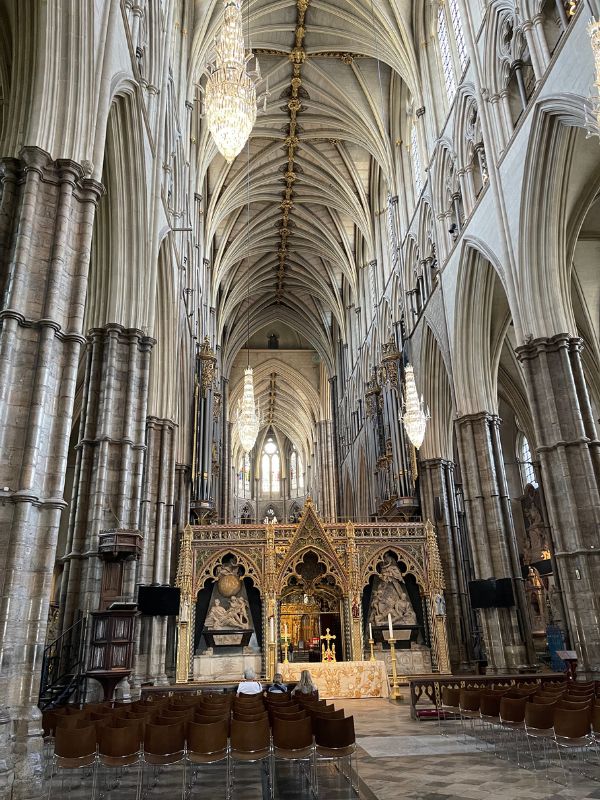
Visiting Westminster Abbey: Tickets + Tours
Westminster abbey facts and figures, what to see at westminster abbey, getting to westminster abbey, opening hours, when is the best time to visit, services at westminster abbey.
- What other London attractions are located near Westminster Abbey?
Tips for planning your visit
Our top 3 picks: westminster tickets & tours.
#1 TOP PICK

⭐️⭐️⭐️⭐️⭐️ Westminster Abbey Tour with Diamond Jubilee Galleries
✔️ Skip the line entry ✔️ Exclusive access to the Diamond Jubilee Galleries ✔️ Small group tour with guide

Westminster Abbey Entrance Ticket ✔️ Book with Get Your Guide for free cancellation (up to 24 hours before) ✔️ Exchange at ticket office at the Abbey

Guided tour of Westminster Abbey and Houses of Parliament
✔️ Combined small group tour ✔️ Explore 2 top London destinations ✔️ Guide
Nearest Tube station – Westminster ( Circle, District and Jubilee lines )
How long to set aside for your visit? 1½ – 2 hours
- Westminster Abbey Entrance Ticket
Good to know – Entry to Westminster Abbey is included in the London Pass .
Combi tickets
- Westminster Walking Tour & Westminster Abbey Entry – Walking tour of the top 20 sights of Westminster (3 hours) and Westminster Abbey Entrance Ticket
- Skip the Line Westminster Abbey Tour with Diamond Jubilee Galleries – Skip the queues and dive into the history of England’s most important Gothic building, including the exclusive Queen’s Diamond Jubilee Galleries.
Guided tours
Prefer a guided tour of Westminster Abbey?
- Guided tour with early access to Westminster Abbey – Buy ticket
- Private 2 ½ hour tour of Westminster Abbey with skip-the-line and a London Blue Badge Guide. – Book here
- Skip-the-line Westminster Abbey small group tour with a guided visit & tour around the Houses of Parliament – Book here
- Verger-guided tours are available for £10 but can only be booked on arrival. Spaces are limited and are subject to change or cancellation at short notice.
- Small group tour including entry and tour of Westminster Abbey & tour of Big Ben(external) – Book here
- Walks Tours – London in a Day small group tour – includes Westminster Abbey, the Tower of London and the Changing of the Guard.
Visiting Westminster Abbey
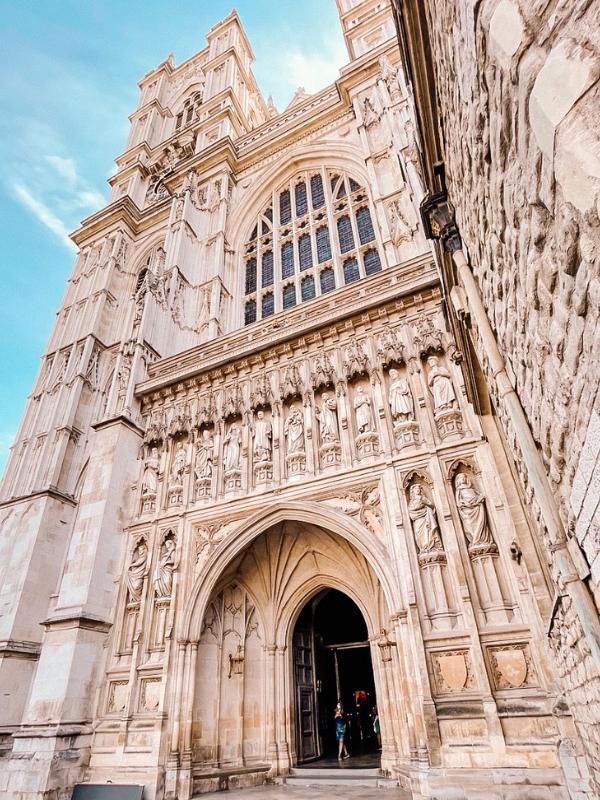
- Westminster Abbey was founded in the 10th century and is where every British monarch since 1066 has been crowned.
- The Coronation Chair (which has been used since the 14th century) can be seen in the abbey.
- It was constructed between 1245 and 1517 and is considered one of the finest examples of Gothic architecture in the world.
- The tombs of 17 monarchs and located in the Abbey.
- 16 royal weddings have taken place in the Abbey including the marriage of Prince William and Kate Middleton in 2011.
- Poets’ Corner contains memorials to many of England’s greatest writers, including Chaucer, Shakespeare, and Austen.
- The abbey’s famous “Oak Screen” was carved from a single oak tree and is considered one of the finest examples of medieval wood carving in England.
- Westminster Abbey was designated as a UNESCO World Heritage Site in 1987.
- The abbey’s bell tower, known as the Great West Tower, is the largest and highest of its kind in the UK. Its bell – known as “Great Tom” – is the largest bell in the country.
- Many famous people are buried in the Abbey including Sir Isaac Newton, Stephen Hawking, George Frederic Handel, Laurence Olivier and Charles Dickens.
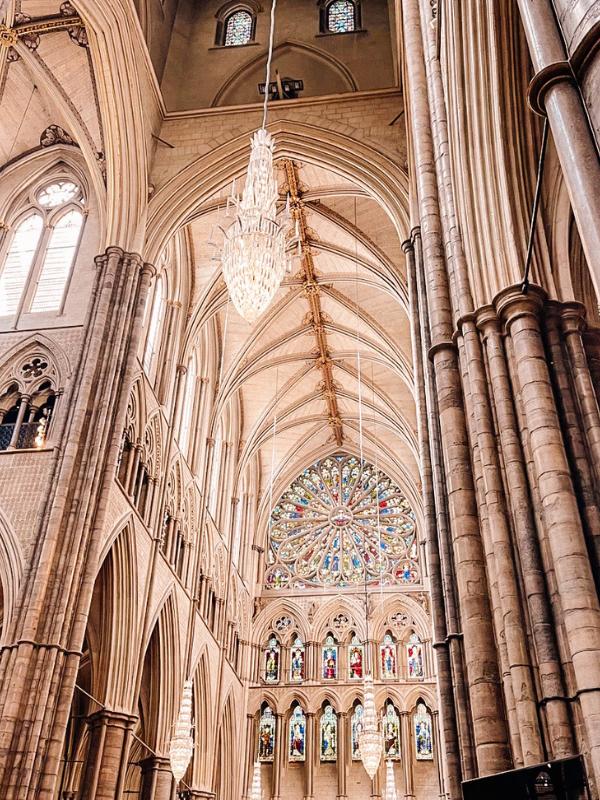
If you are visiting Westminster Abbey as part of your London itinerary it is good to know a little before you visit so you don’t miss anything which is of particular interest.
- Poet’s Corner – located in the south transept more than 100 poets and writers are buried or have memorials here.
- Coronation Chair – is located in a specially-built enclosure within St George’s Chapel at the west end of the Nave. The chair has been used for the Coronation of British monarchs since 1399.
- Royal Tombs – at the eastern end of the church are the tombs of 30 kings and queens
- The Lady Chapel – is located at the Eastern end of the church and has a spectacular fan-vaulted ceiling
- The grave of the Unknown Warrior – on 11th November 1920 a body was brought from France to be buried here. The grave is located at the west end of the Nave.
- The Cloisters – is the area where the monks would have spent most of their time
- The Quire – is where the choir sit and is located in the centre of the Abbey.
- Pyx Chamber – is one of the oldest parts of the Abbey and was built around 1070 and is located off the East Chapter.
- Chapter House – is a meeting place where the monks gathered with the abbot the Chapter House is located in the East Cloister.
- The Queen’s Diamond Jubilee Galleries – Located 16 metres above the floor of the Abbey the galleries display treasures and tell the history of the Abbey. Additional charge – timed tickets .
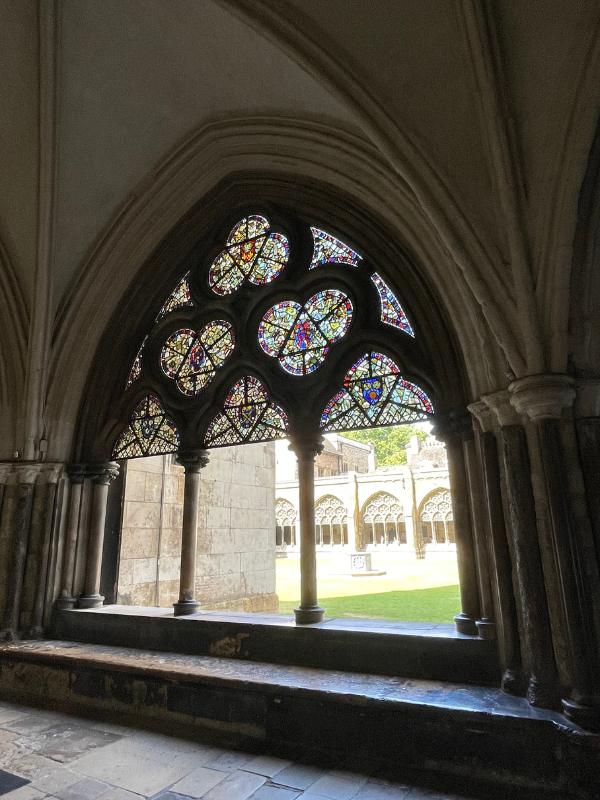
- Tube: The closest tube station is Westminster (Circle, District and Jubilee lines) which is less than a 5 minute walk to the Tower of London.
- Overground rail: Victoria Station
- Bus routes: There are a number of bus routes that pass by the Abbey including 11, 24, 88, 148, 211
- Uber boat: Westminster Pier
- Sightseeing buses: All major sightseeing buses pass by the Westminster Abbey
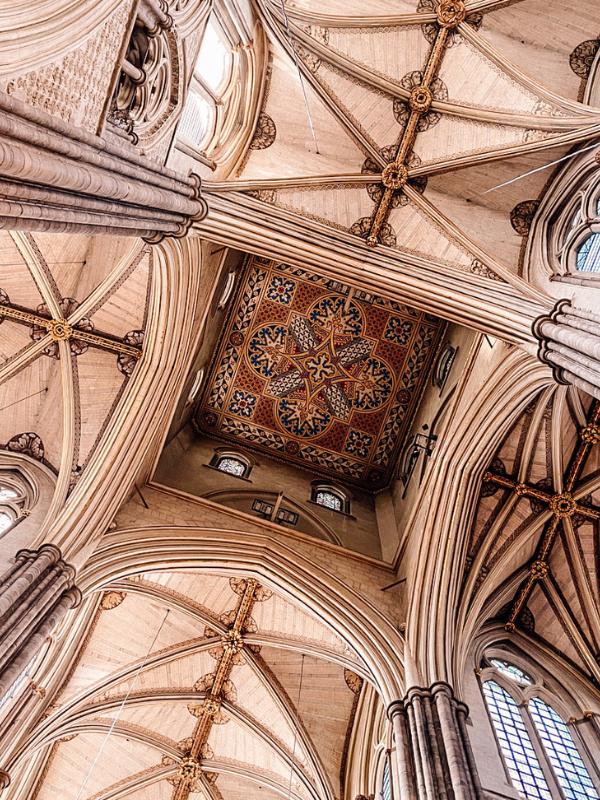
Westminster Abbey is a church and as such is open for services on Sundays but not for sightseeing.
- Monday – Friday: 9:00 AM – 3.30 PM
- Saturday – 9:00 AM – 3:00 PM
The Queen’s Diamond Jubilee Galleries
- Monday – Friday: 10:00 AM – 3.00 PM
- Saturday – 9:30 AM – 3:00 PM
❗️ Note that due to the Coronation of King Charles III on May 6th 2023 the Abbey is closed from Tuesday 25 April (May’s dates have at this point not been released to the public)
- Westminster Abbey is one of the most popular tourist attractions in London so expect it to be busy!
- It can be especially crowded on Saturdays and during London’s peak season.
- If possible plan your visit for a weekday.
- Visit as early in the day as you can – be there before opening time or book a tour which allows early access or skip the line like this one .
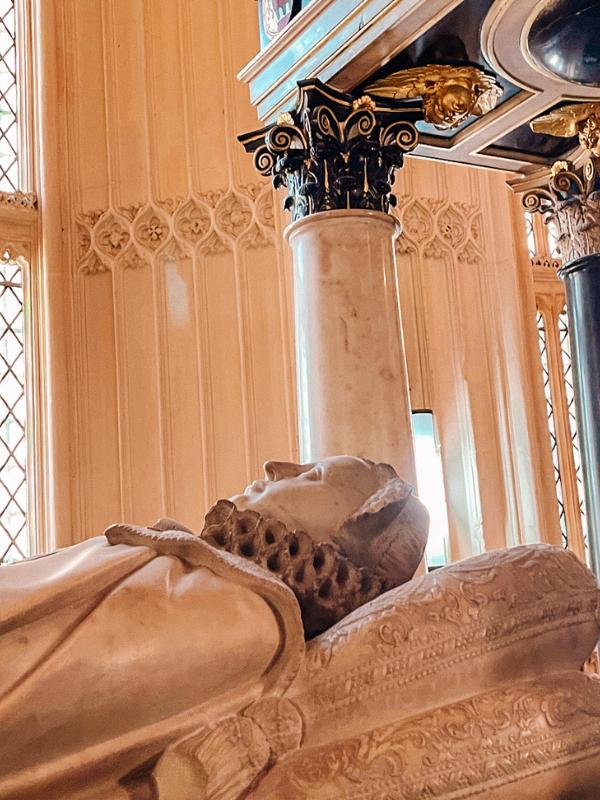
There are regular services at Westminster Abbey which can be attended by the public and are free of charge.
- Morning Prayer
- Holy Communion
- Evening Prayer
- Sung Eucharist
Choral services are sung daily during term time by the Choir of Westminster Abbey. Sundays are the best time to visit to hear the choir as there are a number of services held. Alternatively, attend for Evensong during the week which is held around 5.00 PM.
Do check the official calendar when planning your visit.
What other London attractions are located near Westminster Abbey ?
- The Houses of Parliament (Palace of Westminster)
- Churchill War Rooms
- 10 Downing Street
- Buckingham Palace
- Personal photographs are allowed in the church but the use of a flash is forbidden. No pictures are allowed during services nor permitted at any time in the Shrine of St Edward the Confessor, St Faith’s Chapel or The Queen’s Diamond Jubilee Galleries.
- Food and drink – Meals are served throughout the day at the Cellarium Café and Terrace. There is also a Kiosk that offers snacks, a light meal and drinks. A popular and affordable afternoon tea is served at the Cellarium Café and Terrace .
- A multimedia guide is included with the entry ticket – it is available in 14 languages. The app can be downloaded before you visit – Apple here , Android here or you can use a device supplied upon entry to the Abbey.
- The floor of the Abbey and steps are uneven so ensure that you are wearing sensible footwear.
- Bag checks are carried out before entry to the Abbey. There is no facility to check large bags or suitcases.
- There is no dress code but visitors are requested to dress respectfully.
- Visiting the Tower of London
- Visiting the London Eye
- Visiting Windsor Castle
- Visiting Kensington Palace
- Hampton Court Palace
- St Paul’s Cathedral
London Travel Guide & Itinerary Planner Ebook (+ 4 BONUS ebooks)
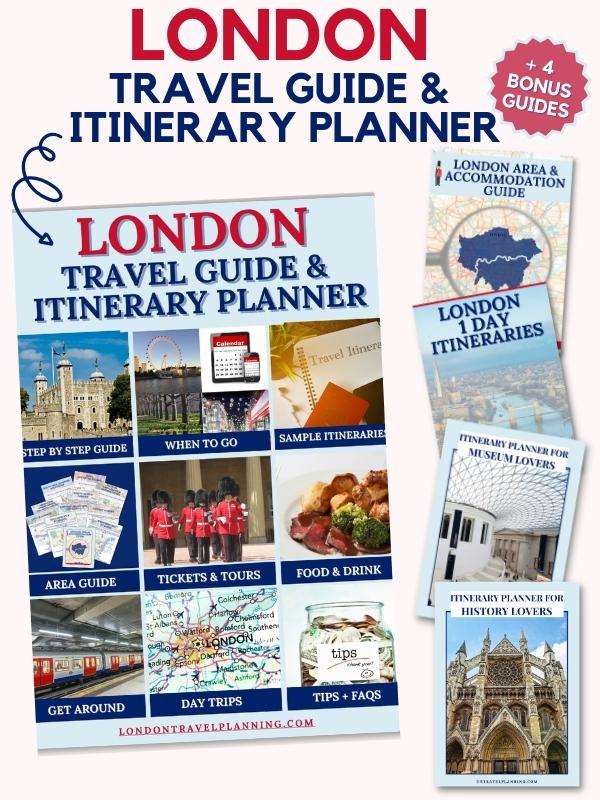

What To See At London’s Westminster Abbey, The Complete Guide
Westminster Abbey is a iconic landmark that’s an absolute must visit attraction in London. It’s the most historic church in the English-speaking world.
Founded by Edward the Confessor, the abbey is a shrine of the British nation and a UNESCO-listed site. The complex has been an abbey, a cathedral, a coronation church, and a royal mausoleum.
This spectacular medieval “royal peculiar” has hosted every coronation from William the Conqueror to Elizabeth II and 16 royal weddings. It’s also the burial place of many royals and notables, including feuding Tudor siblings Elizabeth I and Mary.
This Westminster Abbey guide gives you an overview of the abbey’s 1,000 year history and tells you everything to see inside. I also give you must know tips for visiting.
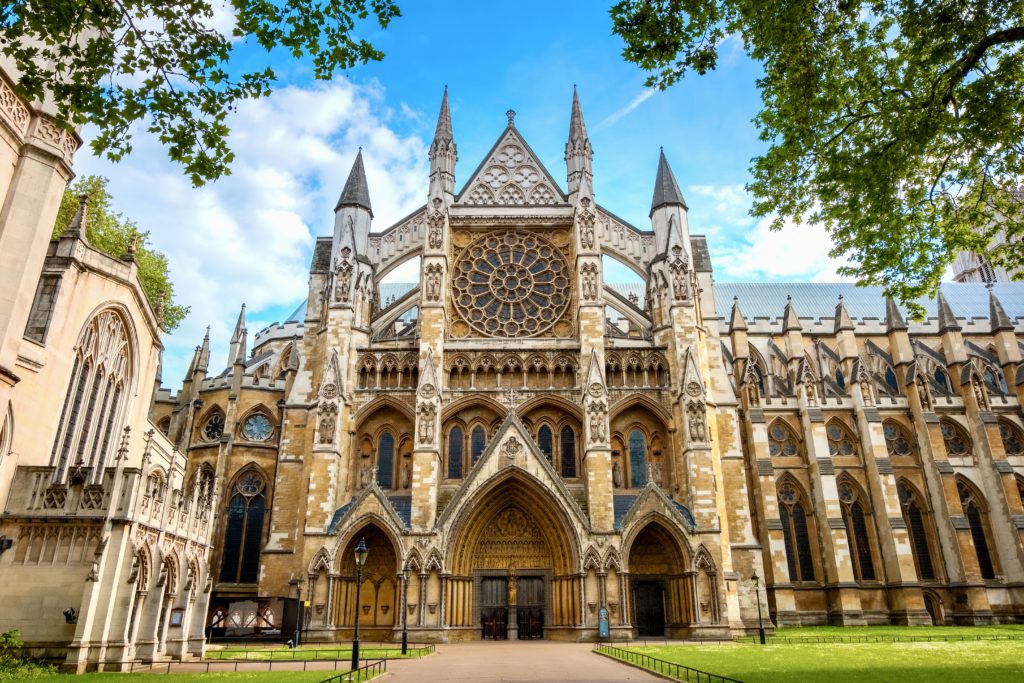
Here’s a snapshot of what you can see at Westminster Abbey on a visit:
- statesmen aisle
- shrine of Edward the Confessor
- royal tombs
- Henry VIII’s Lady Chapel
- poets corner
- diamond jubilee galleries
- chapter house
- pyx chamber
- coronation throne
Tickets & Tours For Westminster Abbey
You definitely need to reserve a skip the line ticket in advance to visit the abbey. The lines will be long in high season.
Click here to pre-book a ticket to Westminster Abbey. The abbey is also free with the London Pass . But the pass doesn’t give you skip the line access to the abbey.
You may want to book a guided tour of the abbey. Click here for a 2 hour private guided tour of the abbey .
This tour gives you a combined tour of the abbey and the Houses of Parliament . This tour offers a 4 hour Westminster walking tour and abbey tour .
If you gotta see it all, this 8 hour guided tour takes you to Westminster Abbey and other iconic attractions in London.
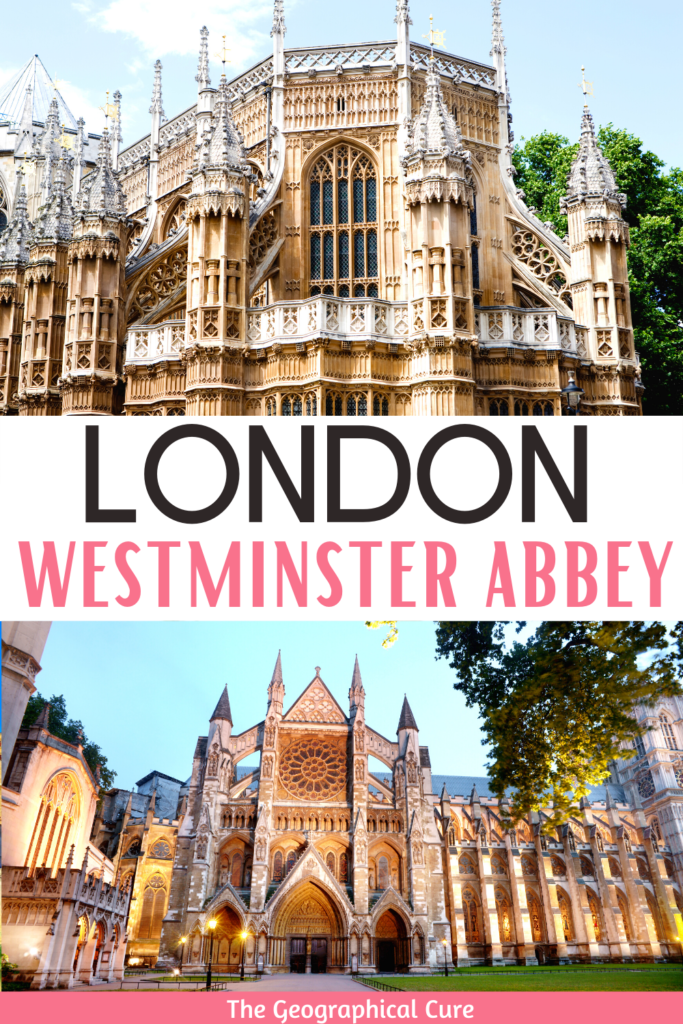
History of Westminster Abbey
Westminster Abbey has been a place of worship for over 1,000 years. The abbey isn’t a cathedral. It’s techinically a “royal peculiar” – a place of worship that falls under the monarch’s jurisdiction and doesn’t belong to a diocese.
The abbey has the status of a collegiate church. Its official name is the Collegiate Church of Westminster.
In 906, St. Dunstan, the Bishop of England, brought monks from Glastonbury to found a monastery at Westminster. Over 100 years later, in 1042, King Edward the Confessor founded a church on the site.
It was consecrated in 1065. Edward died a few days later.
After his death, Edward’s reputation as a holy and pious man grew. People came to the shrine in pilgrimage, praying for healing.
In 1161, Edward was officially made a saint. Henry III decided to build him a shrine in a more glorious Gothic church.
Construction of Westminster Abbey began in 1245 and continued for a couple centuries. In 1503, Henry VII began to build a new lady chapel, which stands at the far eastern end of the abbey.
In the 16th century, the infamous Henry VIII had fallen out with the pope, who refused to give him an annulment so he could marry Anne Boleyn.
In 1540, Henry VIII broke from the church and launched his own Anglican religion. He dissolved the monasteries and seized their assets to continue funding his castle building ways.
But Henry VIII did, at least, grant the Westminster Abbey cathedral status, thereby sparing it from the looting and destruction other monasteries suffered.
In 1533, Queen Mary took over the crown from her father Henry VIII. As a devout Catholic, she changed the abbey’s status back to a monastery.
Five years later, her sister Queen Elizabeth I came to the throne and reversed Mary’s orders. The abbey became a collegiate church.
Architecturally, the next major milestone didn’t come in 1745. This is when the two west towers were built according to the design of a Christopher Wren pupil. In the Victorian era, the triple portico was built and the rose window redesigned.
In 1995, the exterior stonework was cleaned and restored. In 1998, new statues were added to the Great West Door, including ten 20th century martyrs. You can even see Martin Luther King Jr.
In 2018, the Queen’s Jubilee Galleries were opened in the Triforum. The galleries display the abbey treasures and offer great views down over the nave.
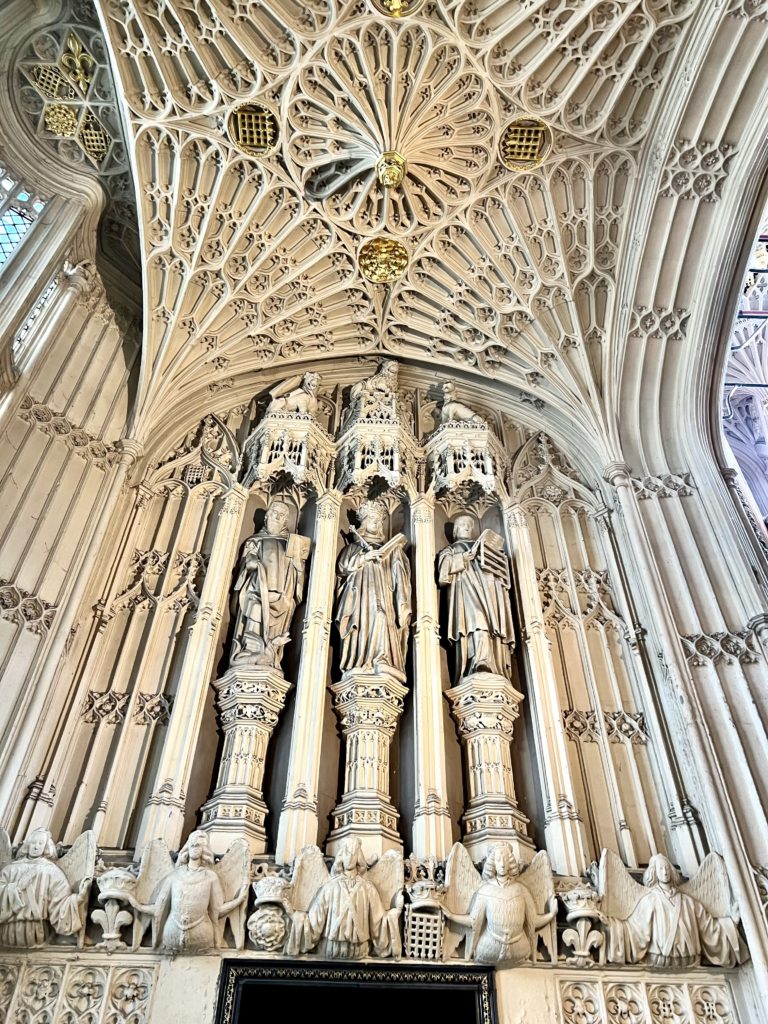
The Coronation Church
39 monarchs have been crowned in Westminster Abbey, beginning with England’s first king William the Conqueror.
In fact, Henry III specifically built the abbey as a coronation church. The long transepts allow plenty of seating for the glitterati.
The coronation ceremony follows a procedure that’s largely unchanged over time. The monarch is presented to the people by the Archbishop of Canterbury. Shouts of “God save the King or Queen” ring out from the grandstands.
The monarch signs an oath to govern properly. While sitting in the Coronation Chair, he or she is anointed with holy oil, given the symbols of monarchy, and crowned. Finally, the monarch is moved to the throne where he or she receives the homage of the subjects.
Elizabeth II’s coronation was the first one shown on live TV.
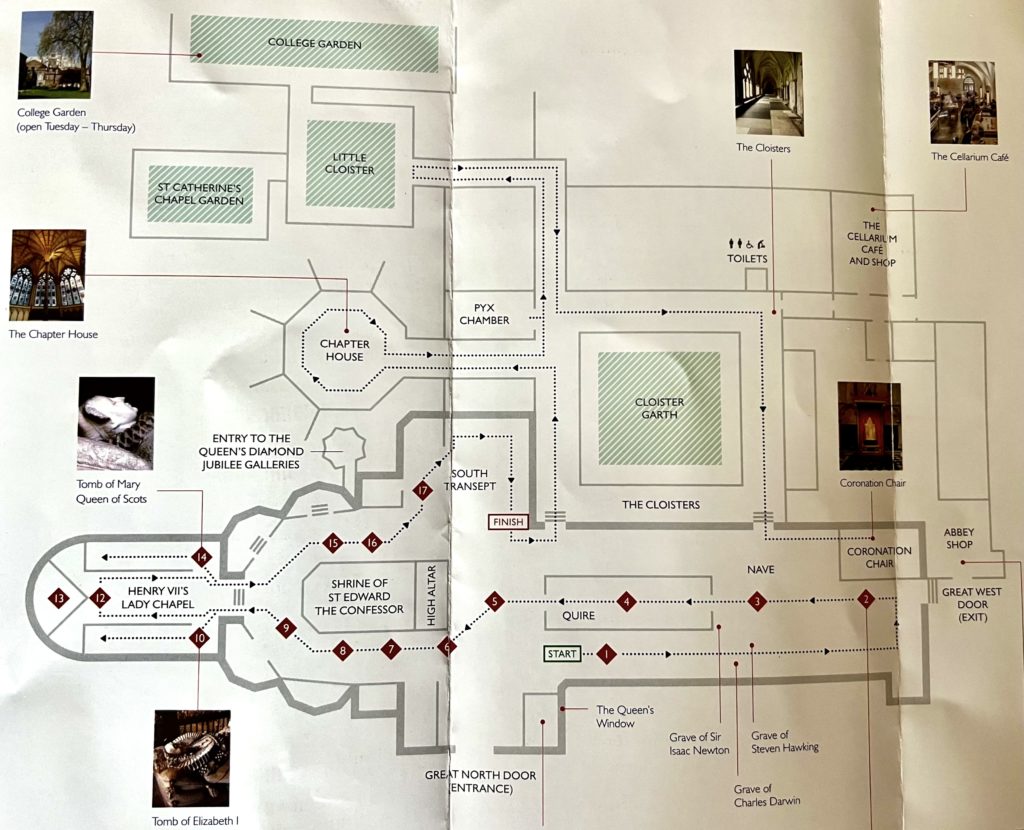
Guide To Westminster Abbey: What To See
Here are the must see highlights of the interior of the Abbey.
I’ve described them roughly in the order you’ll encounter them if you follow the trail on the map above.
1. Entrance
You enter the abbey via the door at the north transept. Your first impression is of a soaring vaulted space.
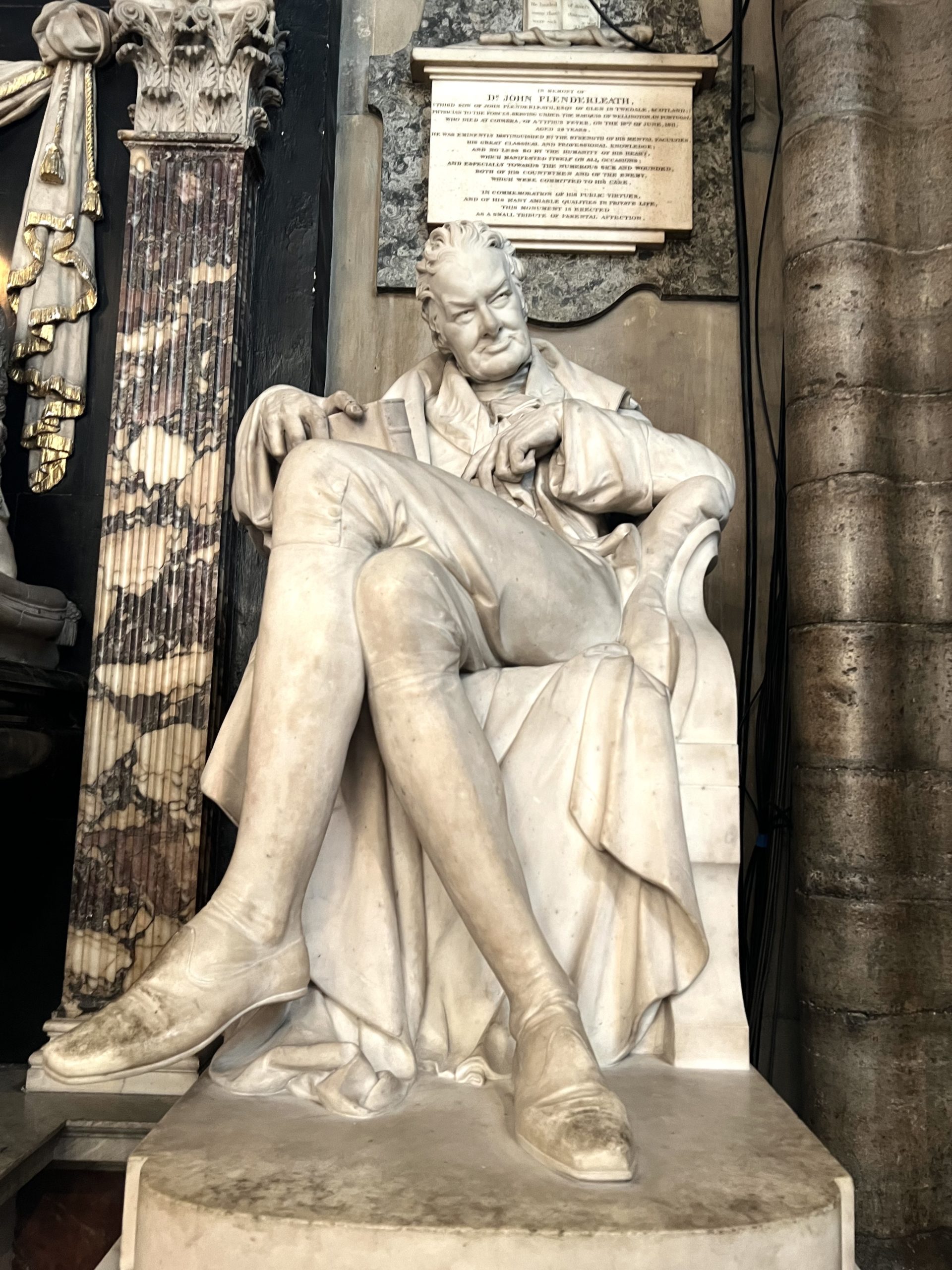
The history starts the second you walk in the door. You’ll see important figures from British history in the “Statesmen Aisle.”
There are larger than life statues honoring the leading Prime Ministers from the 18th and 19th centuries, including Viscount Patterson, Robert Peel, and Benjamin Disraeli. The tableaux suggests a strong link between the abbey and the British government.
The largest memorial in this area is dedicated to Prime Minister William Pitt. He is buried nearby with his son William Pitt the Younger. There is a plaque honoring the younger near the west door.
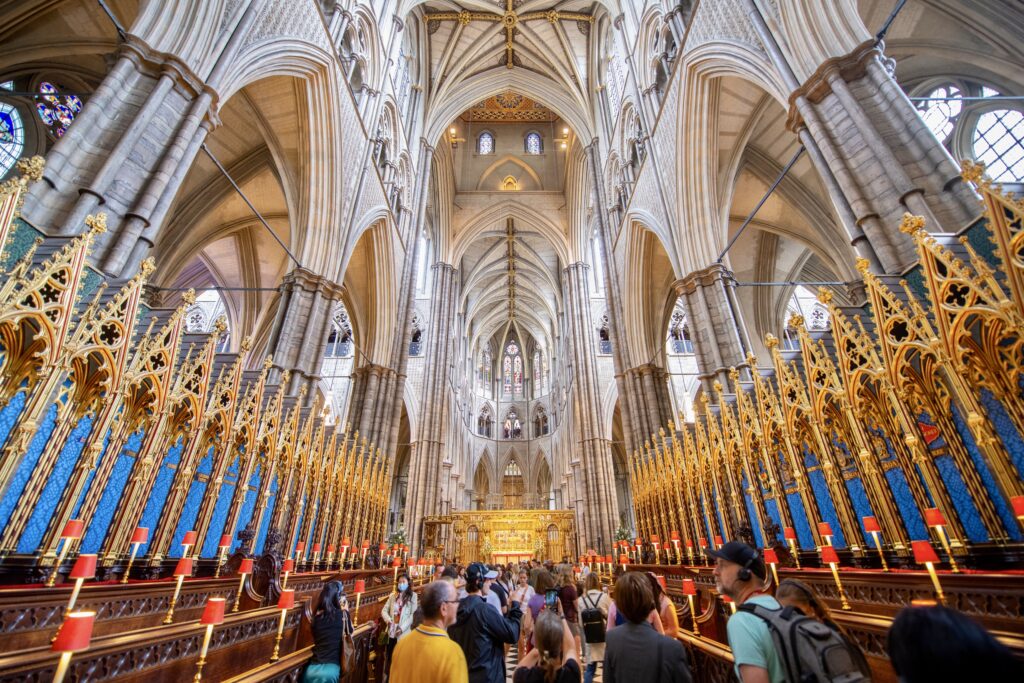
The nave is the central part of the church intended to hold the congregation. The abbey’s is a classic English nave.
Like other parts of the cathedral, it also honors important men and women. Set against the west facade facing the nave is the magnificent monument to Sir Issac Newton. He was a great British philosopher, scientist, and mathematician.
The sculpture reflects Newton’s interests. It features optical and mathematical instruments, books, and a globe showing the signs of the zodiac and constellations. Newton is buried just in front of the monument.
The naturalist and biologist Charles Darwin is buried nearby. In the center of the nave in the west end is a green marble stone commemorating Sir Winston Churchill.
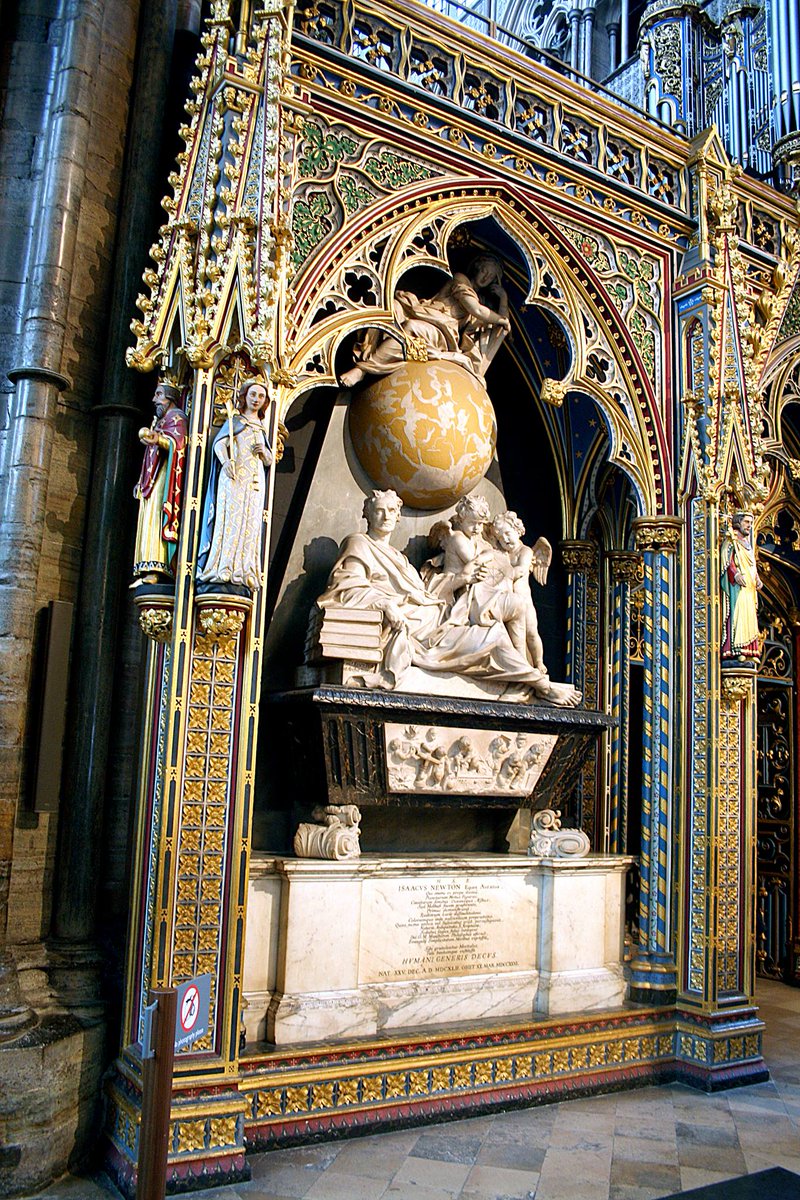
The most famous grave in the abbey that of the Unknown Soldier. It’s surrounded by a border of red poppies. I love that an unknown British soldier should be buried among the kings and queens.
The abbey’s world renowned quire is an intimate space. It’s effectively a church within a church.
The quire is divided from the nave by a elaborate screen designed by Edward Blore in 1834. It was gilded in the 1960s.
The quire was where the monks worshipped. Although not in these stalls, which date from the Victorian era. Today, the choir is occupied by eight regular choral services each work.
4. High Altar
The present High Altar dates from 1867. It was designed by George Gilbert Scott.
In front of the altar is one of the abbey’s most precious possessions, the medieval Cosmati Pavement. It was laid down in 1268 on the order of Henry III.
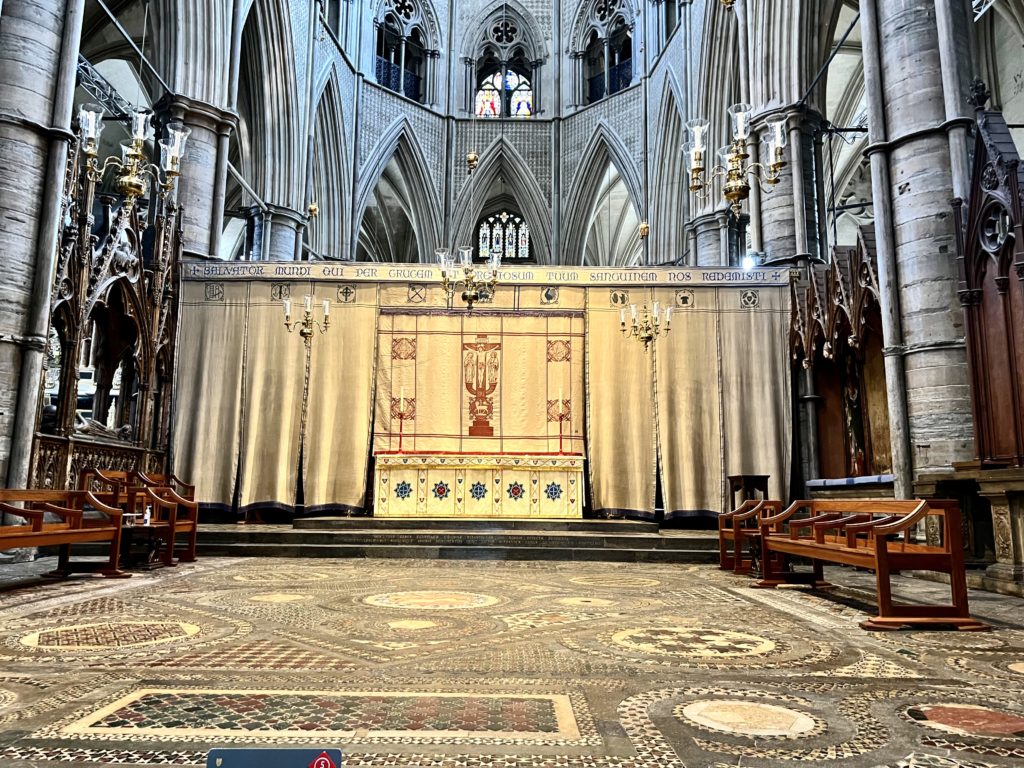
The tiles are made up of more than 80,000 pieces of onyx, porphyry, and glass set into Purbeck marble. The pavement was cleaned and restored before the wedding of William and Kate.
5. Shrine of Edward The Confessor
The Chapel of St. Edward is the spiritual heart of the abbey. It was here that the first pope visited the abbey.
Edward the Confessor’s remains were moved, or “translated,” many times before landing here. It was said that they were responsible for miracles.
The shrine was the work of Henry III, Edward’s biggest fan. He encrusted it with gold and jewels so that it shone like a beacon in then candlelit church.
Today, the shrine is hidden from view behind grills. You can only get a good look at it on a verger tour. (More on those below in the tips section.)
As he wanted, Henry III’s tomb is right nearby in a Purbeck marble tomb. It’s beautifully decorated with mosaics. Henry’s effigy is supposed to be a real likeness.
6. Henry VII’s Lady Chapel
The most beautiful part of Westminster Abbey is the stunning Henry VII Chapel in the eastern end.
The ancient chapel is the last great masterpiece of English medieval architecture, the crowning glory of the abbey, and the mausoleum for much of England’s royalty.
After its debut, the chapel was grandiosely nicknamed a “wonder of the world.”
The chapel is the work of England’s first Tudor monarch, Henry VII. He was the king who vanquished the York king, Richard III , in the Battle of Bosworth and seized control of England.
The chapel was dedicated to the Blessed Virgin Mary in 1503. It’s known as the Henry VII Chapel, although technically its name is the Lady Chapel.
The chapel’s architect is unknown. But historians believe that Robert Janyns, Jr. is the design genius.
Built between 1503-16, Henry VII broke the bank for his new chapel. It’s essentially an ornate homage to and keepsake of the Tudor dynasty. The whole chapel has the festive air of a medieval pageant.
Although built during the Renaissance period, Gothic architecture was still in vogue at the time. So, the chapel was built in the Perpendicular Gothic style .
This style is more ornate than French Gothic and uses highly decorative tracery effects. The chapel contrasts with the plainer Gothic style of the rest of the abbey.
The chapel’s most striking feature is its ornate high vaulted vaulted ceiling. The column piers splay out into a fan shape.
There’s elaborate highly decorative tracery everywhere. It obscures the structural system and hanging carved pendants.
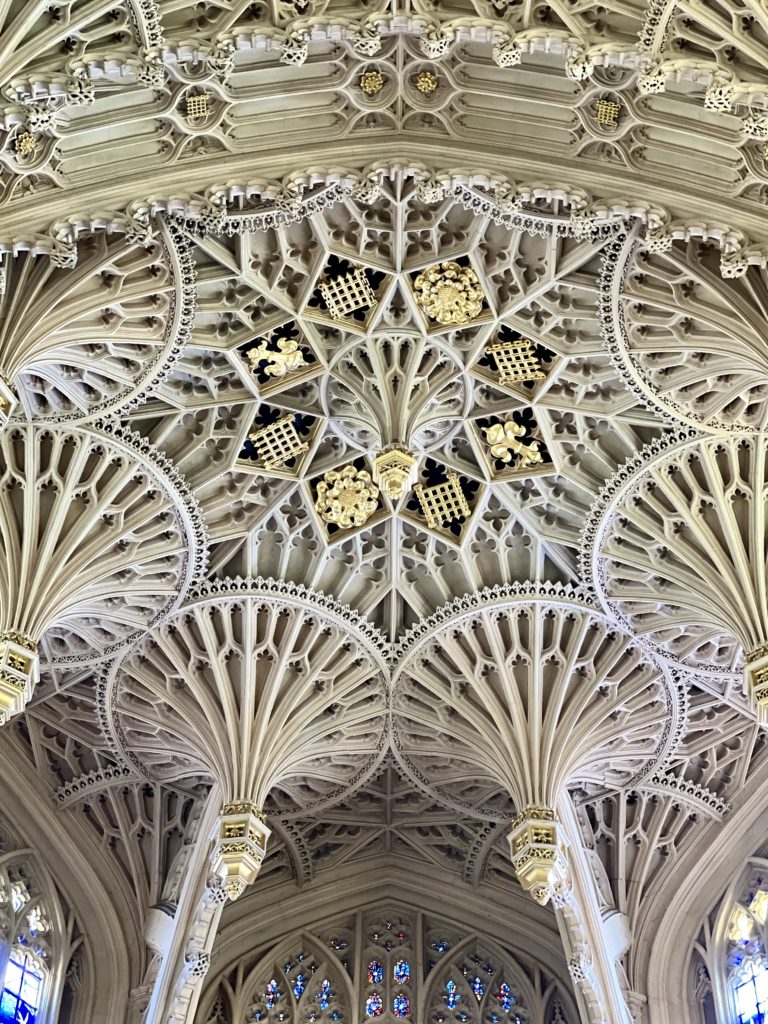
The pendants seem to defy gravity. They hang down like stalactites hanging from the roof of a fairy cavern.
The choir stalls were designated for all living Knights of the Most Honourable Order of the Bath . It was established in 1725 and is one of the premiere meritorious orders of the crown.
When a knight became part of the order, he received a stall that was adorned with his crest and coat of arms. You can see Lord Nelson’s stall plate on the south side.
Every four years, new knights are installed in a colorful ceremony. It’s attended by the Great Master, currently the Prince of Wales.
Throughout the chapel, you’ll see the motif of the “Tudor rose.” The rose is a mixture of the white rose of York and the red rose of Lancaster.
The motif was used heavily by Henry VII to emphasize the importance of the Tudor dynasty. It reiterated the legitimacy of his claim to the English throne, which was hotly debated during the War of the Roses .
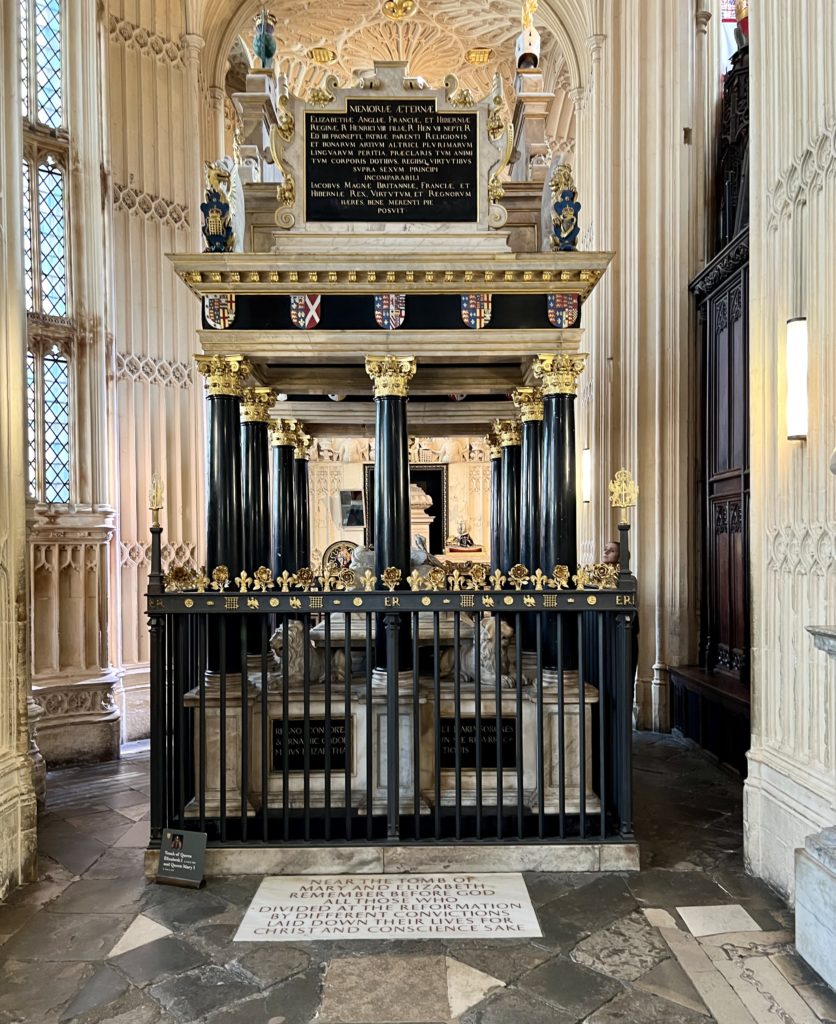
7. Royal Tombs : Who Is Buried In Westminster Abbey?
Many monarchs are memorialized with impressive tombs and monumental effigies in Westminster Abbey. Some of them were among the most important works of art from their age.
Times change though. Many recent royal burials are marked only by floor stones.
The royal tombs are mostly in the Henry VII Chapel, though not all. 15 kings and queens are buried in the Henry VII Chapel.
Henry VII and his wife, Elizabeth of York, share a magnificent Renaissance tomb. Their bronze gilt effigies were sculpted by Florentine artist Pietro Torrigiano, who had studied with Michelangelo . It lies behind the altar.
You’ll also find Henry VII’s granddaughter, Queen Elizabeth I. She was the daughter of the infamous Henry VIII and his second wife Anne Boleyn. Elizabeth’s royal orb symbolizes she was queen of the entire globe.
She’s buried in the chapel along with her half-sister, Mary I. At odds in life, they ironically lay together in death.
Henry VII’s mother, Margaret Beaufort, is also buried in the chapel. She was a rather evil (though ostensibly pious) lady who helped Henry VII secure the throne.
Beaufort likely would have been a CEO in today’s world. She died in 1509, shortly after Henry VIII’s coronation.
King James I is also buried in the vault beneath the monument. His tomb was only discovered in 1867 when Dean Stanley searched and excavated the royal tombs looking for James’ final resting place, which had gone unrecorded.
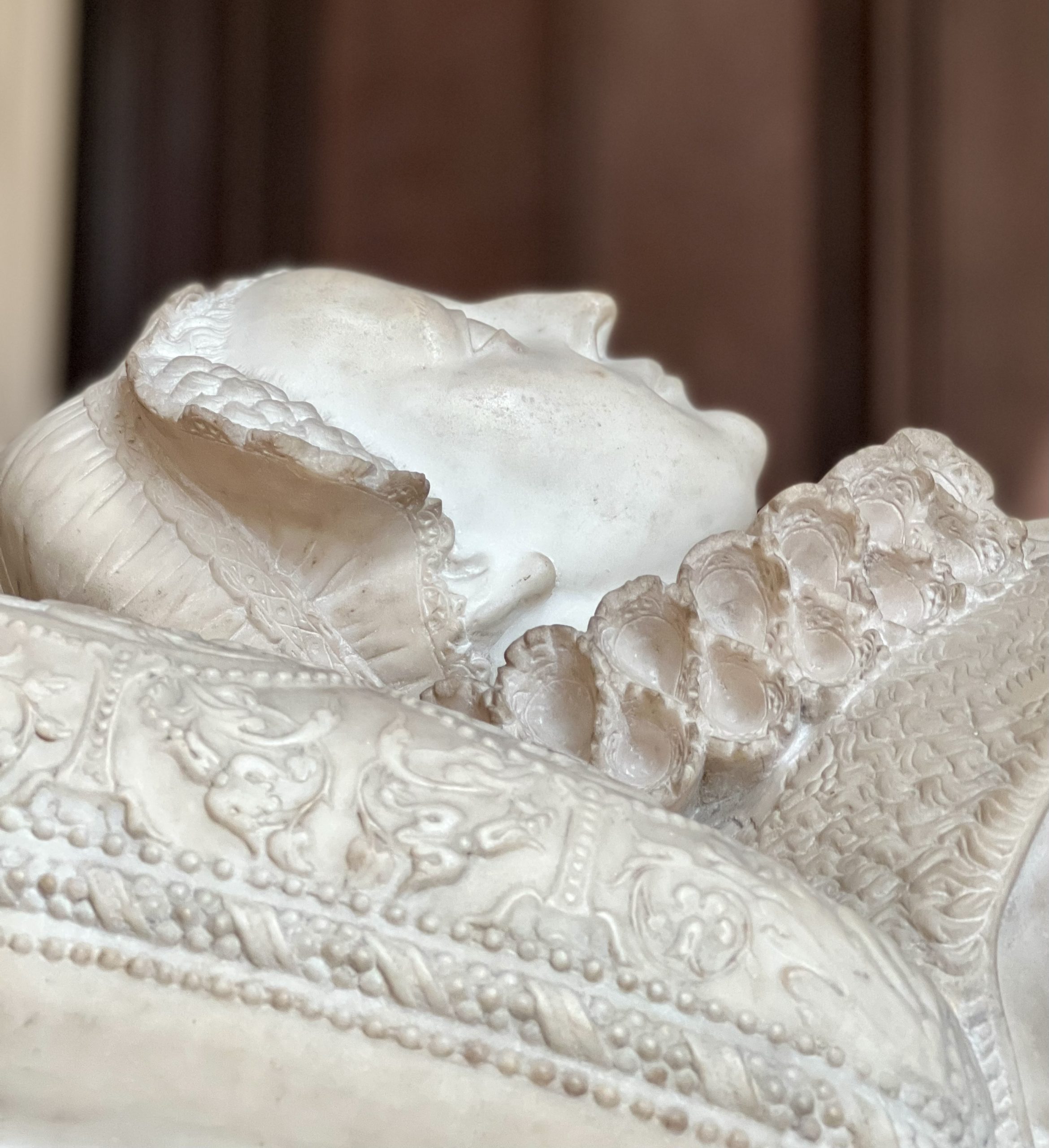
Mary Queen of Scots, who Elizabeth I executed for treason, is also buried there. Her tomb is grander than Elizabeth’s.
Having neglected his mother in life, Mary’s son James I commissioned a costly and majestic white marble monument in memory of his mother.
The Stuart monarchs and Hanoverian monarch are also buried there.
Another famous funerary item in the chapel is a white marble urn, which reputedly contains the remains of the “Princes in the Tower,” Edward V and his younger brother Richard, Duke of York. The casket was designed by the architect Christopher Wren.
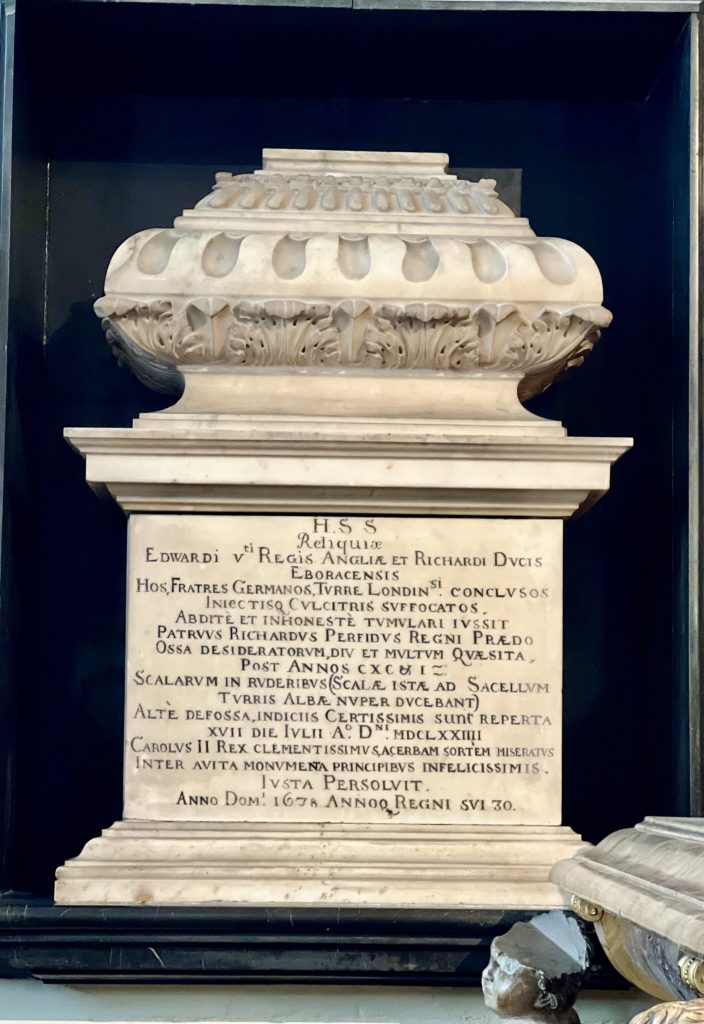
The princes were the sons of Edward IV, the brother of Richard III. While living in the Tower of London , the two princes disappeared in 1483.
Their uncle Richard III was subsequently crowned king. The princes’ fate is the greatest true crime cold case in English history, which I’ve written about at length .
Thanks mostly to posthumous Tudor propaganda, Richard III was accused of murder. In 1674, nearly two centuries later, workmen discovered the bones of two unidentified children in the tower.
It was immediately assumed the bones were those of the two princes. They were placed in the urn in the abbey on the order of Charles II. However, there’s no archeological, historical, or scientific evidence for that assumption.
You can also find the remains of the boy king Edward VI. He was Henry VIII’s only surviving son with his third wife Jane Seymour.
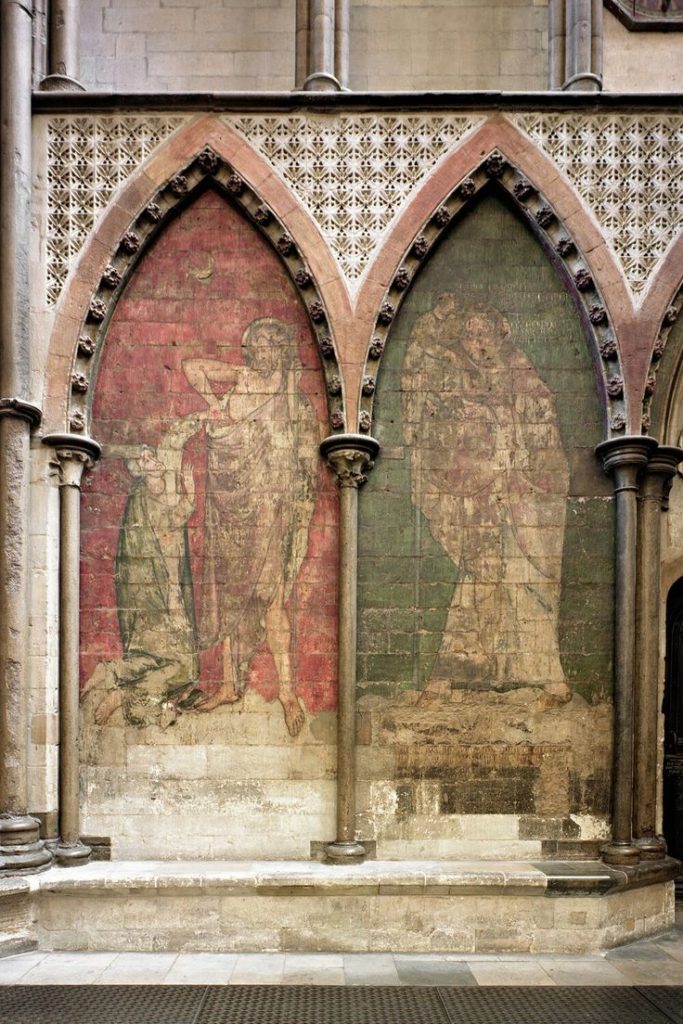
8. Medieval Paintings
In the south transept, you’ll find some important medieval paintings. The paintings depict the incredulity of St. Thomas and St. Christopher carrying the baby Jesus.
In 1936, they were discovered behind two monuments during cleaning in the south transept.
The paintings are thought to date from around 1270. They’ve been attributed to Master Walter of Durham, the King’s Painter under Henry III.
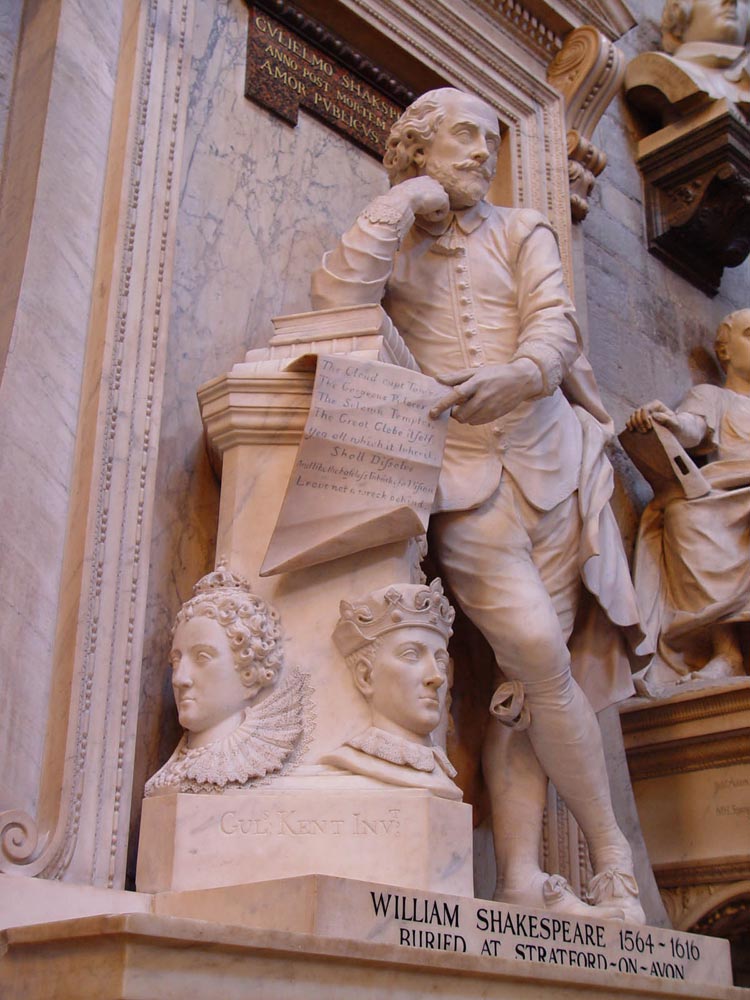
8. Poet’s Corner
The Poet’s Corner is also in the south transept. For lovers of English literature, strolling through Poets’ Corner can be a pilgrimage in itself.
This is where men and women of letters have been buried or commemorated for centuries. The tradition began almost by accident.
Geoffrey Chaucer was the first person buried in this part of the Abbey. Not because he was a poet, but because he worked at Westminster Palace next door.
The poet Edmond Spenser wanted to be buried near Chaucer. The precedent was set. The Poets’ Corner was born.
Other famous writers commemorated in Poets’ Corner are William Shakespeare, Robert Browning, Lord Bryon, Alfred Lord Tennyson, Lewis Carroll, CS Lewis, Charles Dickens, Rudyard Kipling, Thomas Hardy, Henry James, and Jane Austen.
There are even actors like Lawrence Olivier.
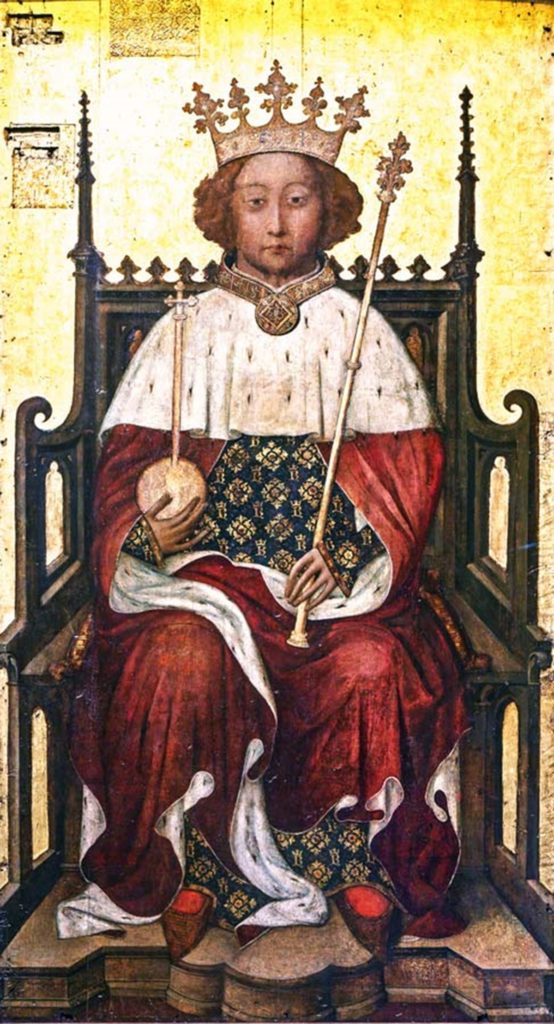
As space became more limited in the Poet’s Corner, names of newly honored writers are sometimes placed in stained glass or marble plaques. This is the case for Lord Byron, Oscar Wilde, and Christopher Marlow.
9. Painting of Richard II
A 14th century painting of Richard II hangs in the west end of the Abbey. You might miss if you don’t seek it out.
It’s an incredibly important work of art. It was the first portrait of an English sovereign to be painted in his lifetime. It’s one of the best medieval paintings in existence in any country.
The panting is 7 x 3.5 feet, but seems larger.
You can compare the painting to the king’s tomb effigy. His tomb is a double tomb with his Queen Anne of Bohemia. It’s near the shrine of Edward the Confessor.
For a period in the 18th century, a hole appeared on one side of the tomb. Visitors put in their hand, stealing his bones.
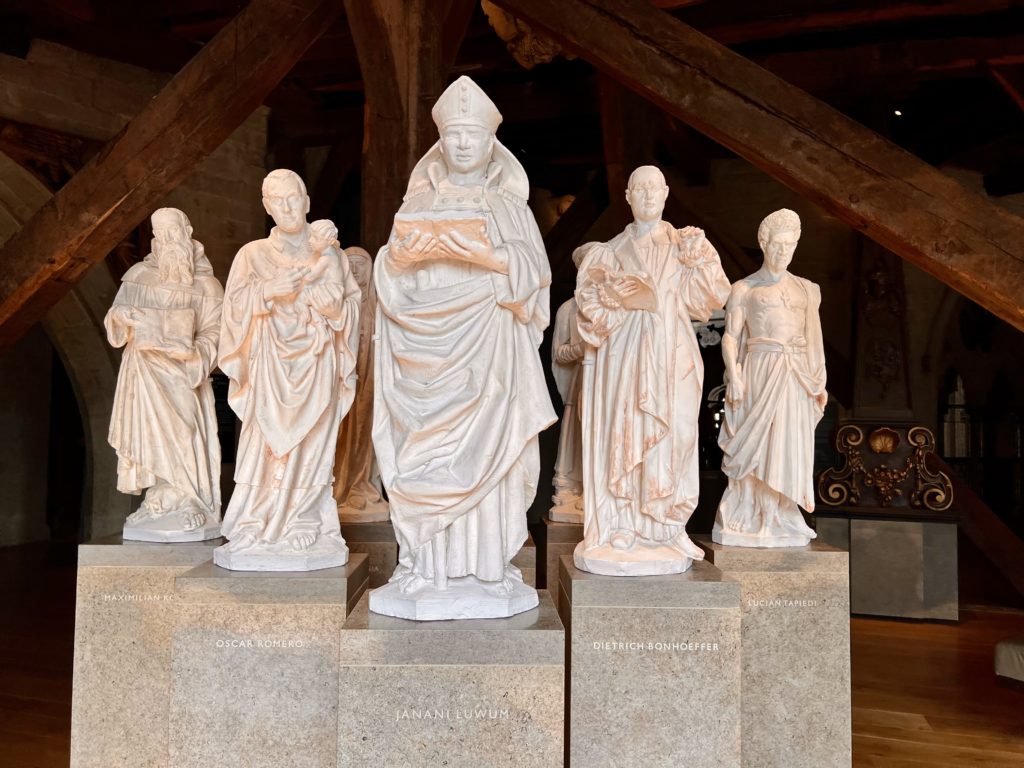
11. Queen’s Diamond Jubilee Galleries
You’ll want to pay the extra 5 pounds to climb up to the Queen’s Diamond Jubilee Galleries in the abbey’s Triforium. A triforium is a gallery above the arches of the nave and within the thickness of an inner wall.
The galleries opened to the public in 2018, after being hidden away for 800 years. They’re accessible from the new Weston Tower, the first addition to the abbey since 1745.
The galleries are in the eastern Triforium, which dates from 1250. The space were initially intended to be used for chapels. But high chapels fell out of fashion. The space was left empty.
The galleries have their own entrance to the right as you enter the abbey near Poet’s Corner. You can buy a ticket when you arrive at the abbey.
The galleries are 52 feet above the ground floor. It’s 100+ steps to the top.
You’ll have beautiful views of the abbey nave from atop. There’s also a lift, if you don’t want to hike up.
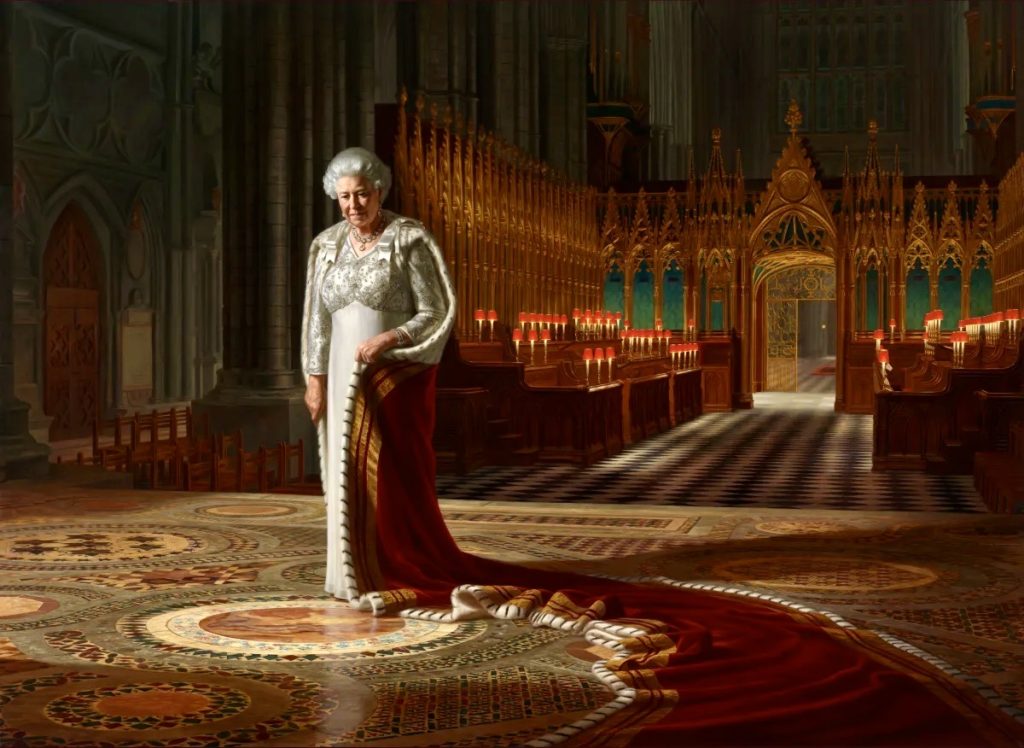
Over 300 special exhibits tell the story of the abbey’s 1,000 year history. You’ll see funeral effigies of the monarchs, rare books, tapestries, crowns, sculptures, swords, and coronation capes. You can even see the marriage license of William and Kate.
One of the most famous objects on display is the Westminster Retable. It was originally designed for Henry III’s high altar in 1269. It’s made of painted and gilded wood and has undergone extensive conservation.
There’s also a remarkable funeral effigy of Henry VII. It was likely modeled on his death mask, yielding an accurate physical representation. It may have been created by Italian artist Pietro Torrigiano.
There’s a massive 9 x 11 feet portrait of Elizabeth II by Ralph Heiman. It shows her on the Cosamati pavement in front of the high altar, on the exact spot where she was crowned in 1953.
Unfortunately, you can’t take pictures in this part of the abbey. The guards are especially vigilant in the area where you look down into the nave.
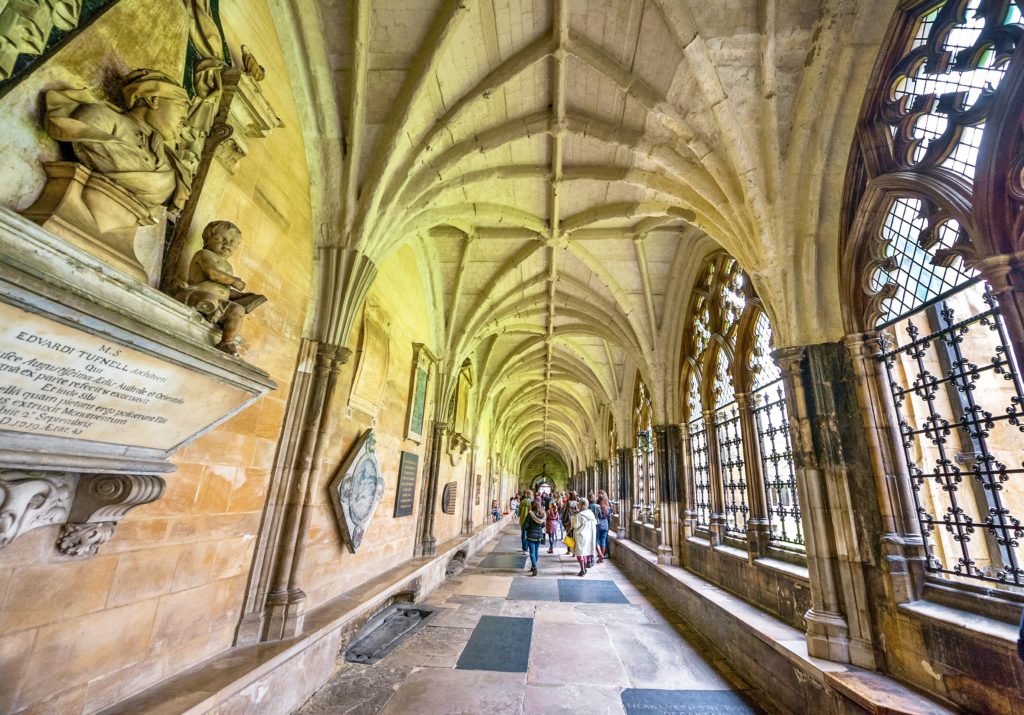
12. Cloisters
On the southeast side of the abbey as you’re heading out, you’ll find the place where the monks formerly lived, the medieval cloisters. They date from the 13th and 14th century.
The cloisters also housed the monks’ library and were used for recreation.
13. Chapter House
Off the east cloister is a vestibule leading to the Chapter House. This room is one of the largest chapter houses in Britain.
This is where the monks would meet each morning to listen to prayers and get their assigned duties.
The Chapter House was most likely built between 1246-55 on the orders of Henry III. Henry wanted his Chapter House to be “as the rose is the flower of flowers.”
The floor has medieval tiles. The beautiful tiles are some of the finest medieval tiles pavements in England. They were laid as a series of “carpets” running west to east from the entrance.
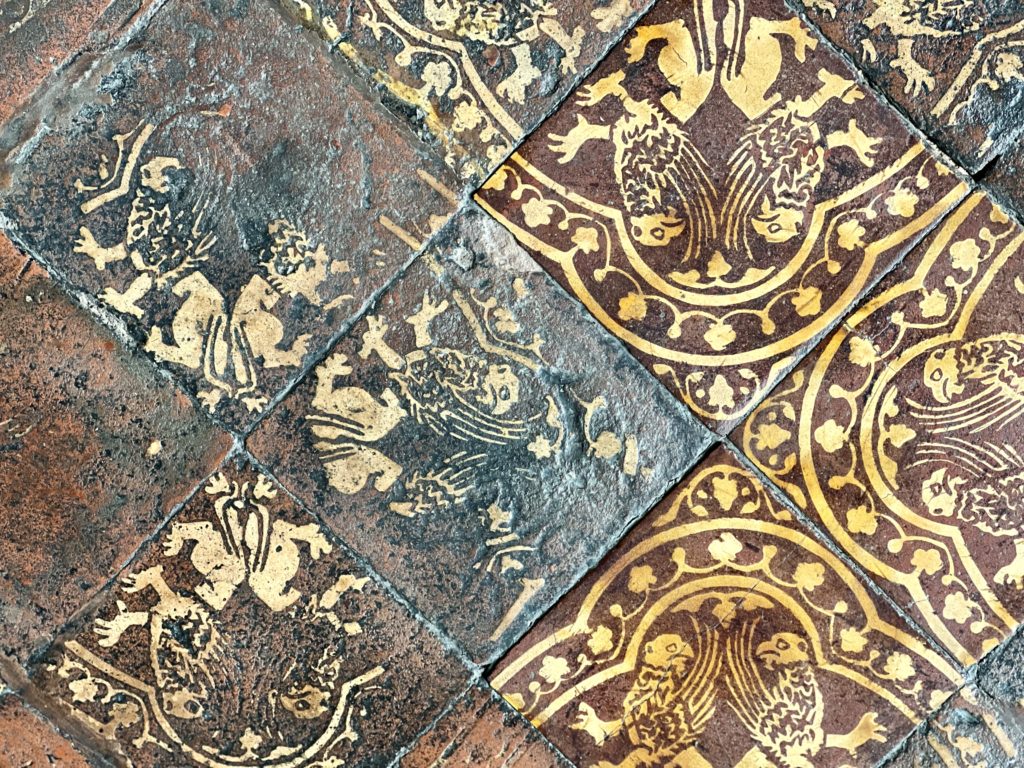
The designs were stamped via a pattern into clay and then filled with impressions with a lighter colored clay. You can see the coats of arms of Henry III with the three lions of England.
Some rare medieval paintings also survive on the Chapter House walls. They were painted around 1400 in the International Gothic style of art.
These paintings are the best preserved paintings from this era in all of England. They depict scenes from the apocalypse in a series of visions describe by St. John.
In the early 14th century, the crypt below the chapter house was used to store the regalia and royal money chests.
But it was broken into during the reign on Edward I when he was away on campaign. Though to be an inside job, nearly 50 monks were sent off to the Tower of London. They were only exonerated after a long trial.
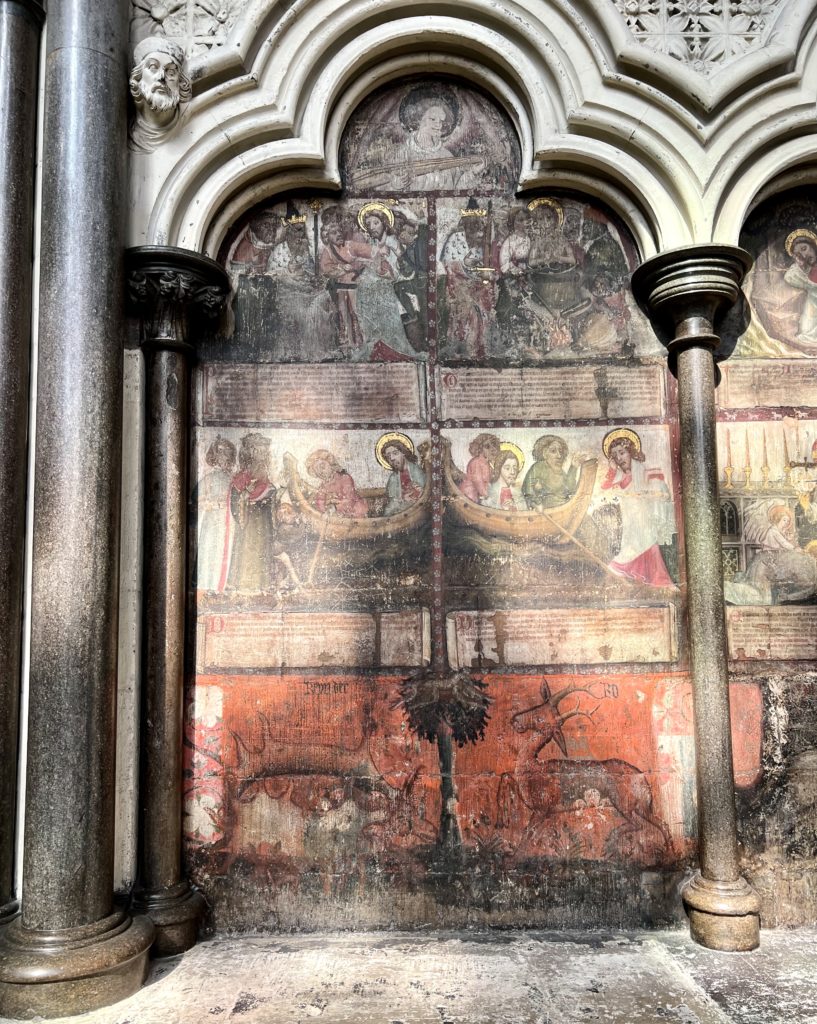
14. Pyx Chamber
The ancient Pyx Chamber is a room off the southwest corner of the cloisters. It dates from somewhere between 1065-90. It was originally the sacristy for Edward the Confessor’s old church, and is one of the few surviving remnants.
The Pyx Chamber has round arches and massive supporting columns. The chamber has a 13th century tiled floor.
If you walk through the dark rooms, you’ll come to the Little Cloister. This was the monks’ infirmary.
Beyond the Little Cloister is the abbey garden. At 900 years, it’s the oldest garden in England. This was where the monks grew herbs to make medicine. The garden is open to the public on certain days on the week.
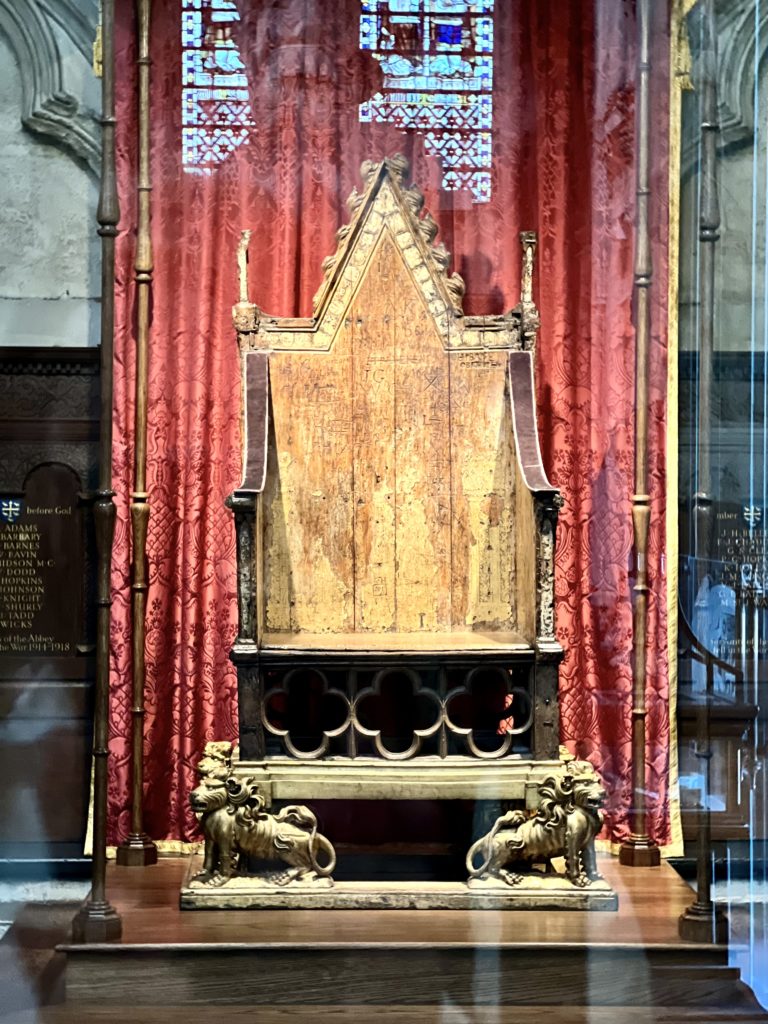
10. Coronation Chair
The Coronation Chair is on display just before you leave Westminster Abbey. It’s the oldest piece of furniture in Britain still used for its original purpose.
While coronations have taken place at the Abbey since 1066, the chair has only been used for the last 700 years. The lions around the base were added in 1727.
Originally, it was sumptuously decorated and gilded. But it’s been rather abused over the years, with graffiti carvings and the like.
The chair once held the famous Stone of Scone, also known as the Stone of Destiny. In 1296, the stone was captured by Edward I as spoils of war, taken to the abbey, and fitted into the wooden chair.
In 1996, the stone was restored to the people of Scotland and moved to Edinburgh Castle. But it will return for the next coronation upon the death of Elizabeth II.
Unfortunately, you can’t get too close to the Coronation Camber, which is behind glass. But that’s understandable given its age and significance.
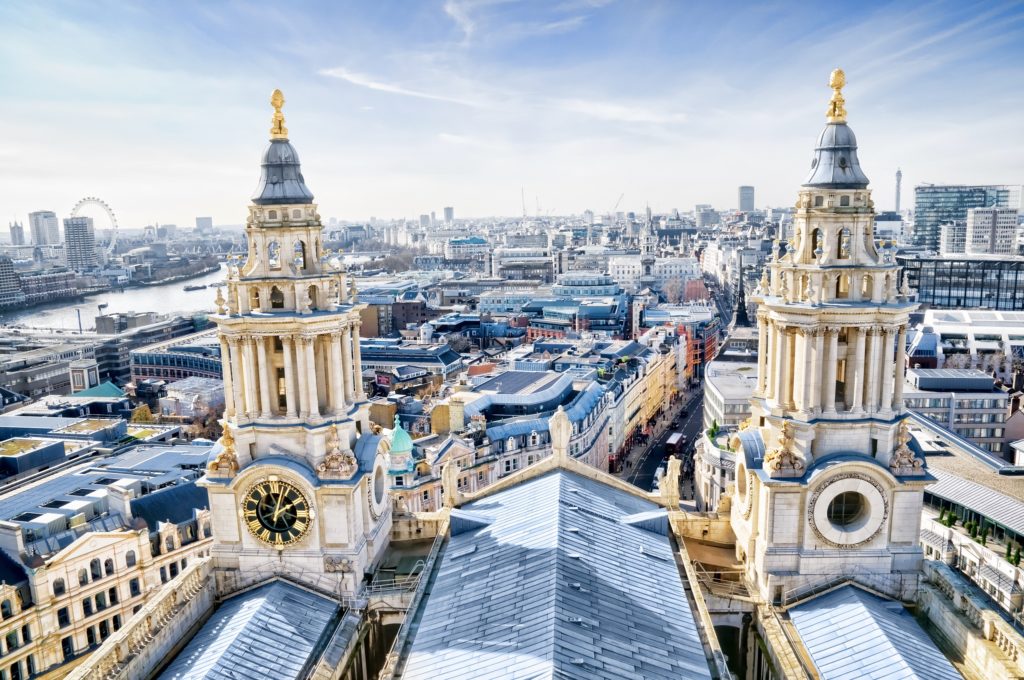
Practical Guide & Tips For Westminster Abbey
Here are some must know tips for visiting the Westminster Abbey.
1. Should You Visit Westminster Abbey Or St. Paul’s Cathedral?
Ideally, you should visit both of these iconic landmarks on a visit to London. But you may not have time. And they could not be more different. If pressed, I would pick the abbey.
Westminster Abbey is more centrally located in the heart of the city. It’s steeped in history and will appeal to lovers all of things ancient and Gothic.
In addition, if you are interested in royal history, the abbey is where you can pay homage to your favorite king or queen.
St. Paul’s is also a worthy bucket list attraction and Christopher Wren’s defining architectural masterpiece. The Baroque architecture, mosaics, monuments, and the dome itself are all stunning.
One key advantage St. Paul’s has over Westminster Abbey are the viewing galleries in the dome. You have fantastic views of all of London. You can read my complete guide to St. Paul’s Cathedral .
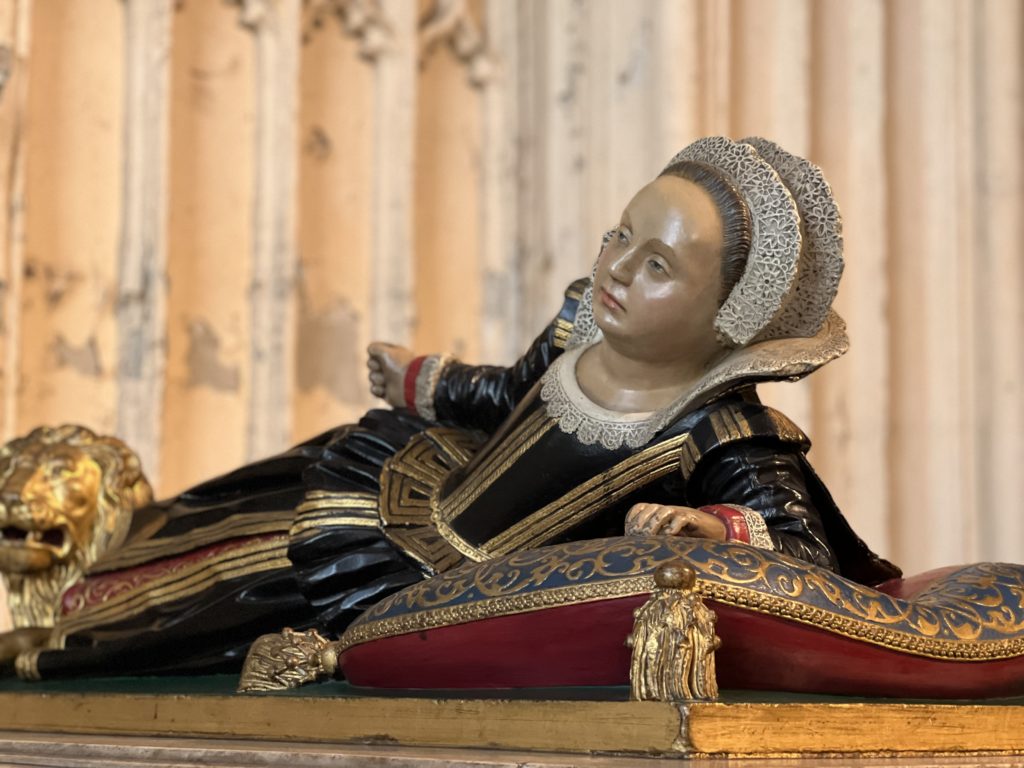
2. Where To Stay Near Westminster Abbey
Want to stay near Westminster Abbey? It’s a good area for sightseeing with many attractions nearby.
The best place to stay is the St. Ermin’s Hotel , a place of sophistication and elegance. You enter through a tree-lined courtyard.
The Guardsman is also a fine choice. It’s a beautiful boutique hotel in heart of London with the feel of a members club. It has a location fit for kings and queens near Buckingham Palace.
Taj 51 Buckingham Gate has five star luxury suites, with restaurants and an in house spa.
3. When To Visit Westminster Abbey
Try to arrive about 20 minutes before opening time at 9:30 am. There may already be a line. But tourist groups will start coming later and the abbey will be even more crowded.
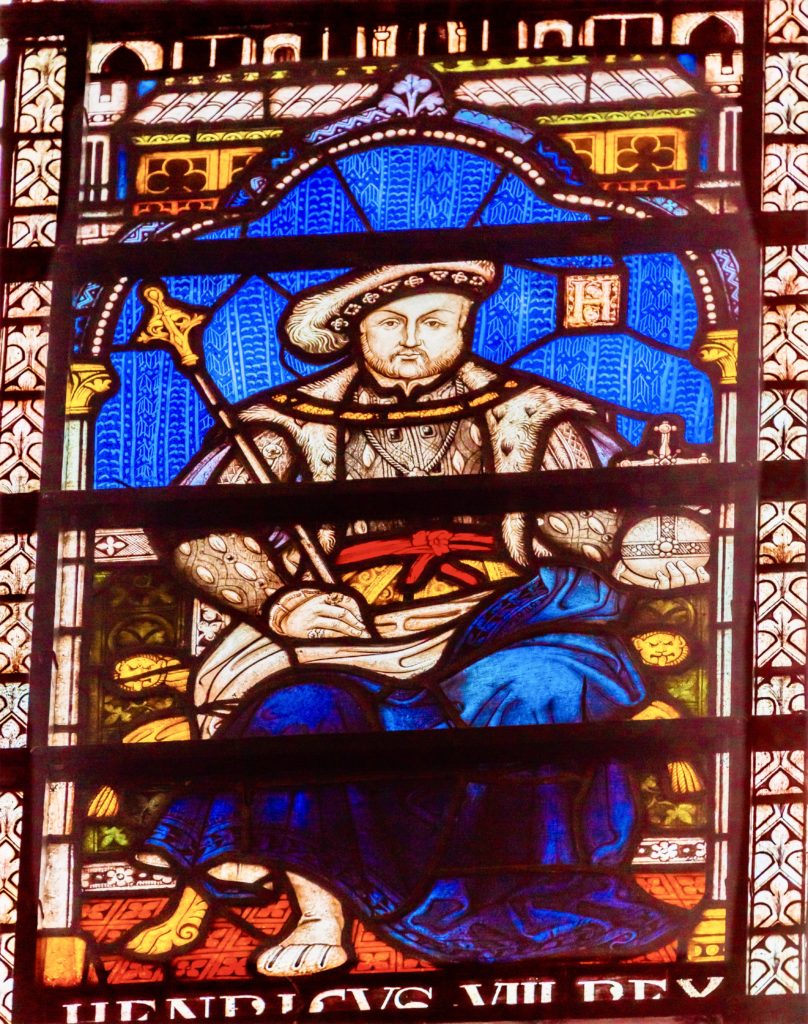
4. How Long To Visit Westminster Abbey
This totally depends on your interest in the individual monuments and effigies. I estimate 90 minutes to 2 hours for most people.
But you could easily spend 3 hours there, if you have a more leisurely schedule and want to read everything.
5. Verger Tours Of Westminster Abbey
Vergers are abbey staff who attend to the cathedral’s important visitors and help the clergy. Verger tours last approximately 90 minutes.
You can only book one at the information desk after your arrival at the abbey. You can’t book them online. They cost an additional £10.
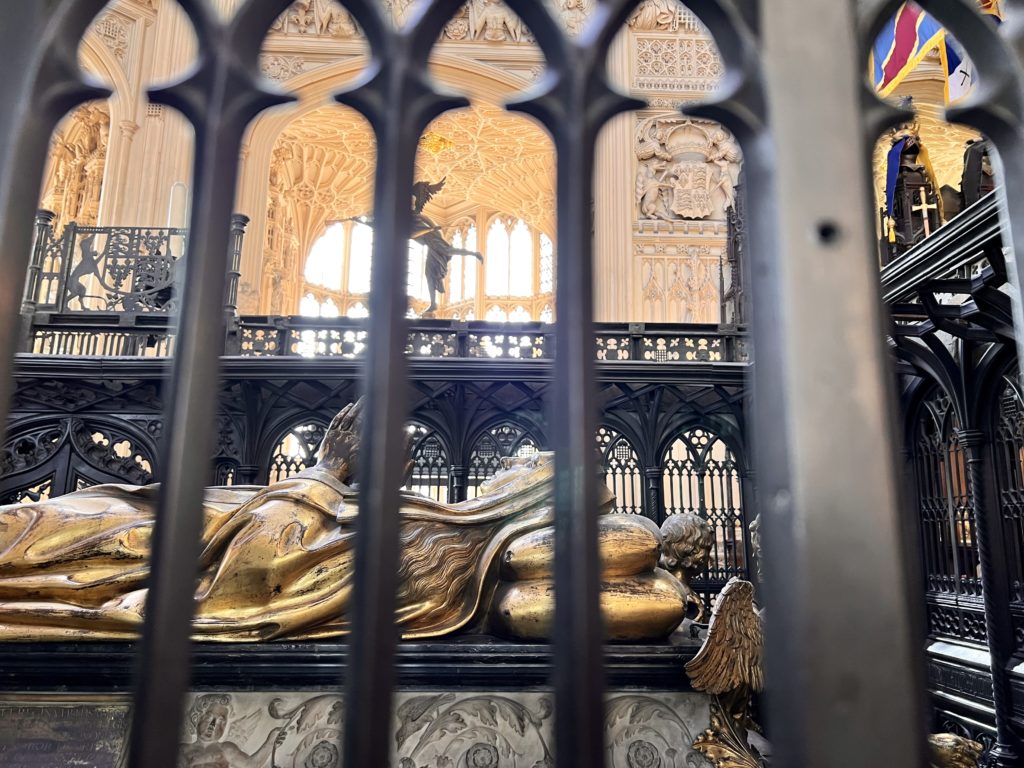
I highly recommend taking one if you can! The vergers are incredibly knowledgable abbey experts. They can take you to places not accessible on a general visit, such as the tomb of Edward the Confessor.
But you need to plan your visit in advance to coincide with the tours. They leave at 11:00 am, 11:30 am, and 2:00 pm.
6. Other Practical Information
Address : 20 Deans Yard London
Hours : Click here for hours. The abbey isn’t open on Sunday.
Ticket Prices :
The standard ticket price for the abbey is £ 25. You have free entry with the London Pass , but cannot enter via the fast trick line. It’s free to visit the abbey during a service, but you cannot sightsee. An audioguide is free with admission.
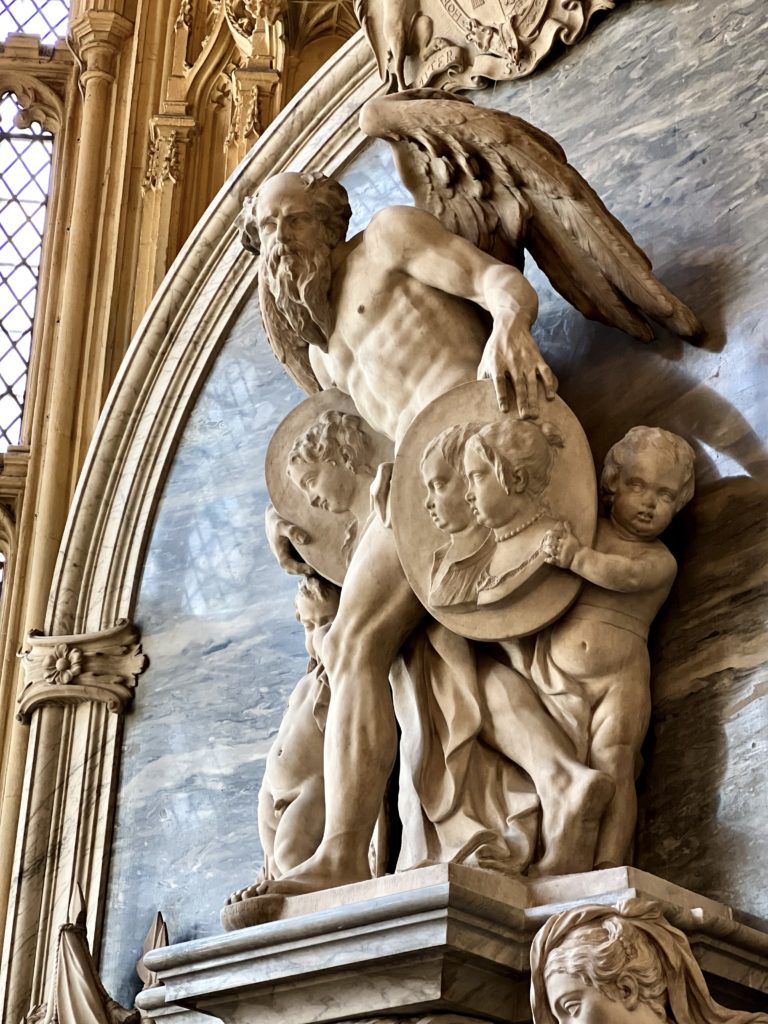
Tube Station : Westminster is the closest. Victoria and St. James are the next nearest.
Westminster Abbey App :
The abbey has a multimedia guide that you can download in advance on your phone.
Photography : You can take photos for non-commercial use in the abbey, but not in the Queen Galleries.
I hope you’ve enjoyed my guide to Westminster Abbey. You may enjoy these other London travel guides:
- 3 Days in London Itinerary
- 5 Days in London Itinerary
- One Day In Bath Itinerary
- Guide To Free Museums in London
- Guide To the National Gallery of Art
- Harry Potter Places in London
- Guide To the Churchill War Rooms
- Guide To St. Paul’s Cathedral
- Guide To The Wallace Collection
- Tourist Traps To Avoid in London
- Guide To the Tower of London
If you need a guide to Westminster Abbey, pin it for later.
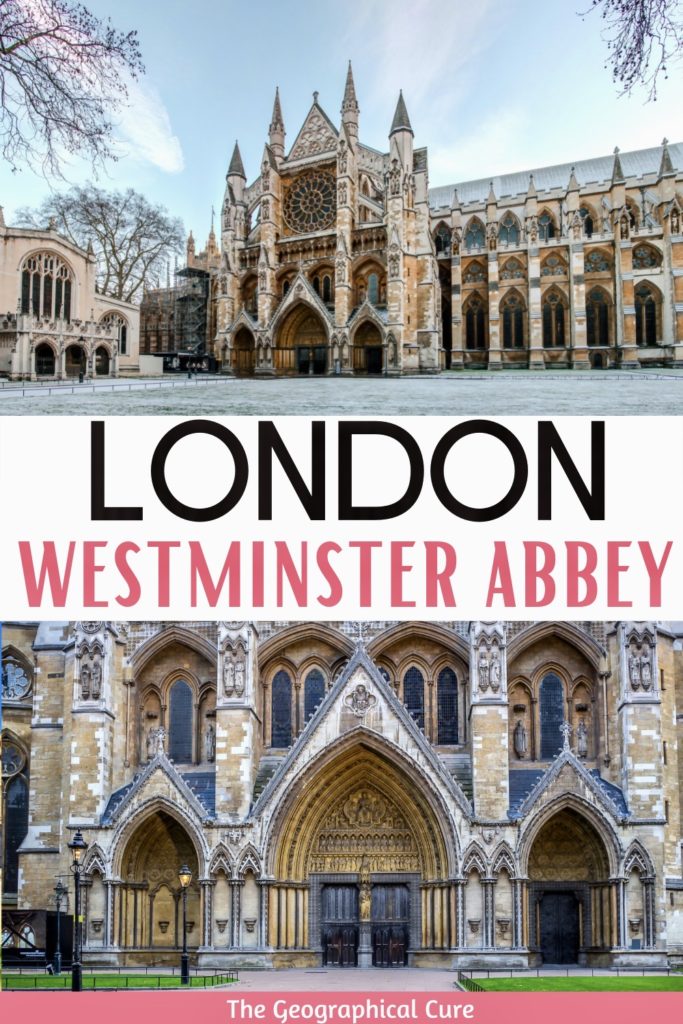
Leave a Comment Cancel reply
Save my name, email, and website in this browser for the next time I comment.
Last Updated on February 19, 2024 by Leslie Livingston
RELATED LINKS
On this page, most popular sights, tickets & sightseeing passes, things to see and do, from our blog.

OPEN TOP SIGHTSEEING BUSES
London tours, popular tours from london, free self-guided walks.

- Guide to hotel areas
- Bed & breakfast
- Backpacker hostels
- Airbnb London
- Central London tours
- Tours from London
- Hop-on hop-off bus tours
- Harry Potter tours
- Stonehenge tours
- Downton Abbey tours
- Windsor tours
- Cotswolds tours
- Private tours
- Ticket & pass offers
- Central London attractions
- Attractions outside London
- Harry Potter attractions
- Tower of London
- PUBLIC TRANSPORT
- London City
- London Southend
- Southampton
Westminster Abbey
Setting for every coronation since 1066 and for numerous royal weddings.
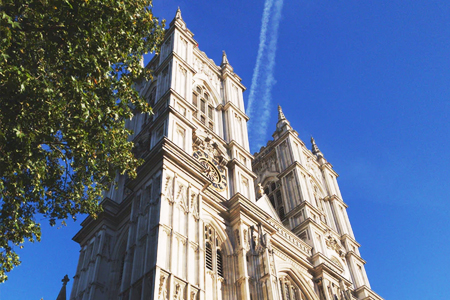
Westminster Abbey is England's main religious building. Originally built in Saxon times in the 7th century, its real importance dates from 1065 with Edward the Confessor setting up his throne here.
Since that time Government has always been centred on Westminster, with commercial activity centred on the City of London to the east.
Every year Westminster Abbey welcomes over one million visitors and is very much part of the standard tourist trail complete with large coach parties. It should be remembered the Abbey is very much a working church. It is closed Sundays for worship and restrictions are regularly applied ad hoc in response to religious events.
For a really special day out we also offer a full Royal London Experience: Royal London tour with Westminster Abbey & Afternoon tea .
For more information on Royal days out in London see our page: Royal Palaces and Castles in London .
BOOK WESTMINSTER ABBEY TICKETS BOOK Royal London with Westminster Abbey & Afternoon tea History of Westminster Abbey Opening times Location Ticket info Westminster Abbey with an attraction pass/promo Westminster Abbey & hop-on bus Guided self walking tour

WESTMINSTER ABBEY ENTRANCE TICKET WITH AUDIO GUIDE
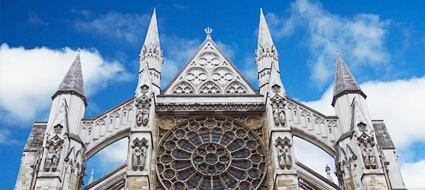
Book Westminster Abbey tickets including audio guide
• Traditional coronation site for English monarchs and burial place of kings, queens, statesmen and poets • Admission to Westminster Abbey • Multimedia guide in 14 languages
ROYAL LONDON TOUR WITH WESTMINSTER ABBEY ENTRANCE & AFTERNOON TEA
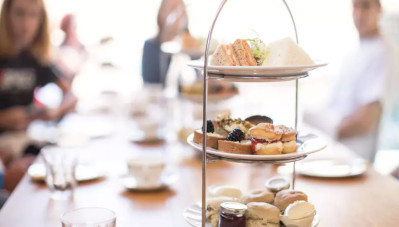
Half Day Coach Tour - Royal London Tour with Westminster Abbey & Afternoon Tea
• Royal London tour • Admission to Westminster Abbey • Expert Blue Badge Guide • VOX personal headsets • Afternoon Tea at the Cellarium Café & Terrace
WESTMINSTER ABBEY ENTRANCE WITH FISH & CHIPS MEAL
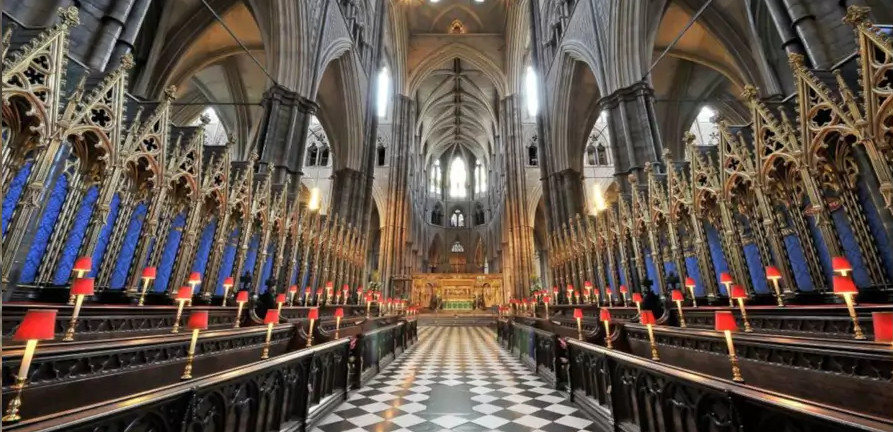
Westminster Abbey with Fish & Chips meal at Poppie's
• Admission to Westminster Abbey • Meal in Poppie's Fish & Chips restaurant • Multimedia guide • London in Your Pocket App Access
Westminster Abbey history
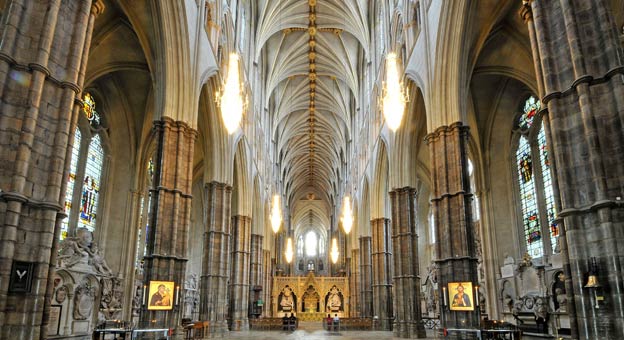
The present church was begun by Henry III in 1245. By the 16th Century in Tudor times, Westminster Abbey had become the setting for coronations, royal marriages and funerals.
Every monarch since William the Conqueror, with the exception of Edward V and Edward VIII who were never crowned, has been crowned in the Abbey.
The first documented coronation here was that of William the Conqueror in 1066, the most recent was that of Her Late Majesty Queen Elizabeth II on 2 June 1953. The decision to televise the coronation of Elizabeth II in 1953 made it possible for the general public to witness the ceremony in its entirety for the first time.
The Benedictine monastery at Westminster was dissolved in 1540 as part of the impact of Henry VIII's creation of the Church of England breaking away from the Catholic Church. Since then Westminster Abbey has just performed the role of church.
Westminster Abbey opening times
Westminster Abbey is usually open to visitors from Monday to Saturday throughout the year. Opening time is 9.30am and closing time 3.30pm on Wednesdays there is late opening to 6pm.
As a fully working church, Westminster Abbey is subject to closures at short notice, so please check opening times on the official Westminster Abbey website prior to visiting.
On Sundays and religious holidays such as Easter and Christmas, the Abbey is open for worship only. However, all are welcome and it is free to attend services.
Westminster Abbey closes for visiting one hour after the published entry closure time, so it is recommended you give yourself plenty of time.
How to get to Westminster Abbey
Westminster Abbey is located on Parliament Square facing the Houses of Parliament and Big Ben. The London Eye, 10 Downing Street, London Dungeon and Churchill War Rooms are major London attractions within 5 minutes' walk. Buckingham Palace is a 10-minute walk across St James's Park.
Westminster Underground Station is on the other side of Parliament Square to Westminster Abbey. Trains on the Circle, District and Jubilee Lines stop at Westminster.
Hop-on, hop-off buses & river services
All of London's hop on, hop off sightseeing buses have stops at Westminster Abbey.
Westminster Pier is on the other side of Parliament Square by Westminster Underground Station and is one of London's busiest river service piers with many services including the very popular service to the Tower of London .
Tickets, queues and audio-guides

Westminster Abbey is one of London's main visitor attractions, the busiest time of all for visitors is July and August but it is busy at all times.
Long entrance queues are a normal sight on arrival.
Best times for independent visitors is to be there for opening before the tour groups and school parties start arriving.
On Wednesday afternoons the Abbey is normally open until 6pm - this is not well publicised and for many the best part is that no groups or tours are allowed inside at these extended hours.
Audio-guides are free with your individual entry tickets. Audio guides are available in British Sign Language, German, French, Spanish, Italian, Russian, Portuguese, Polish, Dutch, Hungarian, Mandarin Chinese, and Japanese as well as English. You can download the shortened version of the guide on your mobile or tablet, or use one of the devices from Westminster Abbey. English language commentary is by Oscar-winning actor, Jeremy Irons.
Ticketing is straight forward with concessions for children and seniors and no discounting, including on-line.
You can purchase your tickets in advance on-line where you have to stipulate your visit date.
Westminster Abbey & London's attraction passes and promotions
Railways 2 for 1 Promotion - The railways 2 for 1 entrance promotion is valid at Westminster Abbey with the printed voucher and a qualifying railway ticket. You need to pre-book your tickets in advance online.
The London Pass - Westminster Abbey is supported by London's most popular attraction pass, for full details follow the banner link below: (with over 80 top London attractions). Top attractions on the London Pass list include the London Zoo , Westminster Abbey, St, Paul's , View from the Shard and the Tower of London . The London Pass offers incredible savings over buying individual attraction tickets.
Go City London Explorer Pass - this pass is similar to the London Pass only instead of allowing entry for a set number of days, it gives entry for up to 60 days, and you purchase by the number of attractions you wish to visit.
To purchase either of these passes follow the banner links below.

LONDON PASS BY GO CITY
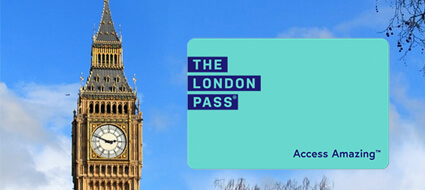
The more you visit, the more you save
• Access 80+ London attractions including the Tower of London, London Zoo, Thames River Cruise, Tower Bridge, St. Paul's, Westminster Abbey, The View from Shard, Windsor Castle, a hop-on, hop-off bus tour, and many more... • 1, 2, 3, 4, 5, 6, 7 and 10 day passes available.

GO CITY LONDON PASSES

Save up to 50% on top London attractions
• Choose from two passes: All-Inclusive (unlimited) and Explorer (over 60 days) • Attractions and tours including: Up at The O2, Tower of London, Big Bus hop on, London Zoo, View from the Shard, City Cruises, Westminster Abbey, St Paul's and more...
Combine Westminster Abbey with a hop-on hop-off sightseeing bus ticket
Golden Tours is one of the three main hop-on, hop off sightseeing bus companies in London. A great package is to combine Westminster Abbey with a hop on bus tour, saving you pounds on purchasing separately. Hop on tours are excellent for your first day in London, quickly getting you up to speed and orientated with the layout of London and your guide pointing out sights and destinations you might have not previously considered visiting.
From your hop-on bus tour see sites such as the Tower of London , Shakespeare’s Globe and spectacular Westminster Abbey, as well as, of course, Buckingham Palace , as well as many more iconic London scenes.
With the 24-hr and 48-hr tickets you also get a Thames River Cruise thrown in for free. Cruise from Westminster to St Katharine’s Pier, and soak in panoramic views of the capital’s most iconic landmarks for a sightseeing experience like no other!
All this on top of entry to the 700 year old Westminster Abbey.

WESTMINSTER ABBEY WITH HOP-ON HOP-OFF BUS TOUR
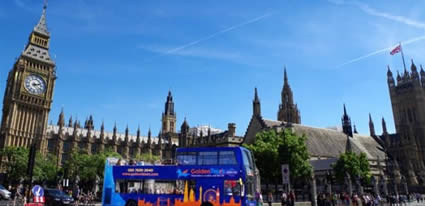
Westminster Abbey tickets with Golden Tours hop-on hop-off sightseeing bus package
• Hop-on Hop-off London Bus Tour & Westminster Abbey • Choice of 24-hr, 48-hr or 1-day tickets • Includes River Boat Cruise • 2 walking tours • Audio guide in 11 languages
Around Westminster Abbey
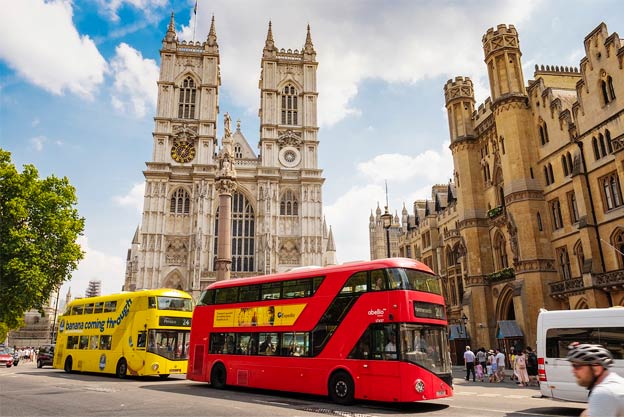
Westminster Abbey is at the heart of a small district that contains lots of London's A1 attractions. Big Ben, Buckingham Palace and the London Eye are just some of the “Must Sees” within a few minutes' walk.
Westminster self-guided walk
Westminster self-guided walk map
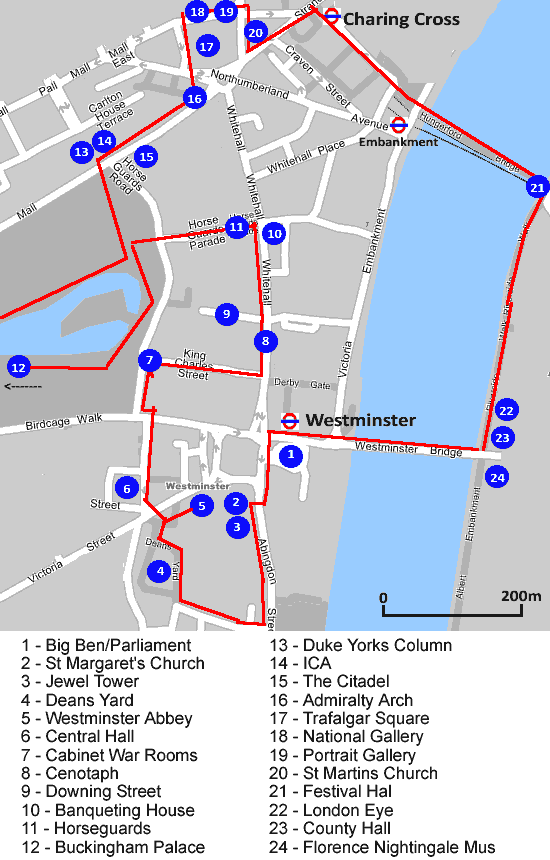
Westminster Palace and the Elizabeth Tower or Big Ben
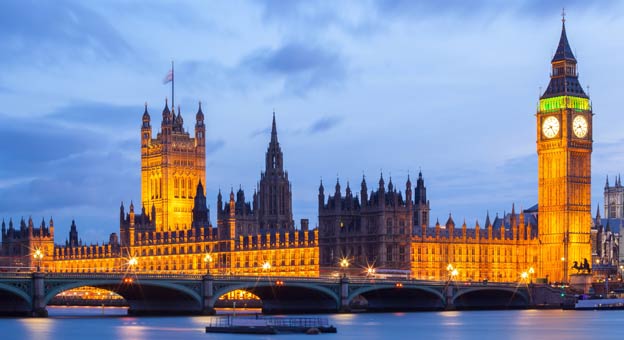
Westminster Abbey stands to one side of Parliament Square. On the other side sits an equally fine building Westminster Palace, commonly known as the Houses of Parliament.
Westminster Palace is where the British government meets to manage Britain's political affairs. The most famous part of Westminster Palace is The Elizabeth Tower, more commonly known simply as Big Ben after the name of the famous bell, an iconic image of London.
When parliament is sitting after dark, a light shines from the top of the Elizabeth Tower. For obvious reasons, security is out in force.
It is possible to arrange tours, visit debates in the chamber, even climb the Elizabeth Tower. However don't expect just to turn up and walk in. For UK residents going through their own MP it is much easier than for foreign visitors who can only tour during the summer opening with tickets purchased in advance.
On the green area in the centre of Parliament Square there are normally political protesters of one sort or another with placards and sometimes tents.
This central area is not solid earth, if a vehicle strayed onto the green there is a chance it may fall into the London Underground line below.
Westminster Palace and Saint Margaret's Church
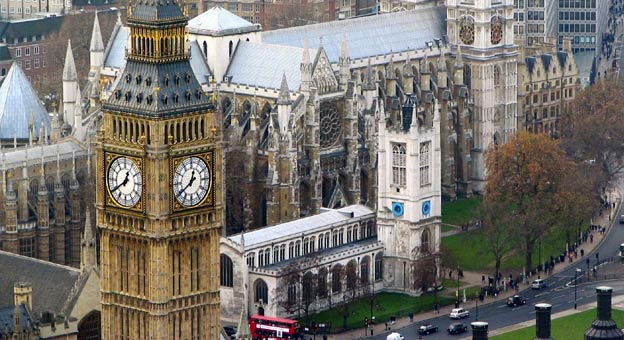
Saint Margaret's Church stands between Westminster Abbey and the Houses of Parliament and is commonly called “the parish church of the House of Commons” on account of it being so handy for politicians on the other side of the road.
Saint Margaret's Church is impressive in its own right, a lot of visitors enter mistaking it for Westminster Abbey next door.
The reason why two such great churches are adjoining is that Westminster Abbey was originally a Benedictine Abbey.
POPULAR LONDON ATTRACTIONS - ADVANCE PURCHASE AND/OR FAST TRACK TICKETS

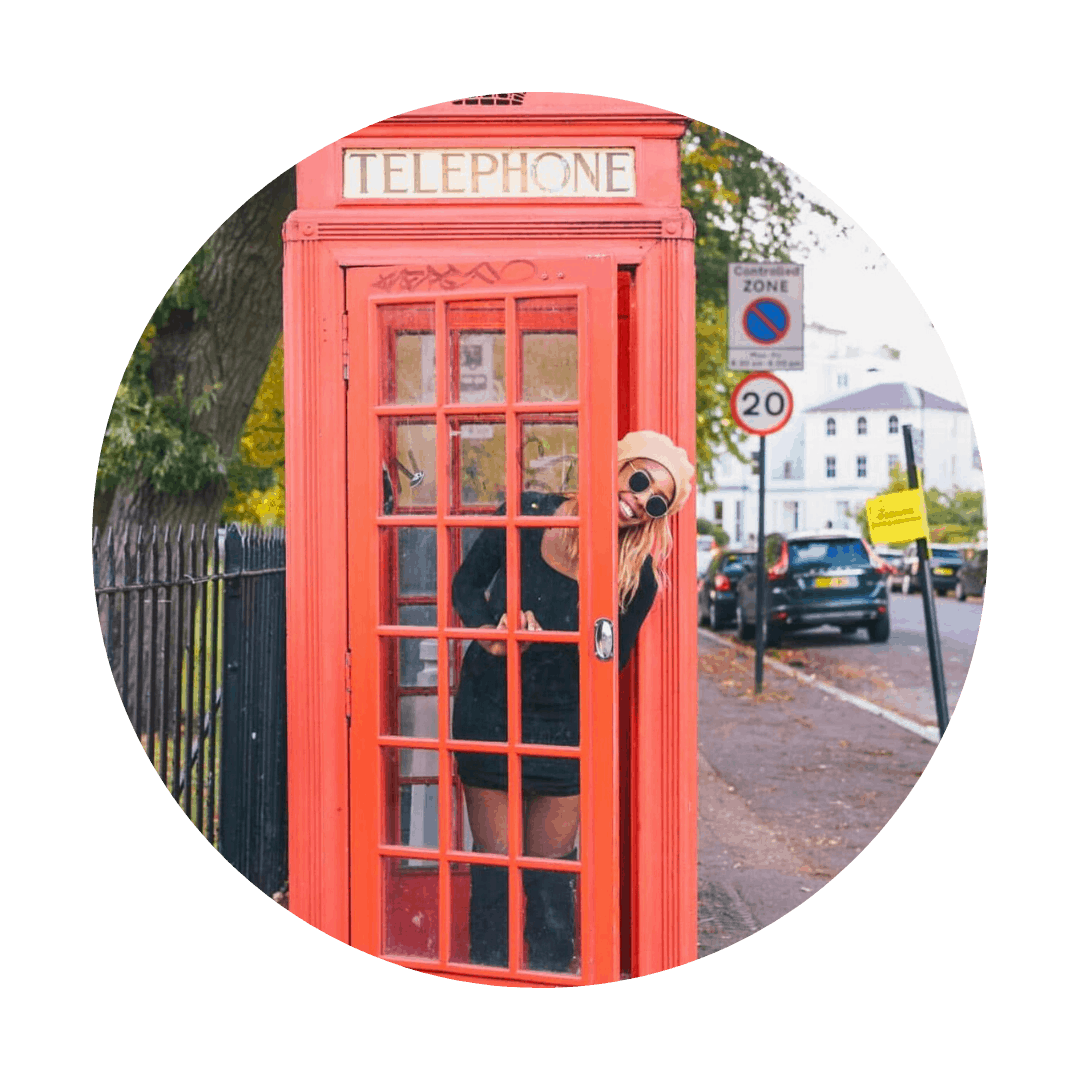
Hi, I'm Candace
Candace Abroad
A London & Travel Blog

London , London Tours & Experiences , London Travel Tips & Inspiration , Travel , UK Travel · March 29, 2024
The Ultimate Guide to Westminster Abbey: Top Tips For Your Visit in 2024 (from a local!)

Table of Contents
Looking for a complete guide to Westminster Abbey? Look no further! Here’s the top tips for your visit to this iconic landmark — from a Londoner!
This post may contain affiliate links. Check out my Disclosure & Privacy Policy for more information.
Are you into royal history? Do you love exploring beautiful churches? Is ticking all the iconic landmarks in London in your bucket list? Well, then you can’t leave this one out!
Westminster Abbey is like the college reunion for Britain’s coolest history makers – think royals, writers, and scientists all rubbing shoulders in one maze of marble magnificence.
And if you’re planning a visit to this royal church, I got the top tips to make sure you have an amazing experience. So, dust off your museum-mode shoes and let’s uncover those hidden gems with this ultimate guide to Westminster Abbey!
The Ultimate Guide to Westminster Abbey

Westminster Abbey in a Nutshell
🪷 Overview: This cultural institution is so much more than a ‘royal church’. It’s where royals, illustrious writers, and notable scientists all converge; as well as an architectural marvel that showcases the nation’s rich heritage.
📍 Location : Steeped in the heart of London, Westminster Abbey is as central as it gets, right next to Big Ben and the Houses of Parliament.
🕙 Opening Hours : This historic Abbey is open from Monday to Saturday (excluding religious events and holidays), with general visiting hours from 9:30am to 3:30pm from Monday to Friday, and from 9:00am to 3:00pm on Saturday.
🎫 Tickets : To visit this iconic landmark, you can book tickets from £29 for adults , and £13 for children (6-17 years). The Abbey is still a working church, and there is never a charge to enter for worship if that’s what you prefer.
P. S. – Entrance is also included on The London Pass , so if you’re visiting London and planning to go to many tourist destinations, this could save you loads! Read More: Go City Explorer Pass vs The London Pass – How to Choose the Best Option For Your London Trip
⏳ Suggested Duration: With a guided tour lasting about 90 minutes, a visit to Westminster Abbey should ideally take around 2.5 to 3 hours to fully appreciate its magnificence.
Interesting Facts about Westminster Abbey

A joyous mix of royal fanfare, genius scribblers, and incredible scientists, Westminster Abbey has been a hotspot for history buffs since it first planted roots in the early 1000s.
It’s definitely so much more than a church: it’s a treasure chest of artifacts, a resting place for important British figures and monarchs (3,500+ lay here!), and a landmark that attracts thousands of visitors every single day.
In fact, it’s one of the most significant and oldest buildings in the country (with the oldest door in the world!), making it a UNESCO World Heritage site.
Over a whopping 40 coronations have echoed through the Abbey’s hallowed halls, including Queen Elizabeth herself. And it contains the tombs of many names you’ll definitely recognise — Sir Isaac Newton, Stephen Hawking, Charles Dickens, to name a few.
Wanna get married here? Unfortunately, only a super elite group of people can do it, including members of the Royal Family, members of the Order of Bath, and residents of the Abbey precinct. The most recent Royal wedding was the one of Wills and Kate!
How to Get to Westminster Abbey

Getting to Westminster Abbey is so easy, you’re probably there already! And as it’s super central, you have more than enough ways to do it.
By Tube: Hop on the Circle or District Line and step off at Westminster Station . It’s as easy as a Sunday roast dinner – just follow the signs for the way out and voil à, you’re there!
By Bus: With an array of numbers including 11, 24, 148, 211, and 87 whizzing past Westminster Abbey, it’s like your very own bus buffet.
By Train: If you’re making tracks from the city outskirts, just aim for either Victoria , Charing Cross or Waterloo stations. It’s a cheeky 15-minute stroll from any of them!
By Boat: If you’re already dreaming about those sunset-on-the-Thames pictures for your Insta, grab a riverboat to Westminster Pier. From there, it’s an easy-peasy 5-minute stroll to the Abbey.
Best Time to Visit Westminster Abbey

The best time to visit this historical honey is mid-week, like a Wednesday or Thursday . You’ll avoid the Monday catch-up crowd and those wild-card weekenders.
Also, try to shuffle in there as the doors swing open or within that last golden hour before they close for that “I’ve-got-this-whole-place-to-myself” vibe.
Obviously, if you happen to be in London during summer, it might be kind of impossible to avoid the crowds. But it’s still worth the try!
Westminster Abbey Dress Code

You’ll be glad to know the Abbey is surprisingly relaxed when it comes to a dress code. It’s a church, not a fashion show after all! However, it’s still a place of worship, so think respectful-chic rather than red-carpet.
Keep the miniskirts, muscle tees, and anything that slides into beachwear territory for the pub afterwards. Instead, go for clothes that let you explore the Abbey with ease, like trusty jeans or flowy trousers, and those sensible shoes that’ll be your saviors on stone floors.
And remember, our lovely London weather likes a good surprise, so layer up or down accordingly. It can get quite cold inside during winter!
Things to See at Westminster Abbey

While most people dedicate an hour or two to this magnificent church, I’d say you can spend an entire day to truly soak the atmosphere in. Here’s a short list (considering the amount of things left out) you can’t miss during your visit to Westminster Abbey!
Coronation Chair
Bet you didn’t know you’d be coming face-to-seat with the oldest piece of furniture in the UK that’s still used for its original intention! Built in 1300s for Edward I, this ‘chair’ has seen the backside of every monarch since 1308.
Tomb of the Unknown Warrior, Newton & Elizabeth I
The symbol of respect honouring all soldiers lost and unidentified in WWI, Isaac Newton’s memorial as a magnificent creation of the Enlightenment, and the marble monument for the Queen’s tomb sharing her final resting place with her half-sis, Mary I.
Of course these are just a glimpse into everything you can see here, but I’d say these are the absolute musts.
The Cosmati Pavement at the High Altar
This 13th-century mosaic is not your average tile job, it’s a medieval masterpiece that boasts precious stones from across the Roman Empire. Oh! And it’s also what the monarchs stand on when promising to rule.
Henry VII Lady Chapel
This spot is practically dripping with history. It’s the burial site for multiple monarchs, including the infamous Henry VIII’s parents. Plus, the ceiling alone is worth more Instagram posts than your brunch at The Ivy.
Poets’ Corner
I personally have a real soft spot for literature, and if you do too, you’re gonna LOVE this corner! It’s like a cosy fireside chat with Dickens, Hardy, and Austen. They may be long gone, but their tales of Victorian intrigue and timeless romance live on.
The Queen’s Diamond Jubilee Galleries
Located way up in the Triforium, it’s only opened to the public in 2018. It’s a trove of royal treasures, hosting a spectacular view of the Abbey. No spoilers, though! You need to discover it yourself, as it’ll blow your socks off!
Think Hogwarts meets tranquillity. Used by the monks for meditation, you’ll feel like you’ve stepped onto a medieval movie set. So it’s definitely a highlight while you’re there.
Visiting Westminster Abbey For a Service

Photo courtesy: Westminster Abbey
You’re not gonna believe this, but I’ve got the insider scoop on how to experience Westminster Abbey without spending a single quid.
Because this is a working church, there is never a fee to enter for worship. So you can opt to visit for one of their ongoing services or for praying!
However, while you can take photographs with your ticket (with no flash, selfie sticks or tripods), you definitely can’t take photos or videos during your worship.
If you ask me, the Evensong is the one you need to experience, as it’s basically the Abbey’s version of a heavenly jam session.
Imagine this: sublime choral music bouncing off those gothic arches while you’re soaking up hundreds of years of history and spirituality. It’s enough to give anyone the feels.
It’s usually around 5pm on weekdays and a bit earlier on weekends, but check their calendar before you go – you don’t want to gatecrash a wedding or royal event… Or do you?
What to Do After Westminster Abbey

If you still have a bit of time to spare after exploring the gorgeous Westminster Abbey, you may want to stick around for some of the other amazing things you can do nearby. These are some (but definitely not all) ideas!
Houses of Parliament & Big Ben
You can’t leave Westminster without cricking your neck gazing up at Big Ben, aka the Elizabeth Tower. Best spot for a selfie? The Westminster Bridge, hands down! Plus, be sure to check out the Houses of Parliament, the epicenter of British politics. They also offer tours!
National Gallery
Step from the history-laden Abbey into the paint-splotched world of the National Gallery! Boasting over 2,300 works – all grand masters, no apprentices – you’ll trip over Van Goghs, Rubens and Botticellis at every turn. And the best bit? It’s absolutely free.
Churchill War Rooms
A deeper, dramatic reality beneath the streets of Westminster lies in a museum that’ll transport you back to the tense days of WWII. See where Sir Winston Churchill and his inner circle planned their strategy to defeat the Axis powers. It’s history, raw and unfiltered!
Westminster Abbey FAQs
Q: do you need a guide for westminster abbey.
A: While going inside Westminster Abbey is enough to marvel and dazzle your senses, there’s nothing like a guided tour to have the spicy deets of all things royal. Or opt for a free multimedia guide if you prefer, but don’t just go blind. You’ll learn 1,000+ of history!
Q: Can you take pictures at Westminster Abbey?
Up until 2020 there were no pictures allowed, but thankfully for your Instagram , that’s not the case anymore!
You can now take personal photographs (no videos) in the church but no selfie sticks or flash. You can’t take pictures during services.
Q: Is a guided tour of Westminster Abbey worth it?
A: If juicy royal gossip and historical trivia are your jams, then yes, a guided tour of Westminster Abbey is totally worth it!
Q: How much time do you need in Westminster Abbey?
A: Plan to spend at least 2 hours in Westminster Abbey — you don’t want to shortchange yourself on all the good stuff!
Q: Can you visit Westminster Abbey for free?
A: You can get into Westminster Abbey for free during their worship services . Just remember you won’t be there for the pics!
Thanks for reading my Westminster Abbey Visiting Guide. If you enjoyed it, let me know on Instagram !
Check out more london guides:.
- Tower of London Tips for Your Visit
- Visiting St Paul’s Guide
- Your Guide to Westminster Abbey
- Buckingham Palace Tips: Your Ultimate Visitor’s Guide
- Changing of the Guards, London Guide: 10 Top Tips
- Top 10 London Attractions: 10 Famous Places to See & Visit
- 10 Best Hotels in London Near Tourist Attractions – from a London Travel Blogger
- The Best Kew Gardens Tips: A Local’s Guide
- The Ultimate Guide to Your Sky Garden Visit
- 50+ Beautiful Parks and Gardens in London To Explore ASAP!
Happy Londoning,

Get on the List
You’ll also love.

Latest from Instagram
Follow @candaceabroad
Moving to London? Check out my Digital Moving Guide!

join the monthly newsletter
Subscribe for itinerary inspiration, travel inspo & exclusive content straight to your lovely inbox.
Affiliate disclosure
Theme by 17th Avenue Designs
Disclosure & Privacy Policy
Copyright © 2024 Candace Abroad Theme by 17th Avenue
- Tours of London
- Other UK Tours
- London Travel Guide
- Meet our Guides
Everything You Need to Know About Westminster Abbey
Whether you’re planning a visit, researching, or just curious about this amazing church, we have everything you need to know about Westminster Abbey.
Browse the list of questions we hear most often on our London tours and impress people with your knowledge; we won’t spill the beans about where you found out!
If you enjoy reading about this famous Royal Church, we’re sure you’d love one of our private Westminster Abbey Tours , led by a professional Blue Badge Tour Guide.
Feel free to get in touch if you have any questions about visiting the Abbey on a guided tour.
First, what is Westminster Abbey?
Westminster Abbey is perhaps the most famous church in the UK noted for its royal weddings, coronations, and burials.
With a long and varied history, the Abbey has functioned as a working religious site for nearly 1000 years. What began as Benedictine Monastery, has become one of the most popular London attractions.
If this brief history has whet your appetite, check out our Westminster Abbey podcast to learn more!
Info for Planning a Visit to Westminster Abbey
Are you allowed to visit westminster abbey.
The Abbey is open to visitors Monday to Saturday, outside of religious events and holidays, like Easter and Christmas. During these religious events, the Abbey is only open to those who wish to worship, but it is free to do so.
When is Westminster Abbey open to the Public?
The normal Westminster Abbey visiting hours are, Monday – Saturday: 9.30 am – 3.30 pm (last entry).
Is it free to visit Westminster Abbey?
Westminster Abbey is a working church and there is never a charge to enter for worship. The services, including Evensong, which is popular with tourists, are also free to attend. Tourist entry prices are: Adults £27, Children £12, Members of the Abbey – free. Find out more about Westminster Abbey Tickets .
How long does the Evensong last at Westminster Abbey?
The Evensong service lasts about 45 minutes. We would recommend arriving at the West Door of Westminster Abbey about half an hour before the service starts to join the queue of worshipers. This service is free to attend.
Can you take pictures at Westminster Abbey?
Yes, visitors may take personal photographs whilst in Westminster Abbey. Please don’t use flash, selfie sticks, or tripods. You cannot take video recordings. During services, you cannot take photos.
How long do you need at Westminster Abbey?
When visiting as part of our Westminster Abbey Tour , we spend around 90 minutes in the Church. You don’t have to join a tour; you can opt to use the audio guide or stroll through at your own pace. We would recommend planning at least an hour to enjoy the Abbey, as there’s so much to see.
Is there a dress code for Westminster Abbey?
There is no defined dress code when visiting Westminster Abbey. However, visitors are asked to dress in a “respectful manner”. It is worth bearing in mind that it gets quite cold inside the Abbey during winter.
Are there toilets at Westminster Abbey?
Yes, there are toilets at Westminster Abbey. Located in the Cloisters, they are clearly marked on the map provided to visitors when purchasing entrance tickets.
How much does it cost to tour Westminster Abbey
Find the entrance fee to Westminster Abbey below
- Adults: £27
- Children: £12
- Members of The Abbey Association: Free
Can I visit Westminster Abbey for private prayer?
Absolutely, you are welcome to visit for private prayer and there is no charge.
Enter through the West door and ask for directions from the Abbey staff.
What time is Sunday service at Westminster Abbey?
Westminster Abbey Sunday services take place at several times through the day, usually 3 in the morning at 8,10 and 11:15 am, followed by three in the afternoon at 3,5 and 6 pm. You can check the exact Sunday service times on the official website .
General Queries About Westminster Abbey
Where in london is westminster abbey.
Westminster Abbey, formally known as the Collegiate Church of Saint Peter at Westminster, is located in the City (Borough) of Westminster in central London.
Situated on the west side of Parliament square. You will find the River Thames, the Houses of Parliament and Buckingham Palace are within walking distance. It’s definitely worth adding it to your London itinerary
Check out our blog offering a sample London itinerary if you’re feeling overwhelmed with the options.
Is Westminster Abbey worth seeing?
A visit to Westminster Abbey is a must for anybody with an interest in history and/or royalty.
It is also one of the main London attractions and should be on the itinerary of every first-time visitor to London.
We’ve prepared a list of other “Must-See London attractions” so you don’t miss out!
Is Westminster Abbey included in the London Pass?
Yes, Westminster Abbey is included in the London Pass. It’s one of the most popular tourist destinations in London, so it’s a great place to visit with your London Pass.
If you’re curious about the London Pass take a look at our London Pass- Is it worth it article.
What are the top things to see at Westminster Abbey?
There are so many incredible things to see at Westminster Abbey, but here are the top highlights we recommend all tourists explore:
- Coronation Chair
- Tomb of the Unknown Warrior
- The Cosmati Pavement at the High Altar
- Tomb of Elizabeth I
- Henry VII Lady Chapel
- Poets’ Corner
The Queen’s Diamond Jubilee Galleries
What is the difference between an abbey and a cathedral.
An abbey usually has a monastic background, with an abbot in the leading role (Westminster Abbey was originally home to Benedictine monks). A cathedral is a grand church led by a bishop.
Interestingly, London has its famous Westminster Abbey as well as a Westminster Cathedral, which is located near Victoria Train Station.
What is the difference between Westminster Abbey and Saint Paul’s Cathedral?
Westminster Abbey started as a monastery and has always been linked with Royalty. It is a “Royal Peculiar,” meaning it’s under the jurisdiction of the monarch. St Paul’s Cathedral, on the other hand, is the principal church of the diocese of London, with a bishop and a dean leading the church.
Of course, we think both are worth visiting!
Take a look at our St Paul’s Cathedral Tour for more details on this extraordinary London landmark.

Can anyone get married at Westminster Abbey?
Only a very small group of people may celebrate weddings at Westminster Abbey:
- Members of the Royal Family
- Members of the Order of Bath
- Residents of the Abbey precinct
The most recent Royal wedding was that of Prince William and Kate Middleton in 2011.
Is Westminster Palace the same place as Westminster Abbey?
No, these are two separate buildings, however, they are very close to each other. Westminster Palace is the old official residence of the Kings and Queens of England.
It’s situated next to Westminster Abbey, but it’s a separate building (it has its own church!). You may also know this building as the Houses of Parliament.
Is the lady chapel part of Westminster Abbey?
Yes, the Henry VII Lady Chapel, now more often known just as the “Lady Chapel”, is a large and impressive structure inside Westminster Abbey. Separated from other parts of this historic church with brass gates and stairs leading up to it in order for security purposes- so that only those who have been granted access may enter.
Will the coronation of King Charles III take place at Westminster Abbey?
Yes, King Charles III’s coronation took place on Saturday the 6th of May 2023. The coronation was a grand state occasion, the first many people in Britain and the World witnessed in their lifetime!
About the History of Westminster Abbey
How old is westminster abbey.
The current church was consecrated in 1269. However, there was a monastery here from 960AD, so it has a long history as a religious site. Only small parts of the cloisters remain from the original building today.
What is Westminster Abbey famous for?
Westminster Abbey is famous for hosting the Royal Wedding of Prince William and Katherine Middleton in 2011. In September 2022, it hosted the state funeral of Her Late Majesty Queen Elizabeth II, the first state funeral since Sir Winston Churchill in 1965
It is also the venue for Royal Coronations, including that of Queen Elizabeth II in 1953 and King Charles III in 2023, and for the burials of notable people throughout British history.
What are some lesser-known facts about Westminster Abbey?
-During WW2, some effigies and other treasured artefacts were stored in Piccadilly Tube Station, to ensure their safety during air raids.
-The cloisters contain a simple wooden door, which is actually the oldest door in the country, dating back to the 1050s.
-Visit the Henry VII Lady Chapel to find a statue of Saint Wilgefortis, the bearded lady. She didn’t wish to marry and prayed to become unattractive. Overnight, she grew a beard and her fiancé called off their engagement. A dubious miracle?!
-Whilst in the Lady Chapel, check out the damage to the walls, dating back to WW2!
-Oliver Cromwell was originally buried at Westminster Abbey. However, his body was exhumed several years later. He was posthumously executed by hanging and then beheaded. His head was kept on a spike near the Houses of Parliament as a warning.
-Martin Luther King Jr. is one of the most celebrated civil rights leaders in American history. His statue can be seen above the West door, in the Modern Martyrs collection.
Is Westminster Abbey Catholic or Protestant?
What started as a Catholic Monastery converted to the Church of England denomination (Protestant) during the Reformation of the 16th Century. Today, it describes itself as a working and inclusive church celebrating the Christian faith.
Questions About Who is Buried at Westminster Abbey
Who is buried at westminster abbey.
Many famous Britons, both Royalty and not, are buried at Westminster Abbey. In total, there are around 3,300 tombs scattered across the church.
Some names you might recognise include:
- Charles Dickens
- Issac Newton
- Elizabeth I
- Stephen Hawking
- Georg Fredric Handel
Who is buried standing up in Westminster Abbey?
Ben Johnson, the poet, playwright, and actor, is the only person buried in an upright position. The story goes that he couldn’t afford the space required for a regular horizontal grave, so the Dean at that time agreed to him being buried standing up.
Is Queen Elizabeth II buried at Westminster Abbey?
The plans in place for Her Late Majesty’s funeral arrangements, were under the name “London Bridge”.
Her Majesties state funeral took place at Westminster Abbey, with her body then being moved to Windsor Castle. A burial spot is reserved in St George’s Chapel at Windsor Castle for Queen Elizabeth II.
Is Mary Queen of Scots buried at Westminister Abbey?
Yes, Mary Queen of Scots is buried at Westminister Abbey. Her remains were moved from Peterborough Cathedral to Westminster Abbey in 1612 on the order of James I.
Her tomb can be found in the South Aisle of the Lady Chapel, opposite her cousin Elizabeth I.
How are bodies buried in Westminster Abbey?
Very few bodies are in individual memorials/tombs in Westminster Abbey; some, however, do lie directly under them.
There are communal vaults below the church and most bodies rest in peace in there. In some cases, bodies were cremated and the ashes placed in the tomb.
Is William Shakespeare buried in Westminster Abbey?
William Shakespeare has a life-size marble memorial within the walls of Westminster Abbey in Poets’ Corner. However, he is actually buried in his home town of Stratford upon Avon, at the local Holy Trinity Church.
How many people are buried in Westminster Abbey?
There are some 3,300 people buried within the walls of Westminster Abbey. These tombs are scattered around the church as well as beneath the floor of the Abbey.
As you might imagine, there is limited space remaining for burials, the most recent burial was that of renowned scientist Steven Hawking.
We hope this answered all of your questions so now you have everything you need to know about Westminster Abbey! When you’re ready to visit, we would love to show you around. Feel free to peruse our London Tours to plan your journey in the city.
If you have any more questions about the Abbey, feel free to contact us .
What’s on at Westminster Abbey
Step into the timeless beauty of Westminster Abbey, an iconic symbol of British history and culture. While exploring this magnificent UNESCO World Heritage Site, be sure to seize the moment and visit the temporary exhibits, offering a rare glimpse into the rich tapestry of royal events and significant historical moments. From captivating displays illuminating the lives of past monarchs to immersive installations that bring centuries of architectural grandeur to life, these limited-time exhibits provide a unique opportunity to delve deeper into the captivating history and sacred traditions of Westminster Abbey.
Monday – Friday: 10.00am – 3.00pm (last entry) Saturday: 9.30am – 3.00pm (last entry) Sunday: Closed
Tickets from £5 (in addition to entrance ticket)
Experience the architectural marvel of the new Weston Tower, an exquisite addition to the historic Westminster Abbey since 1745, designed by Ptolemy Dean. Inspired by the abbey’s Gothic patterns, this star-shaped structure seamlessly blends with the existing Gothic architecture, featuring stone, glass, lead, and oak materials. Inside, the Queen’s Diamond Jubilee Galleries offer breathtaking views of the Great West Door and Cosmati Pavement, while showcasing a fascinating collection of around 300 objects spanning a millennium of history. From Queen Mary II’s coronation chair to Queen Elizabeth I’s corset and artifacts reflecting worship and daily life at the abbey, immerse yourself in the rich tapestry of Westminster Abbey’s past.
Hidden Highlights: Westminster Abbey
March, april, june 2024.
Tickets £15 (in addition to entrance ticket)
Embark on an exclusive experience that takes you behind the scenes of Westminster Abbey, granting access to areas typically off-limits to the public. Lasting 75 minutes, this immersive experience unveils the lost medieval sacristy, unveiled during a monumental archaeological endeavour. Additionally, you will explore the Florence Nightingale & Nurses’ Chapel, a poignant tribute to nursing professionals who perished during World War II, as well as the Queen’s Diamond Jubilee Galleries, showcasing a wealth of treasures from the abbey. Lastly, step into history within the Jerusalem Chamber, the medieval chamber where Henry IV breathed his last and Henry V ascended the throne. Prepare for an extraordinary journey into the hidden realms of Westminster Abbey’s past.
Leave a Reply Cancel Reply
Save my name, email, and website in this browser for the next time I comment.
Tower booking widget
Searching Availability...

Westminster Abbey – History, Tickets and Information
By: Author Swedish Nomad
Posted on Last updated: January 22, 2020
Categories United Kingdom
Home / Europe / United Kingdom / Westminster Abbey – History, Tickets and Information

Westminster Abbey, formally known as the Collegiate Church of Saint Peter at Westminster, is an iconic church in gothic style dating back 960 A.D. It is located in London, west of the Palace of Westminster and is regarded as one of the most notable religious buildings in the UK. It has long been a place for royal burials and coronations.
It’s a site that is full of history where many significant events have taken place throughout the years. More than 3,300 notable persons, including monarchs, are buried in Westminster Abbey.
More than 1.5 million tourists visit the church every year, making it one of the most popular attractions in London . But it’s also an active place of worship with daily services and Sunday sermons.
This is a visitor’s guide with information about opening hours, tickets, history as well as facts about Westminster Abbey that might be interesting to know before your visit.
Ticket Info
Ticket prices are cheaper to purchase online, rather than in the Abbey on the day, and can be purchased via the Westminster Abbey website here . Also note, tickets booked in advance online include a multimedia guide and fast track entry.
The Abbey also opens late on Wednesday nights and offers a reduced entrance fee as the Queen’s Diamond Jubilee Galleries, the Quire, the Lantern, and the High Altar are not accessible at this time.
Similarly, when the entire Westminster Abbey cannot be opened, tickets are also reduced and classed as a ‘Highlights Tour’.

Photo: Evannovostro/Shutterstock
Opening hours
Westminster Abbey General Admittance
- 9:30am – 3:30pm (The Abbey closes for visiting one hour after last entry)
Westminster Abbey Group Entry
- 9:30am – 3:00pm (The Abbey closes for visiting one hour after last entry)
Chapter House
- 10am – 4:30pm
Cellarium Cafe and Terrace
- 7:30am – 6pm
- 9:30am – 4:30pm
Westminster Abbey Shop
- 9:15am – 6:30pm

Photo: Marco Rubino / Shutterstock.com
History & Information
There are over 1000 years of history to discover at Westminster Abbey, the world-renowned Gothic church found in the City of Westminster in central London.
This magnificent building is England’s most important church and has been the site of royal coronations (Queen Elizabeth II was crowned here on June 2nd 1953), royal burials (including Edward the Confessor), and royal weddings and funerals (including Diana, Princess of Wales) since 1066.

Photo: Michael Warwick/Shutterstock
The abbey was originally founded in 960AD as a Benedictine monastery before it was rebuilt in 1065 by Edward the Confessor and again by Henry III in the 1200s. Today, over one million people visit the Westminster Abbey to pay their respects to this living, working church.
Visitors are invited in to admire Westminster Abbey’s Gothic architecture, attend one of the daily services, or to view the collection of Royal and historic relics.
Inside the abbey, you’ll find statues, inscriptions, and tablets commemorating kings, queens, actors, poets, scientists, and many more people of influence.

Photo: Liudmila Kotvitckaia / Shutterstock.com
While the Abbey is, of course, the main feature of any visit, you should also explore the secret College Gardens located within the walls of the Abbey precinct. In monastic times the gardens were used to grow food and medicinal herbs and today they’re used as a peaceful place to relax during your visit.
The gardens are open to the public every Tuesday, Wednesday, and Thursday afternoon throughout the year and it’s worth taking this into consideration when organizing your visit.

Photo: mihirjoshi / Shutterstock.com
Points of Interest
Coronation Chair
Found in the Nave, the coronation chair is one of the most precious and famous pieces of furniture in the world.
Poet’s Corner
Found in the south transept, Poet’s Corner is a place of pilgrimage for literature lovers. You’ll find over 100 poets and writers are buried here.
The Lady Chapel
Found at the eastern end of the church, The Lady Chapel is a fantastic example of late medieval architecture.
Royal Tombs
Found at the eastern end of the church, the Royal Tombs is the final resting place of 30 kings and queens including King Edward the Confessor.
Found in the center of the church, The Quire is where the daily choral service is performed.
How to get to Westminster Abbey
Westminster Abbey enjoys a central London location and is found on Parliament Square opposite the Houses of Parliament and Big Ben.
Address: 20 Deans Yd, Westminster, London, SW1P 3PA
General buses stop at Parliament Square (Stop P) and you’ll need a Debit Card or Oyster Card to ride on these as they don’t accept cash.
Another option is to take one of the Hop-on Hop-off buses. They stop outside Westminster Abbey and you can purchase your ticket in advance.
The nearest underground station is Westminster Underground Station which is found on the other side of Parliament Square. Tubes on the Circle, District, and Jubilee Lines all stop at Westminster Station. From here, it’s just a four-minute walk to the Abbey.
Nearby Attractions
The below sites, monuments, and attractions are all within a 15-minute walking distance of Westminster Abbey:
- Victoria Tower Gardens
- Trafalgar Square
- The National Gallery
- Tate Britain
- Westminster Scholars War Memorial
- Somerset House
- Royal Opera House
- Churchill War Rooms
- St James’s Park
- Buckingham Palace
- SEA LIFE Center London Aquarium
Best time to visit Westminster Abbey
Westminster Abbey sees a large fluctuation of visitors during the summer months of July and August, particularly at weekends when you can expect to see a large queue forming outside the building. To avoid the crowds, try visiting the Abbey at opening time, this way you’ll avoid large group tours and school trips.
Another great time to visit is Wednesday afternoon as the Abbey stays open until 6 pm and group tours and school tours aren’t allowed in during these extended hours.
Facts about Westminster Abbey
- Westminster Abbey was formed by Benedictine monks during the 10th century.
- The official name for Westminster Abbey is the Collegiate Church of St Peter at Westminster.
- During WWII around 60,000 sandbags were used to protect immovable royal and medieval tombs. The Coronation Chair was sent to Glouchester Cathedral for safety while the Coronation Stone was buried within the Abbey.
- It has been the coronation church for the English and British Monarchs since 1066 and 39 coronations have taken place here.
- Over 3,300 people have been buried or commemorated at the Abbey, including 17 British Monarchs.
- Isaac Newton, Edward the Confessor, and Charles Dickens are all buried here.
- 17 royal weddings have taken place at Westminster Abbey.
- The Abbey’s ten bells were overhauled in 1971 and are rung for major church festivals, special service, and Royal anniversaries.
- The organ was made by Harrison and Harrison and installed for the Coronation of King George VI in 1937.
- Every Sunday, five separate sermons are delivered at the Westminster Abbey and cover current theological issues, religion, and world events.

Photo: chrisdorney/Shutterstock
FAQ’s (Things to know before you go)
Do i need to print my ticket for entry.
Tickets can either be printed or shown digitally on a mobile device.
Can I attend a church service here?
Yes if you reserve a spot in advance and arrive early.
Can I take photos inside?
Photos inside are allowed unless there’s some event taking place that restricts them. Photos shouldn’t be taken during service out of respect.
Can you get into Westminster Abbey for free?
Tourists must pay a fee to enter while worshippers can visit for free.
What is Westminster Abbey famous for?
The Abbey is one of the most famous religious buildings in the world and has served as an important role in British policial, social, and cultural affairs.
What denomination is Westminster Abbey?
It was originally built as a Catholic Church, but after the English Reformation, it became an Anglican Church.
Do I need to book my tickets in advance?
No. Tickets don’t need to be booked in advance but you’ll enjoy a cheaper ticket price if you do.
Can you wear shorts in Westminster Abbey?
Visitors are allowed to wear shorts but should remember to dress modestly since it’s a church and place for daily worship.
Do you have more questions before visiting Westminster Abbey in London? Leave a comment below!

- Switzerland
- New York City
- The Bahamas
- Travel Tips
- Work With Us
- Russell (The Other One)
- Get to Know Us
Westminster Abbey Guide: Important Things to Know Before You Visit
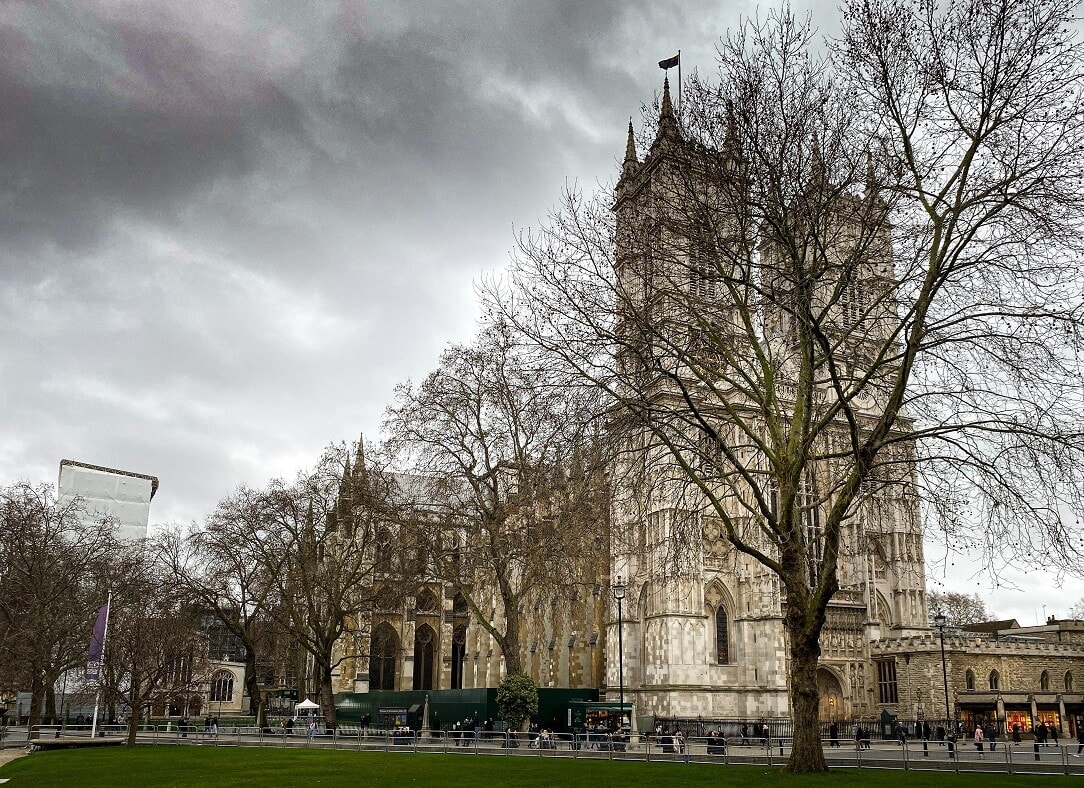
I visited Westminster Abbey for the first time when I was a teenager. While I still remember my visit, I wanted to go to the Abbey again now that I have learned a bit more about British history.
It’s a UNESCO Heritage site and one of those places that you shouldn’t miss when visiting London. Westminster Abbey is a working church with strong ties to the Royal family and British Government. The building is an example of medieval perpendicular gothic architecture at its finest.
There are a lot of things to see at Westminster Abbey so I have created this guide to help you plan your visit. Learn more about its history, the highlights that you shouldn’t miss, and get some important tips to make the most of your time at the Abbey.
Note: This post contains affiliate links. Please see disclosure for more information.
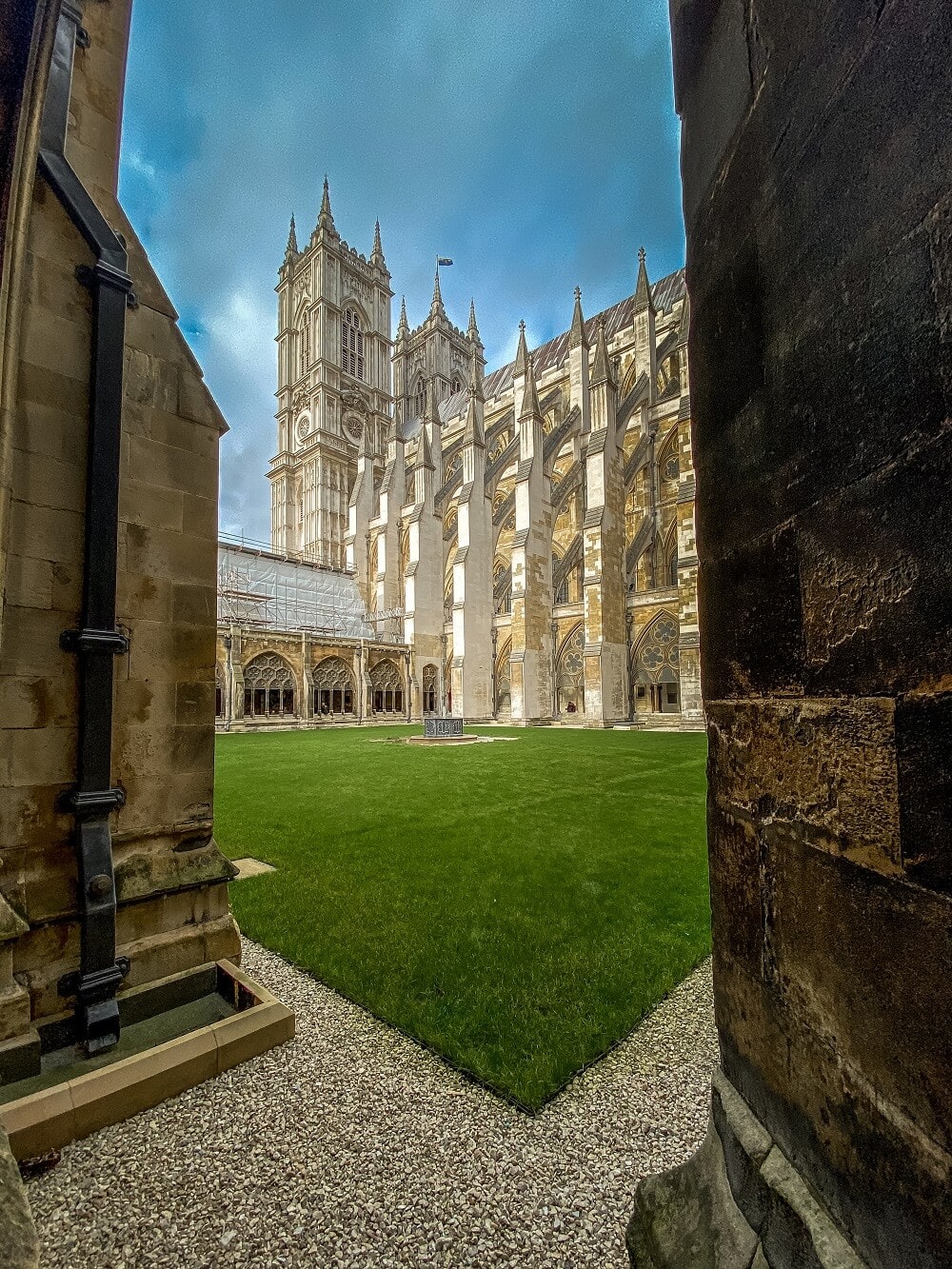
The History of Westminster Abbey
Entry (north transept), north choir aisle, tomb of the unknown warrior, north ambulatory chapels, shrine of st. edward the confessor, tomb of elizabeth i and mary i, the lady chapel, tomb of mary queen of scots, south ambulatory aisle, poets’ corner, queen’s diamond jubilee galleries, pyx chamber, chapter house, coronation chair, americans in westminster abbey, westminster abbey shop, where to eat at westminster abbey, where to get the best photos of westminster abbey, westminster abbey hours, westminster abbey admission, wednesday lates, combined ticket with st. paul’s cathedral, london pass, attending a service at westminster abbey, how to get to westminster abbey, bags in westminster abbey, westminster abbey app, is westminster abbey accessible, how long does it take to visit westminster abbey, is westminster abbey good for kids, should you do a guided tour of westminster abbey, other tourist attractions near westminster abbey, is visiting westminster abbey worth it, expert tips for visiting westminster abbey.
The site has been a place of worship for over 1,000 years. Benedictine monks founded Westminster Abbey in 960 (although there were churches on the site at least since the 7th century). Since 1066, every English and then British coronation has taken place at the Abbey and it is the final resting place for monarchs, poets, musicians, scientists, and politicians. It has also been the venue for 16 royal weddings.
The church built by Edward the Confessor in the 11th century was constructed in the Romanesque style. It was the first in England to be shaped like a cross. Only some areas from the lower part of the monastic dormitory still remain.
In the 13th century, Henry III ordered a new more elaborate church to be built with the shrine of Edward the Confessor at its heart. This is the building we see today. You will notice typical gothic architectural features like pointed arches, ribbed vaulting, flying buttresses, and rose windows. The Rose window above entrance is from 1722 and depicts apostles excluding Judas. The opposite rose window is from 1902 and depicts a variety of figures.
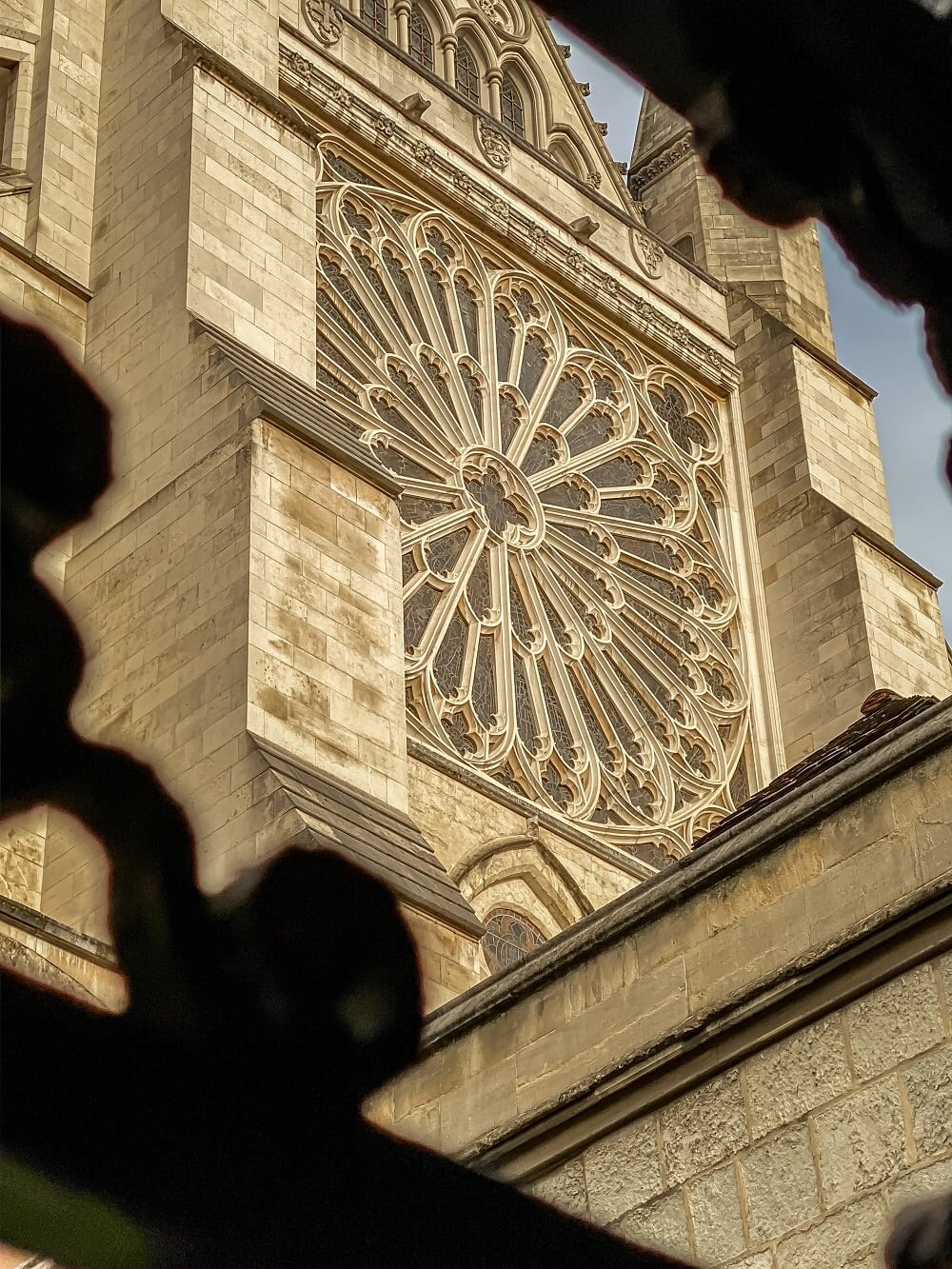
Henry VII added the Lady Chapel dedicated to the Virgin Mary. In the 16th century, Henry VIII granted the Abbey cathedral status to spare it from the destruction that most English abbeys faced during the Dissolution of the Monasteries.
Elizabeth I gave the Abbey its formal title – the Collegiate Church of St Peter. It is not part of the reporting hierarchy within the Church of England and instead, reports directly to the sovereign rather than the Archbishop of Canterbury.
The Abbey was damaged by Puritans during the 17th century but was again protected by its close ties to the government. The two western towers were added in the 18th century.
Westminster Abbey was damaged during World War II, but luckily many treasures were sent away to be hidden when the war started. The Abbey suffered minor damage during the Blitz in 1940. In 1941, the roof was hit by several bombs that started a fire. The burning timbers and molten lead fell into the open area below where the fire could be more easily extinguished.
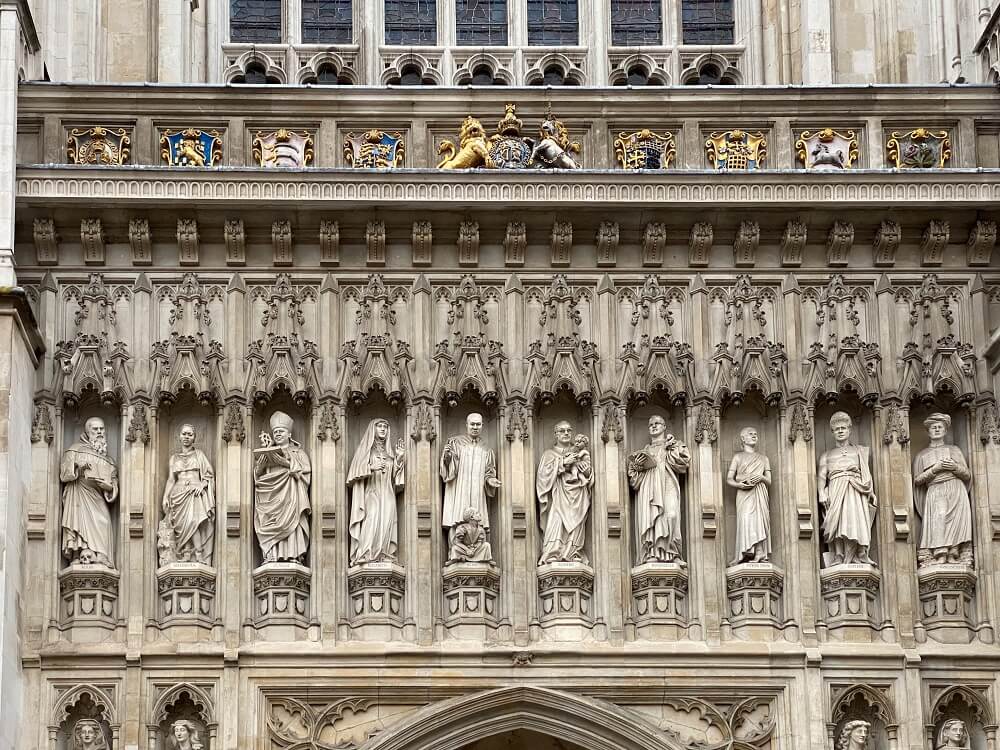
Most recently, in 1998, ten statues of modern martyrs were added in the niches over the West Door which had previously been empty. The modern martyrs are Dr. Martin Luther King Jr, St Oscar Romero, Dietrich Bonhoeffer, Wang Zhiming, St Maximilian Kolbe, Manche Masemola, Esther John, Janani Luwum, Lucian Tapiedi, and Grand Duchess Elizabeth. In 2018, Westminster Abbey was featured in London Lumiere.
It is also the site of some state funerals including the one for Queen Elizabeth II on September 19, 2022.
Please be conscious of the historical nature of the building. Do not lean on or touch any of the monuments.
What to See at Westminster Abbey
Even though it was my second visit to Westminster Abbey I was surprised by how much there is to see. There are over 3,000 people buried in Westminster Abbey! That’s not all. There are historical artifacts and interesting architecture that you don’t want to miss.
I want to manage your expectations – you will not be able to see everything in one visit. Let me help you prioritize and tell you the most important things to see when visiting Westminster Abbey.
The history starts the second you walk in the door. Before your audio tour starts you will see several important figures in British history. It shows that there is a strong link between the Abbey and the government.
There are larger-than-life statues to honor some of the leading Prime Ministers from the 18th and 19th centuries including Viscount Patterson , Robert Peel , Benjamin Disraeli , and William Gladstone (who is buried nearby). It is a bit ironic that the tributes to Disraeli and Gladstone are so close together when they were bitter rivals.
The largest memorial in this area is dedicated to Prime Minister William Pitt . He is buried nearby with his son William Pitt the Younger . There is a plaque honoring the younger near the west door.
Also if you take a minute to admire the stained glass here you will notice that there is one panel that is modern. The window pays tribute to the Queen and depicts a hawthorn blossom scene in Yorkshire. It was designed by David Hockney and installed in 2018.
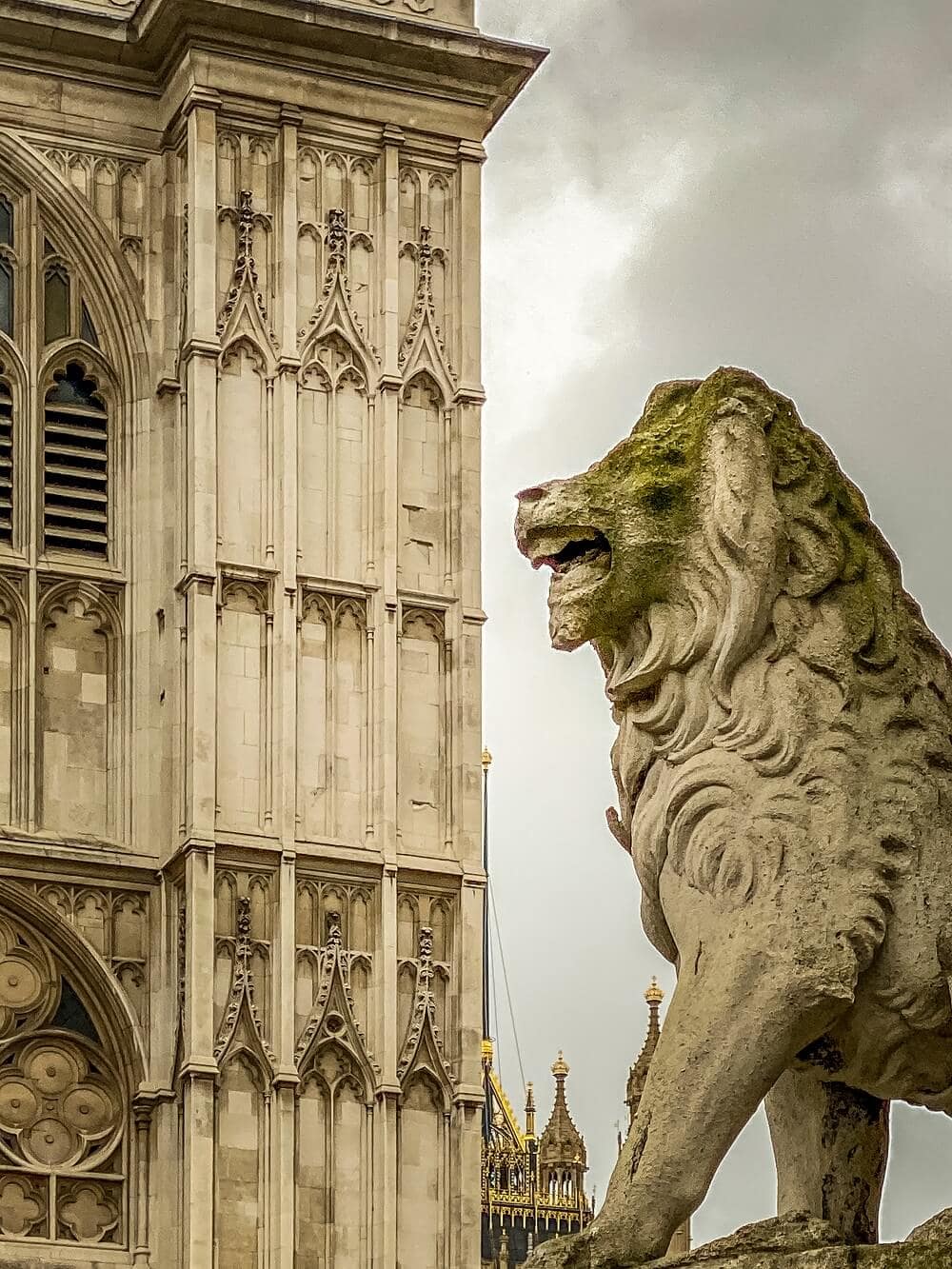
This is where the audio tour starts but it doesn’t mention what to see on this aisle. We enjoyed looking at the plaques and statues. We found a few interesting ones:
- William Wilberforce: As a member of Parliament (and close friend of William Pitt), he took up the cause for the abolition of slavery. The Abolition Bill became law in 1807, long before slavery was outlawed in the US.
- Charles Darwin: It’s a bit ironic that Charles Darwin is buried in a religious building given that he introduced the theory of evolution, but fitting that he is near his fellow scientists. (Isaac Newton and others are in the Nave on the other side of the rope).
- Musicians: Music is integral to the Abbey, so it is fitting there is an area where several musicians and composers including Henry Purcell , Ralph Vaughan Williams , John Robinson , and William Sterndale Bennett are remembered.
The Tomb of the Unknown Warrior can be found at the back of the nave. It is the tomb of a British soldier brought back from France and buried in Westminster Abbey on Armistice Day in 1920. The grave is appropriately framed with poppies, a symbol of both Remembrance and hope for a peaceful future. This is the only grave in the Abbey that is never walked on.
Don’t miss the framed document on the pillar to the north of the grave. It contains the Congressional Medal of Honor that General Pershing awarded to the Unknown Warrior on October 17, 1921, on behalf of the USA. The Congressional Medal of Honor Society’s flag, presented to the Unknown Warrior in October 2013, is also on the pillar.

When the Duke of York (later King George VI) married Lady Elizabeth Bowes Lyon in the Abbey in 1923 she laid her wedding bouquet on the grave as a mark of respect. She had lost a brother during the war. All royal brides married in the Abbey since then have sent back their bouquets to be laid on the grave. Some royal brides who were married elsewhere have done the same.
Near the tomb of the Unknown Warrior is a plaque to honor Prime Minister Winston Churchill . It was unveiled by Queen Elizabeth II on 19th September 1965, the 25th anniversary of the Battle of Britain, and a wreath was laid by his widow. He is buried near Blenheim Palace in Oxfordshire with other family members.
The nave is the main public part of the Abbey. This is where commoners would most likely sit at a service. While you are in the nave take time to admire the medieval ceiling and chandeliers.
As you walk around the area, you will notice several important people commemorated here:
- John Harrison , the clockmaker, has a memorial with a meridian line engraved with its own longitude of 0 degrees, 7 minutes and 35 seconds West in two metals to highlight Harrison’s most widespread invention, the bimetallic strip thermometer.
- David Livingstone , a Scottish physician, Congregationalist, explorer in Africa, and one of the most popular British heroes of the late 19th-century Victorian era is buried here.
- Nelson Mandela , the South African anti-apartheid revolutionary, political leader, and President of South Africa has a memorial stone inscribed with the words “Forgiveness Reconciliation.”
The Nave also has an area called Scientists’ Corner. Sir Isaac Newton ’s elaborate and imposing tomb is on the left side of the nave just before you go to the Quire. Several other important figures in science are memorialized nearby. The latest addition to Scientists’ Corner is Stephen Hawking who died in 2018. His plaque has a picture of a black hole and bears the inscription “Here lies what was mortal of Stephen Hawking”. This is the English translation of the words on Newton’s tomb which says the same thing but in Latin.
The Quire area is where the monks would sit for daily prayers. Now, it is used for the Westminster Choir and clergy. The Choir of Westminster Cathedral was founded in 1901 and is known as one of the finest in the world.
The Quire stalls you see today were installed in 1848. Stalls not used by the Choir are assigned to the Monarch, clergy, officers of the Abbey, and High Commissioners for the Commonwealth countries when they attend services. Some have nameplates.
The High Altar is the place where the Eucharist is celebrated. There are four services each day. They change the color and the types of flowers on the altar for the seasons.
The Cosmati Pavement in front of the altar was laid in 1268 by craftsmen from Rome under the order of Henry III. It is made of colored glass and marble and was restored in 2010. The Monarch is crowned here during the coronation ceremony.
These chapels contain some elaborate tombs with intricate carvings, but we had a difficult time figuring out who was who. When we were able to find names, we didn’t recognize them. If you are tight on time, you can go through this section quickly.
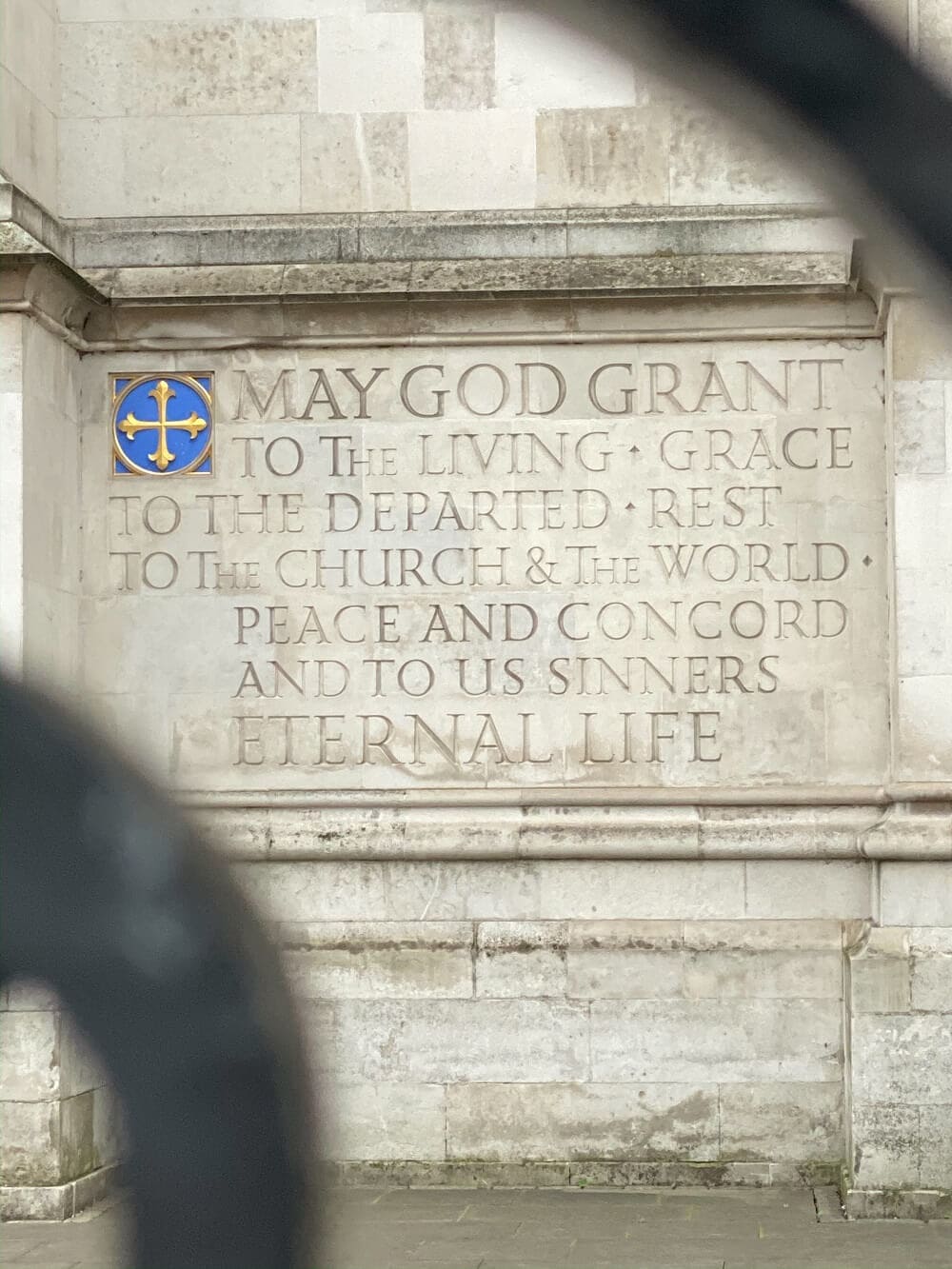
Behind the high altar is the shrine of Edward the Confessor . The shrine is considered the center of the Abbey and five kings (including Henry III , Edward III , and Henry V ) and four queens are now buried in this area. The floor is extremely fragile so only those here for private prayer or the guided tour can actually enter the Shrine. You can try to peak through the stairs or get a view from above in the Queen’s Gallery.
Edward died in 1066 and was buried in the Abbey. In 1163, he was moved to a special shrine. Then in 1269, he was moved to a more elaborate shrine created by Henry III. During the Dissolution of the Monasteries, Edward’s tomb was moved and robbed of its jewels. When Mary I took the throne she repaired the Shrine, moved the coffin back to its place, and gave jewels to replace the ones that were stolen.
In this narrow room with an ornate fanned ceiling, you will find the tomb of Elizabeth I and Mary I . I found it ironic they were buried together as sisters as they did not get along. The figure on top of the tomb is clearly Elizabeth and there is barely a mention of Mary.
While both are the daughters of Henry VIII, Mary’s mother, Catherine of Aragon, was Catholic, and Elizabeth’s mother, Anne Boleyn, was Protestant. Mary is also known as Bloody Mary because she had many Protestants killed.
Innocents’ Corner in the back of the contains a sarcophagus for the remains of two princes who are known today as The Princes in the Tower . Princes Edward and Richard were the only sons of King Edward IV, and are usually assumed to have been murdered in the Tower of London to allow their uncle, Richard III, to claim the throne.
The Lady Chapel is like its own church. It has a nave, quire, font, and altar. It was built by Henry VII and is one of the best examples of late-medieval English architecture. The roof and walls are intricate, with delicate carvings, almost more like glass than stone.
Behind the altar, you will find the tomb of Henry VII and his queen. Key members of his family are buried around him. Members of the Stuart dynasty, including Charles II , are buried in a vault under the floor. Henry VIII is the only Tudor monarch who is not buried at Westminster Abbey. Instead, his final resting place is at Windsor Castle with his favorite wife, Jane Seymour.
In the back of the Lady Chapel behind the tomb of Henry VII, there is the RAF chapel which is dedicated to the men of the Royal Air Force who died in the Battle of Britain in 1940. A hole in the stonework has been covered in glass as a reminder of when the Abbey was hit by bombs in 1940. The stained glass shows the badges of the squadrons that fought including those from the US, Canada, Poland, and the former Czechoslovakia.
On the floor, there is a plaque noting the temporary burial place of Oliver Cromwell . His body was removed when Charles II took the throne. Cromwell’s head was cut off and place on a spike outside Westminster Hall.
The room across the church from where Elizabeth I is buried houses the tomb of her cousin, Mary Queen of Scots . After Elizabeth I ordered her execution, Mary was originally buried in Peterborough Cathedral. When her son James, became James I of England/VI of Scotland, he had her body moved to Westminster Abbey. He made sure her tomb was even bigger than Elizabeth’s. It is decorated with symbols of the three countries where Mary laid claim to the throne – England, Scotland, and France.
Lady Margaret Beaufort , who was the mother of King Henry VII, and Margaret Douglas , who was Mary Queen of Scots’s mother-in-law are also buried in this room. Margaret Douglas was the mother of Mary’s husband, Lord Darnley, who was the father of James I/VI.
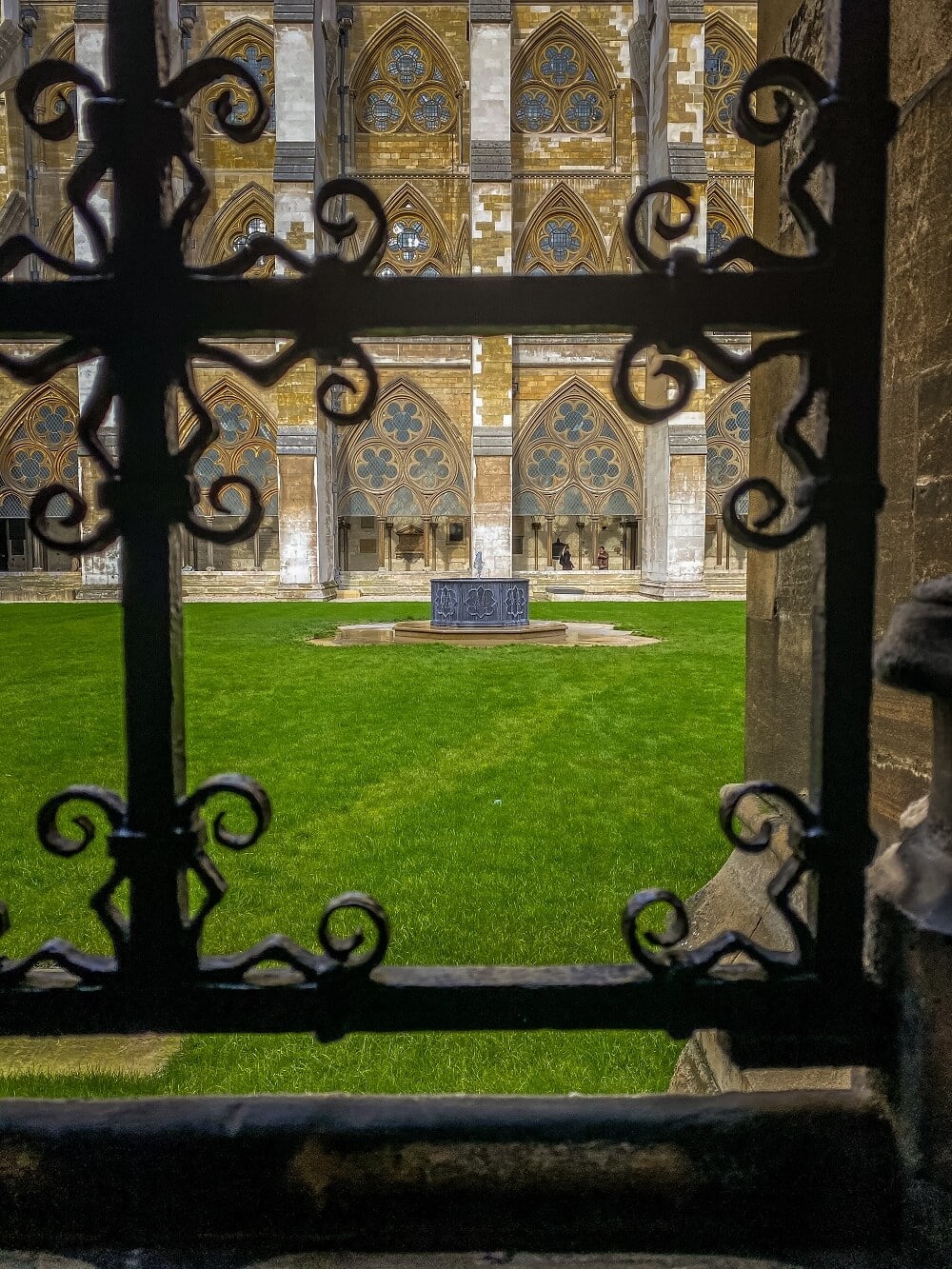
The small chapels off the aisle contain more ornate tombs. In this area, there are memorials to two Queens, Anne Neville (the wife of Richard III) and Anne of Cleeves (Henry VIII’s 4th wife). Additionally, many members of the Percy family, who own Alnwick Castle , are buried here.
I was surprised by the number of people that are memorialized in Poets’ Corner. Geoffrey Chaucer was the first person buried in this part of the Abbey. Then, Edmond Spencer wanted to be buried near Chaucer and Poets’ Corner was born.
Some of the other famous writers commemorated in Poets’ Corner are William Shakespeare, Robert Browning, Lord Bryon, Alfred Lord Tennyson, Lewis Carroll, CS Lewis, Charles Dickens, Rudyard Kipling, Thomas Hardy. and Jane Austen. Not all these legends are buried in Westminster Abbey, for example, Jane Austen is buried in Winchester Cathedral . In addition to the famous writers, there was also a plaque for Laurence Olivier, the actor, and one dedicated to the war poets.
At the back of Poets’ Corner, you will find the entrance to the Queen’s Galleries which opened in 2018. Here you will find over 300 objects chosen by the Queen from the Abbey’s collection.
We debated about skipping the galleries as we were a bit tight on time. I am glad we didn’t. It might have been my favorite part of the visit. There is an additional charge of £5 per person and you can buy the tickets at the entrance to the galleries.
When you enter the galleries, you will be given a brochure that includes a map and some of the highlights. Use the brochure as a guide, but try to browse and see items not listed too. We were amazed at some of the things we saw like:
- Copy of the Magna Carta – One of 24 surviving copies from 1300. The original copy we saw in Salisbury Cathedral was from 1215.
- Replicas of the Crown Jewel s – The real Crown Jewels are kept under extremely tight security in the Tower of London, these replicas are used for rehearsals.
- The Coronation Chair of Mary II – Since Mary ruled jointly with William they needed an extra coronation chair. You see the coronation chair that has been used for all the other Monarchs for about the last 1,000 years by the exit of the Abbey.
- Funeral Effigies of several Monarchs and other important figures including King Edward III, Queen Mary I, King Charles II, King William III, Queen Mary II, Queen Anne, and the head of King Henry VII.
- Retable – The 13th century Westminster Retable is England’s oldest altarpiece.
- Litlyngton Missal – A lavish manuscript used for prayers at the high altar. It reminded me of the Book of Kells .
- Marriage License of Prince William and Catherine Middleton – This document is a piece of art! It was exciting to see something so important and personal to the Duke and Duchess of Cambridge.
In addition to the treasures on display, I enjoyed getting the view of the abbey from above. I could imagine all the people gathering for a coronation or royal wedding. From the Queen’s Gallery, I was also able to get an aerial view of Edward the Confessor’s Shrine.
The Cloisters used to be the center of monastic life. The most important buildings of the monastery were organized around it. There are actually two cloisters at Westminster Abbey. I think a lot of people (like us) miss the Little Cloisters as there is no sign directing you to walk to it. It’s down the gated walkway just past the Pyx Chamber.
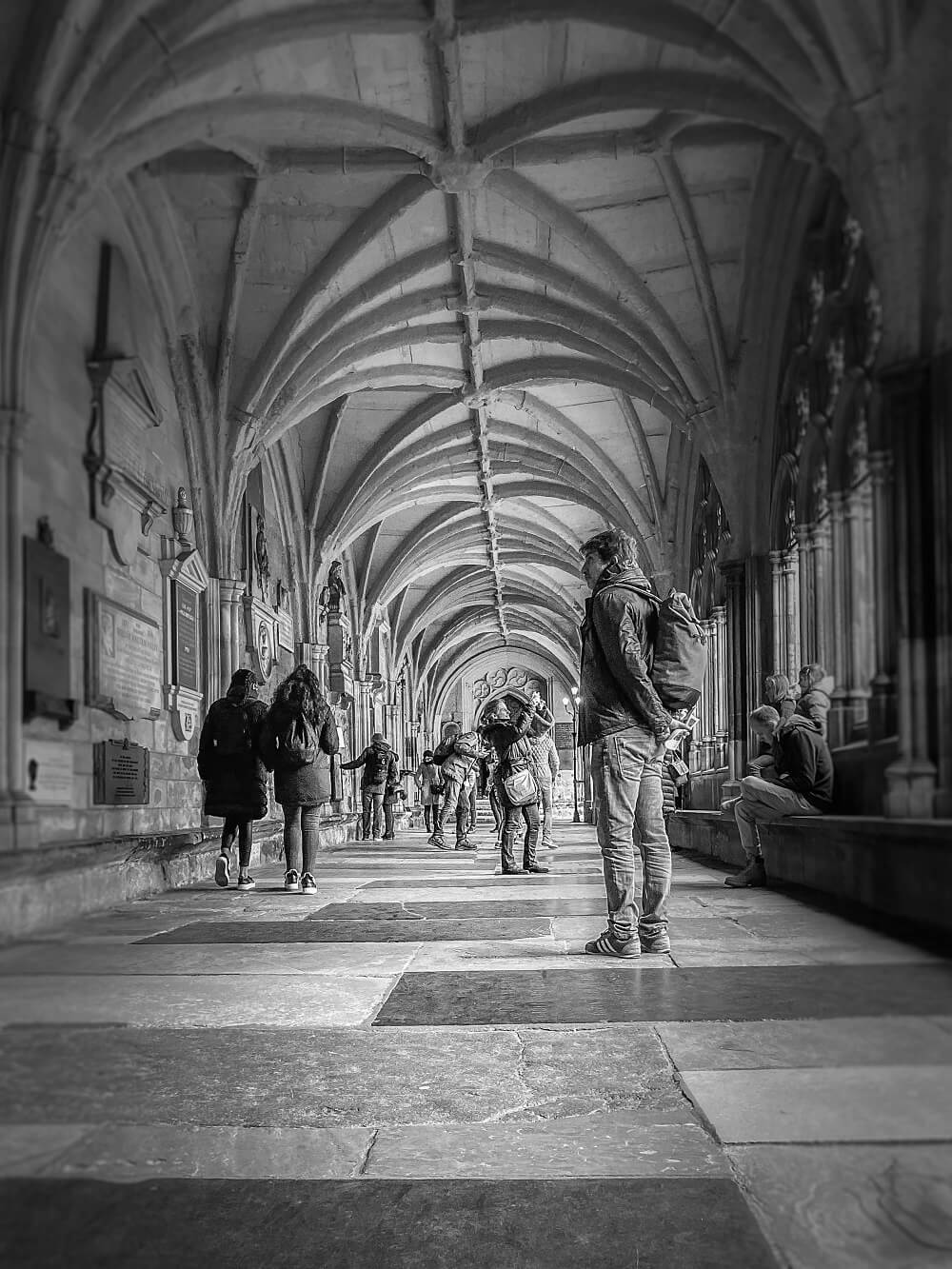
The infirmary was in the Little Cloister. They grew medicinal herbs in the nearby garden. Today some of the Abbey Clergy live here. There is a doorway you can look through and see the ruins of Chapel St. Catherine and Victoria Tower at the southern end of the Palace of Westminster.
If you visit Tuesday, Wednesday, or Thursday, the gardens are also open to the public. Our visit was on a Saturday, so we couldn’t go to the gardens.
The Pyx Chamber is one of the oldest parts of Westminster Abbey. It was built in the late 11th century. Originally it was the undercroft below the monk’s dormitory. During later years it became a storage room for valuables because it had thick walls, iron window bars, and six locks on the door.
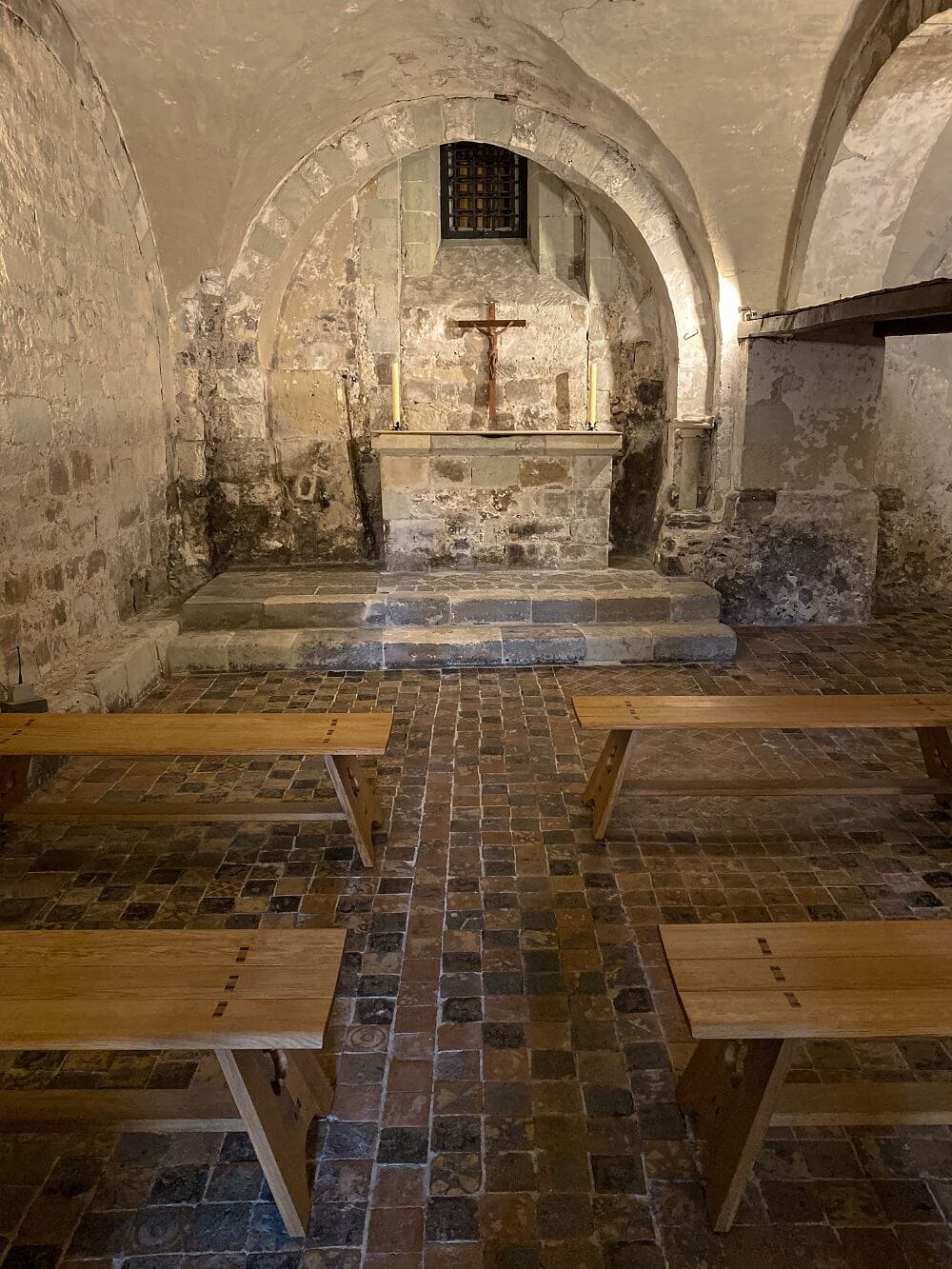
The name “Pyx” came from the small boxes where official samples of gold and silver coins were kept. New coins were tested annually in a public “Trail of the Pyx” at the Palace of Westminster.
Don’t miss the Chapter House. It was built in the mid-13th century on the orders of Henry III and has some of my favorite architecture and artwork in the Abbey. The walkway into the Chapter House reminded me of the cellarium at Fountains Abbey in Yorkshire .
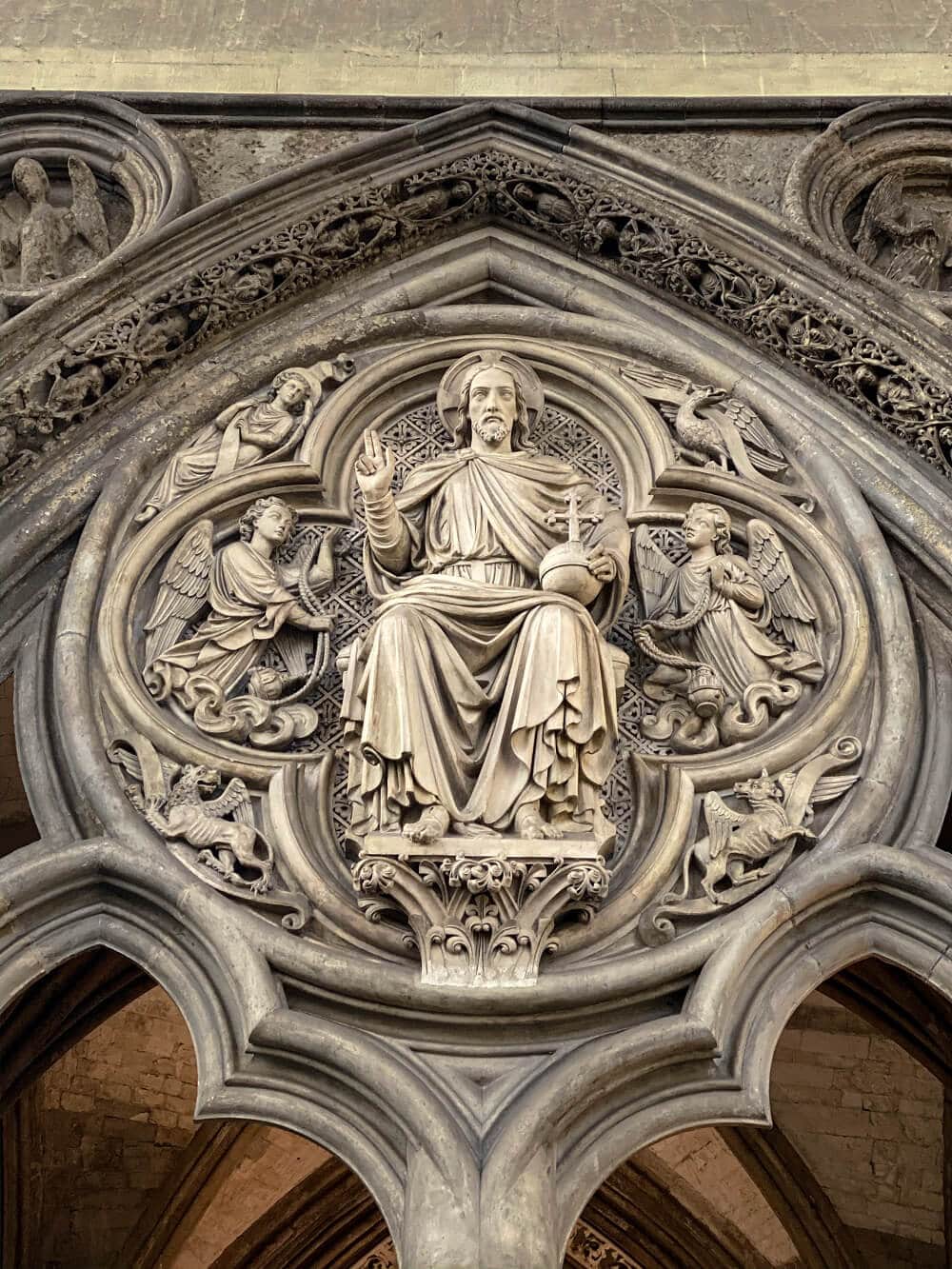
When you enter the Chapter House, turn around and look at the medieval sculptures above the doorway. These include the Archangel Gabriel, Christ in Majesty, and Mary. The Christ sculpture was actually added in Victorian times. These all used to be brightly painted. There is more beautiful stonework in the ceiling.
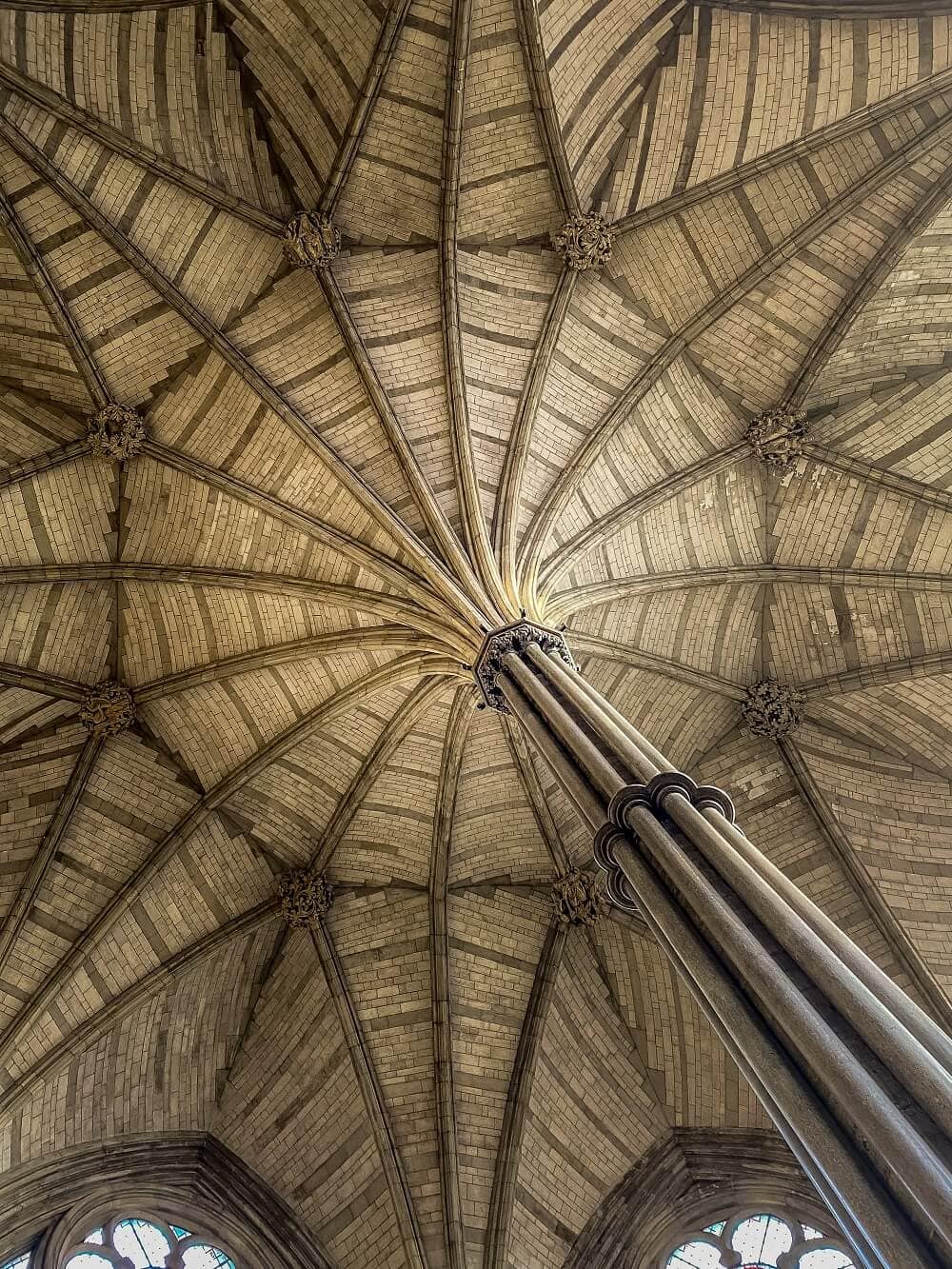
Stained glass windows surround you in the Chapter House. The original 13th-century glass was lost by the 18th century. Now, looking at the glass it’s hard to tell it was also destroyed during World War II. They tried to use as much of the Victorian glass as they could in the new panels, which include coats of arms from people associated with the Chapter House over the years. The southwest window has tiny images related to World War II.
The paintings on the walls around the room aren’t in the best condition, but you can still imagine what it would have looked like in its prime. The stone benches are where the monks would sit during their daily meetings. During the Dissolution of the Monasteries, they used the Chapter House for Parliamentary meetings and to store state documents.
The medieval floor tiles in the center of the room are worth a look. They are made by stamping designs in clay, filling in the impressions with a lighter clay, and then glazing. The glaze has worn away. The patterns in the tiles include Henry III’s coat of arms, people, fish, animals, geometric shapes, and a rose window similar to the one in the Abbey.
The Coronation Chair is on display just before you leave Westminster Abbey. Unfortunately, you can’t get too close to it, but that is understandable given its age and significance. While coronations have taken place at the Abbey since 1066, the chair has only been used for the last 700 years.
King Edward I had the Coronation Chair made to enclose the famous Stone of Scone , also known as the Stone of Destiny, which he brought from Scotland to the Abbey in 1296. Now, the Stone of Scone is on display along with the Crown Jewels in Edinburgh Castle but will be returned to Westminster Abbey for future coronations.
Westminster Abbey is not just a place to commemorate important British legends. There are people from across the globe that are honored here. Even a few Americans! While I didn’t find any Americans buried in Westminster Abbey, I did find these tributes:
- Henry Wadsworth Longfellow – In Poets’ Corner, there is a sculpture to honor the American poet, who is buried in Massachusetts.
- George Peabody – The American philanthropist was originally buried in Westminster Abbey but later moved back to Massachusetts. Look for a plaque in the nave.
- Franklin D. Roosevelt – As you leave the Abbey, there is a large plaque just to the left of the door for FDR, the 32nd President of the United States, calling him “a faithful friend of freedom and of Britain.”
- Martin Luther King Jr. – MLK, the civil rights leader, was added as one of the 10 modern martyrs about the West Door in 1998.
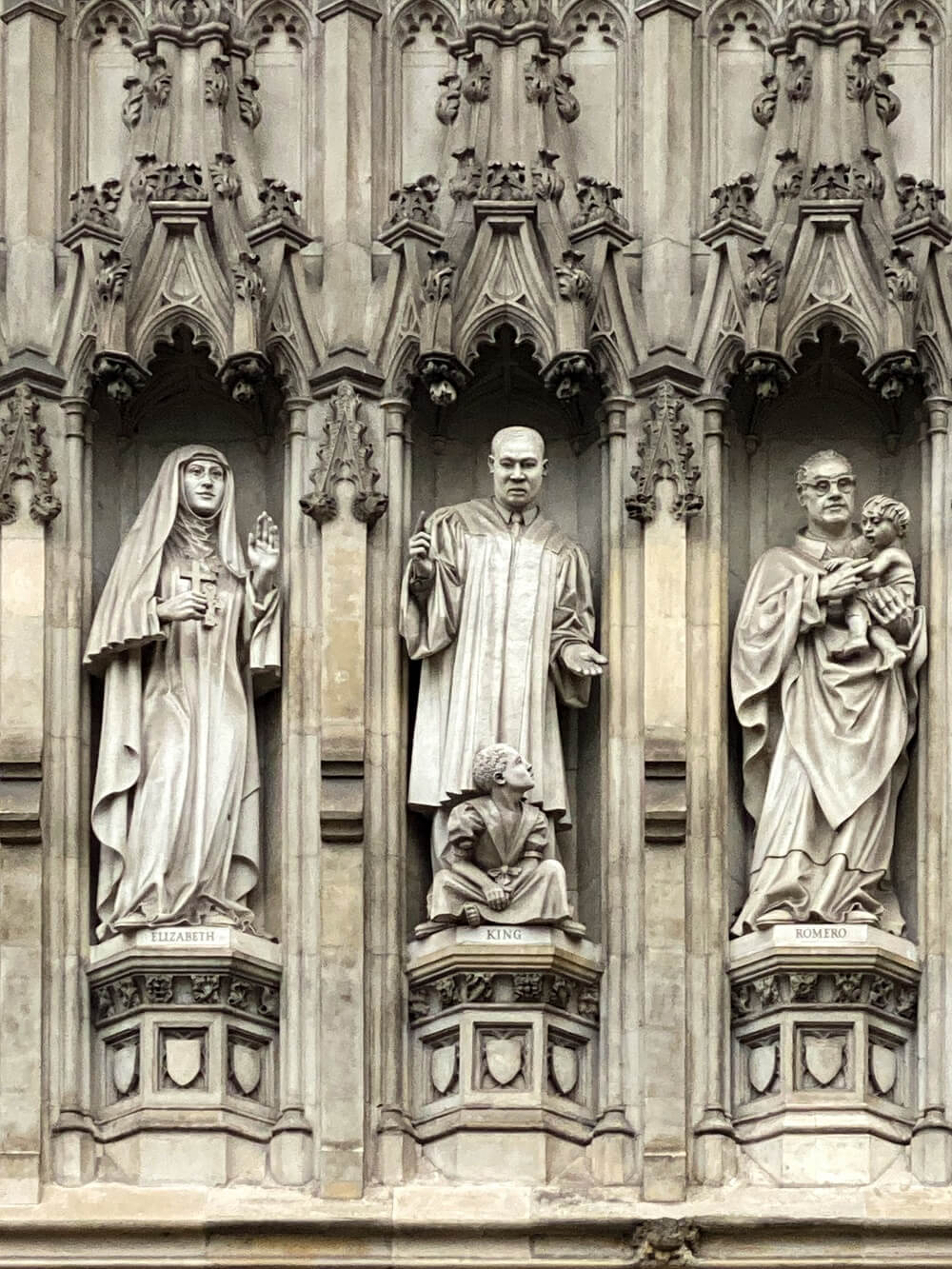
After you exit the abbey, the gift shop will be on your left. It has plenty of London souvenirs and some books that will teach you more about Westminster Abbey.
Right off the cloisters is the Cellarium. It used to be a storage area for the monks, but it has been converted into a cafe. The cafe serves meals throughout the day, including afternoon tea. They offer outdoor seating during the warmer months. If you would like to dine at the Cellarium, you can make a reservation here .
While photos are not allowed inside the Abbey, you can still get a nice picture that will help to remember your visit. We found a few good photo spots:
- Outside Westminster Abbey. On Tothill Street, it’s fun to pose with the iconic red phone boxes.
- Inside the cloisters.
- Inside the entrance to the Chapter House.
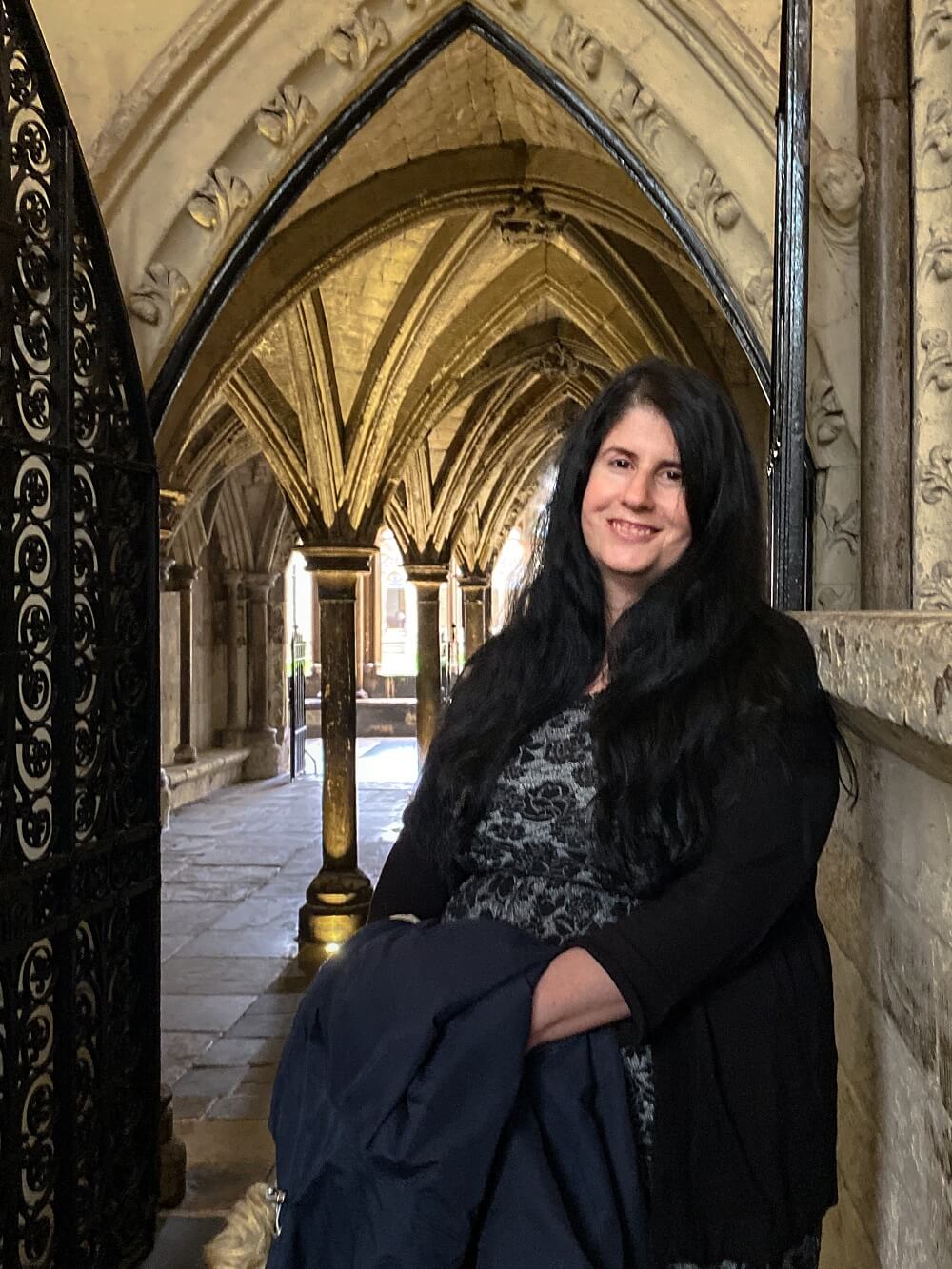
Westminster Abbey is a working church so the hours for visitors are limited. It’s best to check on the website for the date of your visit.
Keep in mind the Abbey is always closed for visitors on Sundays. The Abbey Gardens are only open Tuesday through Thursday.
Regular admission to Westminster Abbey costs £21 for adults and £9 for children. If you want to do one of the guided tours, it’s an additional fee of £7. Admission to the Queen’s Galleries is also an additional fee of £5.
Buy your tickets here in advance, it will be a few pounds more if you wait and buy them when you get to the Abbey.
How to Save on Westminster Abbey Admission
It is possible to save money when visiting Westminster Abbey, you just need to be a bit strategic. Consider adjusting the time of your visit or purchase a London sightseeing pass.
To save money at Westminster Abbey consider visiting during “Wednesday Lates.” Admission is half-price on Wednesdays from 4:30 pm to 6:00 pm. The multimedia tour is not available during this time, but that shouldn’t be a concern as you can use the Westminster Abbey App instead. You will also not be able to go to the Queen’s Galleries, the Quire, or the High Altar.
Since the Abbey is only open for a few hours for Wednesday Lates, you will need to make the most of the limited time. I would recommend arriving a little early so that you will be one of the first to enter. Also, buy tickets in advance to skip the line after going through security.
Tickets to see Westminster Abbey during Wednesday Lates cost £11 for adults and £5 for children. You can purchase the tickets here .
If you also plan on going to St. Paul’s there is a pass that you can purchase that will save you money. This pass includes admission to Westminster Abbey and St. Paul’s for a discount.
Westminster Abbey is included as part of the London Pass. This can be an easy way to save money on your sightseeing in London because it includes 80 of London’s top attractions for one price. Some of the other London must-sees included on the pass are the Tower of London, Windsor Castle, Hampton Court Palace, Up at the O2 , and Wembley Stadium Tour .
Click here to get more information on the London Pass.
How to visit Westminster Abbey for free
If you are not concerned about seeing all of Westminster Abbey but want to say that you have been inside the famous church, you can attend a service for free. You won’t be able to walk around and see the monuments but at least you can see some of the architectural highlights.
Westminster Abbey, with its rich history and grand architecture, holds daily services open to the public (check the schedule here ). Despite not being religious, I was intrigued and decided to attend an evensong service. It turned out to be a truly memorable experience. Let me share a glimpse of what happened and some tips for those interested in joining a service at Westminster Abbey.
To make the most of the service, plan to arrive at least 10 minutes before it starts, but earlier is better as they start letting people in 30 minutes ahead of time. Check in with the staff at the visitor’s exit, known as the west door, and go through a security check. They’ll guide you to a line in the North Choir Aisle. Remember, no photos inside.
I went on a Wednesday, which happened to be the choir’s day off. Fifteen minutes before the service, we were seated in the Quire. If you arrive later, you’ll be directed to the Nave, which still offers a good view. They provided an electronic order of service through a QR code. The actual service lasted about 20 minutes, but it can be longer on other days with the choir present.
Westminster Abbey is located in Central London near the Houses of Parliament. The closest tube station is Westminster, but Victoria and St. James Park stations are also within walking distance.
You pay for your tube ride using an oyster card, contactless credit card, or Apple pay. If you are visiting from overseas, consider purchasing the Visitor Oyster Card , which can be mailed to you so you are ready to use public transportation as soon as you arrive.
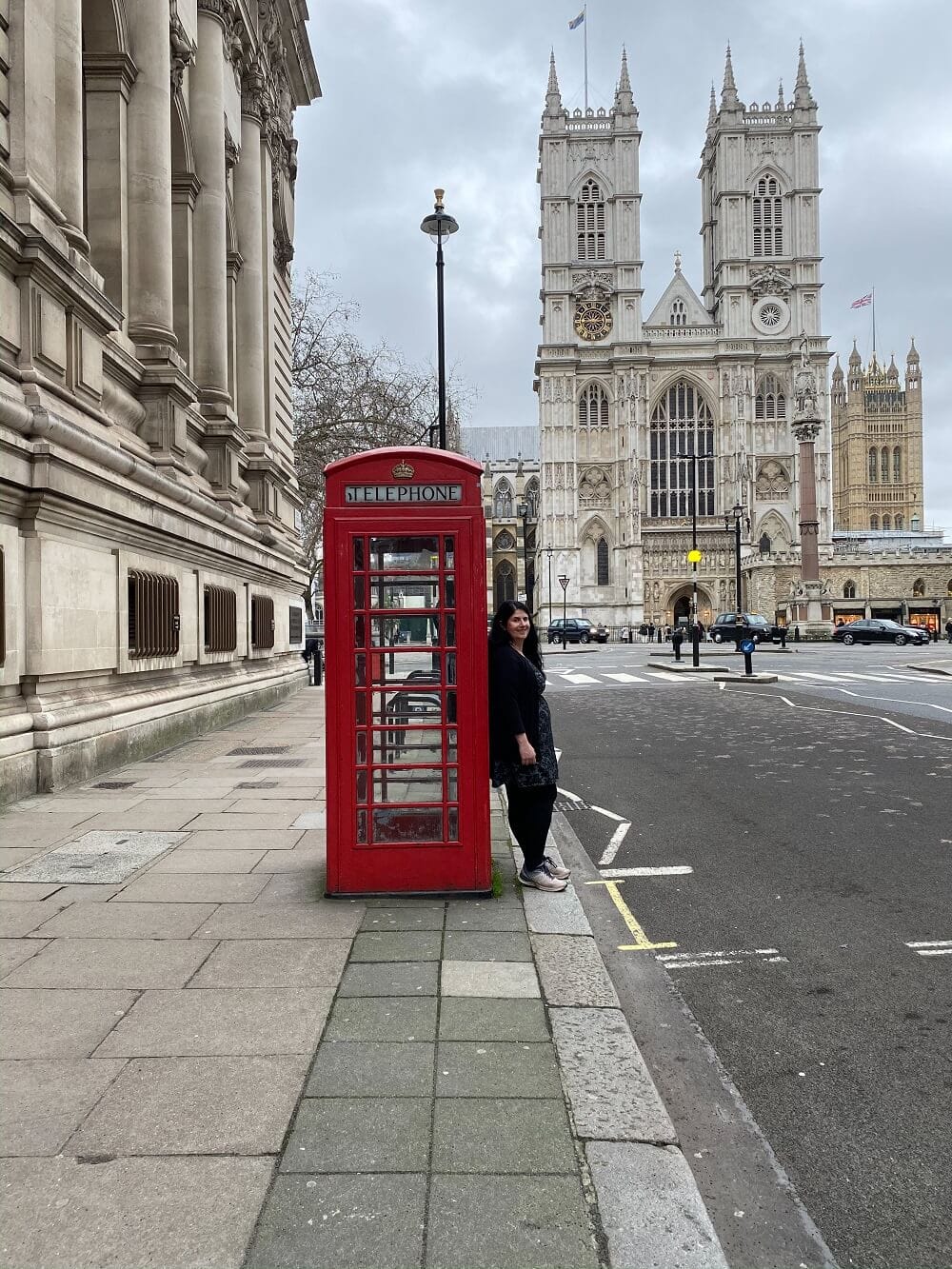
Things to Know Before Visiting Westminster Abbey
Westminster Abbey is a popular tourist attraction that is also a place of worship. There are a few things that need to be arranged before you visit.
No backpacks or bags (other than purses) are allowed inside. There is no place to store bags at Westminster Abbey. This means you must check bags somewhere else in advance.
We used LuggageHero to store our bags. You can use the app or website to find locations that are convenient. We chose to store our bags at the Victoria Station Hotel as it offers storage 24 hours a day. It’s not the fanciest hotel, but for bag storage it is fine. They give you locks for your bags and they are insured. What I like most about LuggageHero is that you only pay for the time that the bags are stored. If you want to try LuggageHero, use the code TEXANHERO to get two free hours. Click here to make a reservation .
You can also store bags at Charing Cross or Victoria train stations but it will be more expensive. While you don’t need a reservation to store bags at the station, you will get priority service if you do. Click here to get more information .
Download the Westminster Abbey App here . It has the same information as the audio tour. You have to turn in the audio tour after Poet’s Corner, but you can keep listening to the app even after your visit. In addition to downloading the app, set up the offline mode before your visit. I wish I had as I had some difficulty with the lack of data service. You can find the option in the hamburger menu on the top left of the app.
Wondering what to wear? While there is no official dress code for Westminster Abbey, they ask that you dress respectfully and men remove hats. It can be a bit chilly inside the Abbey during the winter months so bring your jacket. Additionally, the floor is uneven in places, so please wear practical shoes (i.e. no stilettos).
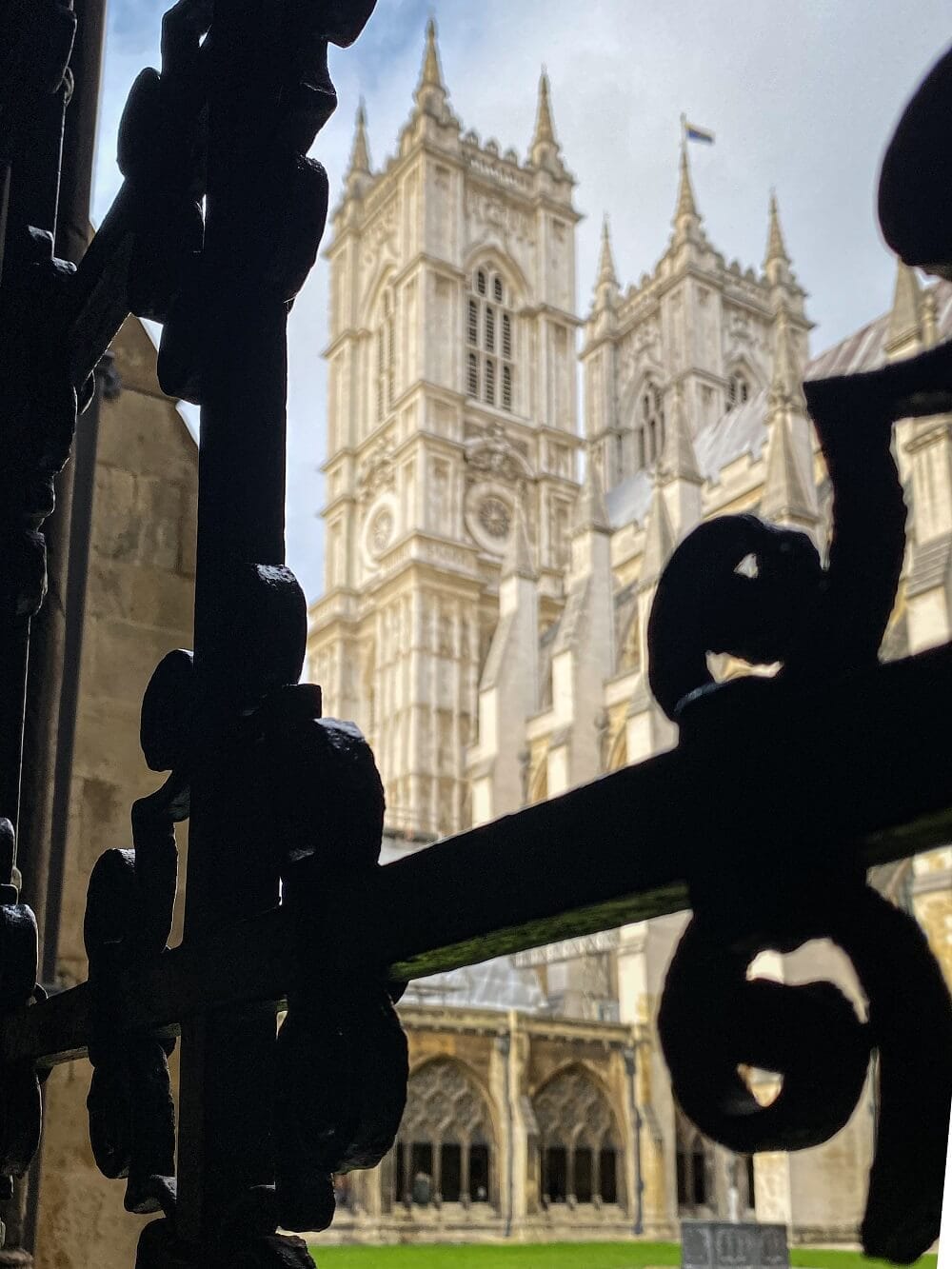
Due to its historic nature, there are some parts of the Abbey that are not accessible to those that have mobility issues. Those visitors and their carers get free admission and need to enter the Abbey through the North Door.
The Abbey has special tours for visually-impaired visitors and those with hearing difficulties. They also allow you to bring guide dogs, hearing dogs, and assistance dogs.
Get more information about disabled access at the Abbey here .
It depends on how many plaques you want to read. We spent a little more than three hours inside, but there were a few memorials that we still missed and we rushed through the Queen’s Galleries. If you are tight on time and want to see as much of the Abbey as possible then it might be best to do the guided tour.
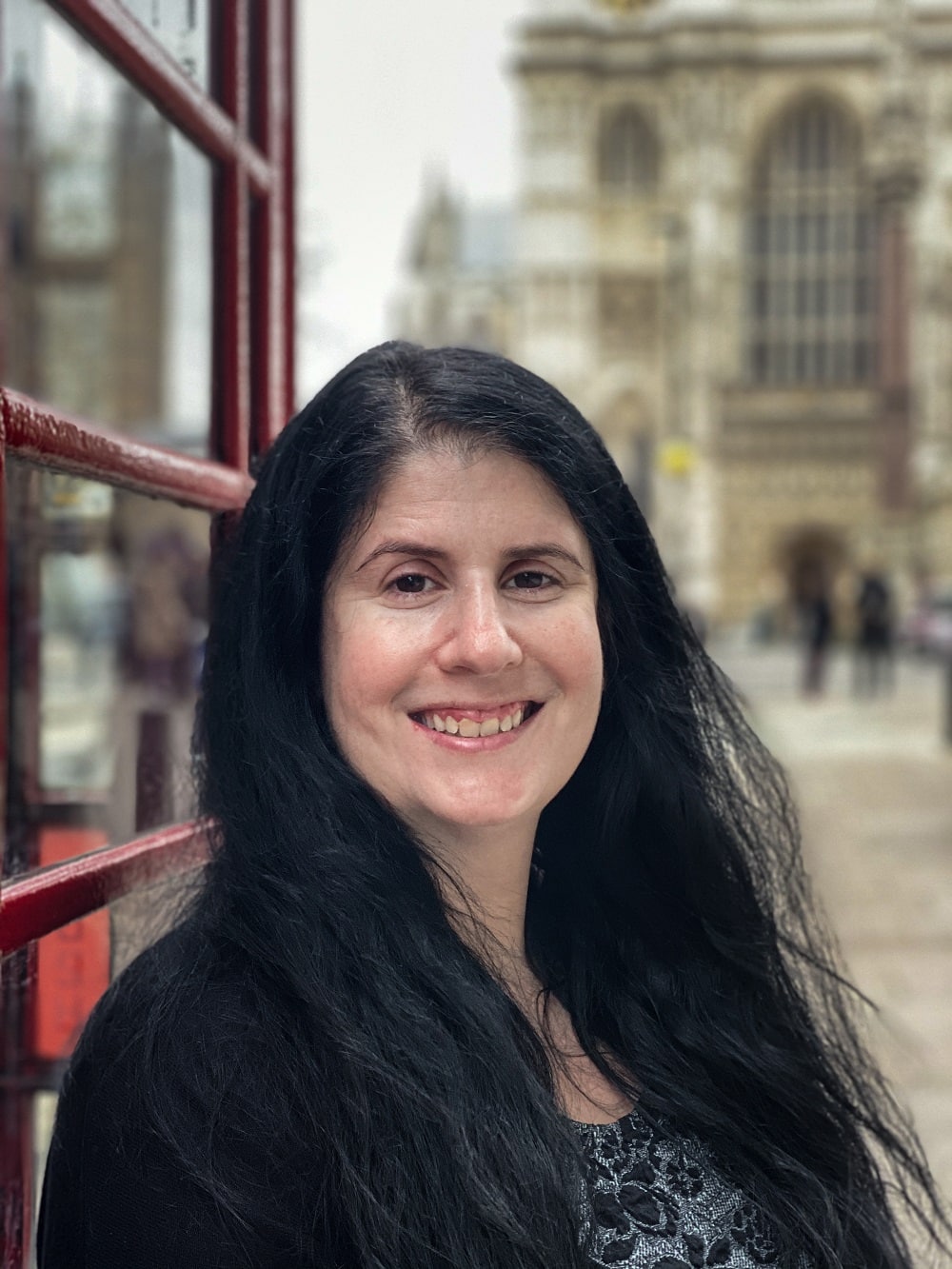
Children are welcome at Westminster Abbey. Keep in mind it is a place of worship so they need to be respectful. They have a booklet called the Children’s Trail, which is available by the entrance for free, to make the visit more interesting for them.
At the Cellarium, they offer one free meal from the kids’ menu with every adult main meal that is purchased. They also have a free coloring sheet to help keep the kids entertained.
If we were to visit again I think I would pay extra for the guided tour. At Westminster Abbey, these tours are led by vergers, who are not part of the clergy but assist in the ordering of religious services. They know the history and traditions of Westminster Abbey better than anyone.
During our visit, we ran into the guided tour a few times and I overhead a bit. They were definitely getting more inside information than what was provided in the audio tour. Additionally, guided tours get to go into Edward the Confessor Shrine.
I think it would be worth the £7 charge for the tour. (Note: You have to pay admission to Westminster Abbey too). Space on the guided tours is limited to 20 people and commentary is in English only. It lasts about 90 minutes. They only offer a few tours per day, the schedule varies depending on the time of year and day.
You cannot purchase tickets for these verger tours in advance, they must be booked upon arrival at Westminster Abbey.
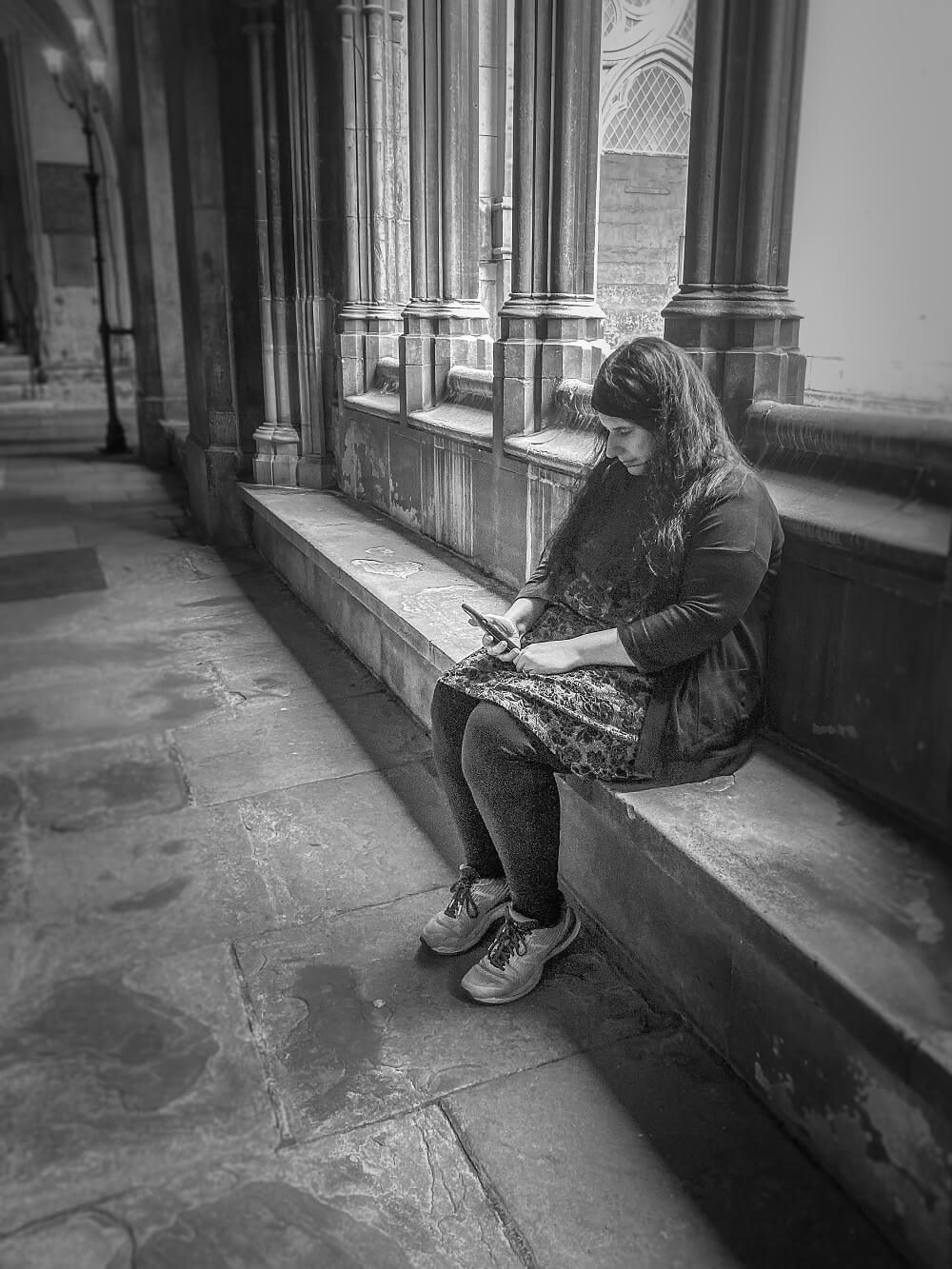
If you have a whole day to go sightseeing in the area there are several other attractions nearby:
- Parliament Square is just to the north of Westminster Abbey. Walk around and see the 12 statues of British and international political figures.
- Houses of Parliament/Big Ben are located to the east of the Abbey. You can tour the Houses of Parliament. Unfortunately, Big Ben is under renovation. If you want to visit both Westminster Abbey and the Houses of Parliament, consider taking this exclusive guided small group tour .
- Jewel Tower is around the corner from Westminster Abbey. It was built around 1365 to house Edward III’s treasures and was known as the ‘King’s Privy Wardrobe’. It is an English Heritage site, so English Heritage members or those that buy the English Heritage visitor’s pass can visit for free.
- London Eye is the large Ferris wheel with panoramic views across the Thames.
Yes. I was surprised by how much there is to see inside the Abbey. The history is awe-inspiring and will leave you wanting to learn more. It is amazing to think about all the important events that have taken place here from coronations to ceremonies, to weddings, to funerals over the years. I am not sure there is anywhere else where you can see graves and memorials to so many influential people.
Since it’s an indoor attraction, it can be a smart way to escape the bad weather in London during the winter . Even on a nice day, you won’t mind spending time inside the Abbey.
Don’t let the price tag put you off. I can understand why they charge to go inside this church as I can only imagine the upkeep costs. It is a UNESCO World Heritage site for good reason!
Have you been to Westminster Abbey?
If you found this post helpful, you can join our email community here or follow the blog on Bloglovin here .

- Don’t bring any backpacks or bags other than purses. Use LuggageHero to store them in advance.
- Download the Westminster Abbey app in advance here .
- Save money on your visit by either buying tickets in advance, taking advantage of Wednesday Lates, or by purchasing the London Pass .
Disclosure: Thanks to Westminster Abbey for providing complimentary tickets so that we could share our experience with our readers. All opinions are our own.
This post also contains affiliate links. This means we will receive a small commission for some purchases made using links in our blog with no additional cost to you. Please be assured we would not promote any product unless we believe that our readers will also benefit. The commission does not influence the editorial content of this site.
Last Updated on June 14, 2023
About the Author
Anisa
Anisa is an experienced international traveler with extra pages in her passport and stamps from 41 different countries across 5 continents (and counting). She was born and raised in Texas. After a 13 year stint in NYC, she moved to England to live with her husband.
Session expired
Please log in again. The login page will open in a new tab. After logging in you can close it and return to this page.
Sign Up Below to Download our FREE Travel Planning Checklist
London Travellers
Advising and recommending travel for everyone
12 Authentic Things to see in the stunning Westminster Abbey
[et_pb_section fb_built=”1″ _builder_version=”4.16″ global_colors_info=”{}”][et_pb_row _builder_version=”4.16″ global_colors_info=”{}”][et_pb_column type=”4_4″ _builder_version=”4.16″ global_colors_info=”{}”][et_pb_text _builder_version=”4.22.1″ text_text_color=”#000000″ hover_enabled=”0″ global_colors_info=”{}” sticky_enabled=”0″]
How to make the most of Westminster Abbey in London
When making the most of Westminster Abbey, one of London’s top 10 attractions , make sure you spare at least 1 hour of your visit to the Abbey. If you spend 3 days in London or 4 days in London , that will give you ample time to make the most of the city. Take your time when visiting Westminster Abbey because there’s so many stories that lie behind the tombs, the burials, the memorials and many more.
You’ll be asking yourself “How the hell did they construct abbeys and churches so beautifully? The intricate detail of chiselling stones into small patterns, the way they carved religious crosses and make them identical to one another. The several rows of small, curved lines in an archway above their main doors. “How did they combine multi-coloured glassed windows in different shapes and turn them into picture stories?” All these thoughts ran into my mind. I wasn’t planning on going inside, but I knew the Abbey has been standing tall since 1066. I was curious to know what lies inside the gothic structure.
Facts about Westminster Abbey
It was rumoured that Saberht, the first Christian king founded a small church near the River Thames. Then, by 785 CE, there were a few monks that lived nearby, it was then enlarged by St. Dunstan of Canterbury in 960. Later in 1065, Edward the Confessor built another site in the church, and King Richard III changed it to Westminster Abbey, and make it look Gothic in 1245, an influence by French architecture. During the Norman colonisation, the nave was designed in the Norman style nave designed in the 1300s by Henry Yevele, an architect of that time. Ever since the 1300s, it has kept its design throughout the Tudor period.
When visiting Westminster Abbey in London, you’ll be going back more than 900 years of British history, exploring , burials, and memorials from the British monarchy, politicians, scientists, writers, and poets. These include Shakespeare, Stephen Hawking, Queen Elizabeth I, King Richard II, Charles Darwin, Sir Isaac Newton, Geoffrey Chaucer and many more. As for the items and the architecture, you can learn about the Nave, the Quire, the ceilings, and windows and many more.
You will also be immersed in one of Britain’s medieval churches, and Gothic buildings such as the vault, which spans to 102 feet high, the tallest vault in England, and they all have three things in common: architecture, history, and the people.
Getting there
Take the District or Jubilee line to Westminster tube station and it will be right in front of you. You will see Big Ben first, and the River Thames and the Southbank area are across the Westminster Bridge.
You can either take a long walk on the Southbank or find 31 Things to do in the Southbank.
The West End is a few minutes walk from the Southbank area, and Madame Tussauds and Regent’s Park near Camden Town , one of 8 Royal Parks of London is only a short tube ride from Westminster Tube Station.
How to navigate Westminster Abbey
There are no photos allowed inside so I’d be as descriptive as possible.
The entry ticket is £22 on the door and £21 online. The queue can be long but moved swiftly.
A pair of headphones and an interactive small iPad are given to you as you enter the building. Select any languages you prefer if English isn’t your first language, and you can find a private tour guide. Personally, it’s better to take the pair of headphones and explore the Abbey as you please.
The items in the Abbey are numbered and, on the iPad, select the item number you see in front of you, that way, you know you’ve covered every area of the Abbey. For example, to learn more about King Richard III’s tomb, look at the number of his tomb, find it on the iPad, listen to the audio of why, how, and when he died.
Upon entering Westminster Abbey, I felt grateful and lucky to be surrounding by many tombs, memorials, and statues of famous British people. They have impacted the world and our lives for more than a thousand years and far more than anyone can ever imagine. Many British inventions, scientific, historical, and mathematic discoveries were found by the Brits and it is here, that their tombs lay in front of us.
At the top of the entrance, there are various 20th Century martyrs perfectly carved from stone. It’s as if they’re looking down on us, blessing us as we enter the Abbey.
Inside the Abbey
The first thing I noticed was the many coloured 18th Century-stained glass windows. They were created to make patterns and shapes into human figures, telling stories behind it. At times, sunrays reflect the glass windows providing the Abbey inside with a strip of beautiful rainbows.
The second thing I noticed was the sound of the choir. The rich, yet peaceful hums of the choir vibrates harmoniously like the sound of gentle waves at the beach. To this day, Westminster Abbey is still a place of worship and people coming together. You can also visit the Abbey for free during services, but you won’t be able to join a tour.
[/et_pb_text][/et_pb_column][/et_pb_row][et_pb_row _builder_version=”4.16″ global_colors_info=”{}”][et_pb_column type=”4_4″ _builder_version=”4.16″ global_colors_info=”{}”][et_pb_image src=”http://londontravellers.co.uk/wp-content/uploads/2020/03/20190321_152421-scaled.jpg” _builder_version=”4.16″ global_colors_info=”{}”][/et_pb_image][/et_pb_column][/et_pb_row][et_pb_row _builder_version=”4.16″ global_colors_info=”{}”][et_pb_column type=”4_4″ _builder_version=”4.16″ global_colors_info=”{}”][et_pb_text _builder_version=”4.16″ global_colors_info=”{}”]
The Coronation Chair
This chair has been the most important piece of furniture for coronations in Britain for more than 700 hundred years and was ordered by King Edward I in 1296.
The wooden chair has four gold painted lions as its legs. 90% of the gold vanished from the rest of the chair. Several four-leafed clover shaped holes decorated above the lions. It was thought the clovers were to mark good luck and fortune for whoever sat on this chair. It’s astonishing how detailed the chair has been carved but there are no cushions or pillows attached to the seat. I imagine the hundreds of kings and queens sitting on the chair and the stories it would have told. Read more about the Coronation chair here.
The Tomb of the Unknown Warrior
Surrounded by hundreds of poppies, the polished stoned burial of an Unknown Warrior is seen here. Poppies mark Remembrance Day of the British soldiers who fought in the First and Second World Wars and the nation celebrate it every year in Whitehall.
The gold inscription in capital letters say: “Beneath this stone rest the body of a British Warrior. Unknown by name or rank. Brought from France to lie among. The most illustrious of the land. And buried here on Armistice Day. 11 Nov: 1920, in the presence of. His Majesty King George V. His ministers of State. Thus are commemorated the many. Multitudes who during the Great. War of 1914-1918 gave the most that. Man can give life itself. For God. For King and country. For loved ones home and empire. For the sacred cause of justice and. The freedom of the world. They buried him among the kings because he. Had done good toward God and toward his house.” A strong message indicates he was an important soldier who did a lot for the nation and to respect those who died in the war. Read about the Tomb of the Unknown Warrior here.
Scientists’ Corner
The marble-stoned effigies of past British scientists from the 17th Century to the present are carved and polished into perfection, down to the small detail of robes to the small curls and waves on their hair.
The many faces were carved and shaped to look as if they were important. The angles of the way they turn their heads upright. It was as if their face expressions spoke to me, “I’m important, please remember me for my work.” Descriptions underneath were written in Latin, in which translates into old, aristocratic English “here lies what was mortal of Isaac Newton” along with other Latin written marble slabs. Alongside Isaac Newton, ashes of Stephen Hawking and Charles Darwin are also buried here.
You can join choral services daily here. The Quire has been playing music for more than a thousand years till this day. The gold patterns above the benches were shaped into 21 similarly looking high backed chairs of a throne in front of blue wallpaper; 21 holes shaped into stars and 3 leafed clovers were made at the top. Small identical patterns carved with precision. It’s unimaginable what tools were used to create small shapes within the patterns.
On opposite sides of each other, there are two rows of long benches for the choir boys to sit on. There are several small red lamps placed along the benches, and the lights still on. Small clover shaped patterns carved on the back. The black and white squared marble floor were created to look like a giant diamond shaped chessboard. Read more about the Quire here.
The High Altar and the Cosmati Pavement
The Cosmatis was a Roman family made up of seven members who designed church floors into geometric mosaics. They were also church architects and sculptors working together to design the most beautiful art. The Cosmati Pavement is now here brought into the Abbey.
The small dark shades of red porphyry, green serpentine, white mosaics and different coloured marbles are used to create 4 big circular shapes on each of the 4 sides of a large diamond in the middle. Circles were created using mosaics inside the diamond. 4 figure-of-eights were designed on the 4 edges of the pavement and mosaic rectangles were created between the 4 figure-of-eights. The details and precision shows dedication, patience and talent from the family.
The tombs of medieval kings and queens
Here in Westminster Abbey, you will find various tombs of British kings and queens from as early as the 13th Century. The tombs include King Edward the Confessor and Henry III.
King Edward the Confessor was one of the Anglo-Saxon kings of England. He reigned between 1042 – 1066, and was married to Queen of England Edith of Wessex during the duration of his reign.
What’s fascinating was how the structure and the architecture the tomb had been designed. The tomb is closed and is surrounded by a 2-foot 4×4 golden fence. An altar table covered in a blue and green sheet is placed next to the stoned tomb. 2 tall white candles sits on the table with their silver candle holders and a silver cross. There are around eight 8-foot-tall candles surrounding the tomb, and the 20-foot-tall tomb was distinguishable to the rest of the simple 2.5 feet high golden tombs of kings’ and queens’ surrounding it. His tomb sits tall in the middle of the Abbey.
The stoned tomb is beautifully decorated by the Cosmati family with different shades of mosaic brown beige diamonds and circles. 6 dome-shaped archways were created along the tomb, and above the 10 feet tomb, sits 2 green building structures on top of each other with several archways built around them.
The way the tomb was designed, it showed King Edward the Confessor was an important figure in the 11th Century. He built the Abbey and was made a Saint healing the community. He was called the “Confessor” because he was a very holy, religious man who’d often go to church to confess his sins. You can read the description of the tombs here.
The tombs of Elizabeth I and Mary I
These two princesses were the daughters of King Henry VIII with his 6 wives. Elizabeth’s mother was Anne Boleyn and Mary’s mother was Katherine of Aragon.
Mary I was in line with the Tudor family and was the Queen of England and Ireland between 1553 – 1558. She was married to Philip of Spain during the duration of her reign.
Elizabeth I was next in line to the throne after Mary I. She was also the Queen of England and Ireland from 1553 – 1603, also the year of her death but Elizabeth was never married. She was the last line of the Tudor house and was known as the Virgin Queen.
The architecture of both their tombs are fascinating. Both Mary and Elizabeth’s white marbled tombs are placed next to each other surrounded by shiny black marbled pillars. It was like as if they were caged animals that needed to be protected. Gold décor complements the top of the marbled ceilings and white lions underneath.
Several small red and blue monarchy house badges surrounds the top of the tombs and a Latin inscription of who lies in the tomb inside could be found at the top. They were both beautifully decorated with white, gold, and black marbles to show power, wealth, and strength in the community.
The location of their tombs were placed privately, and the pathway to their tombs were narrow to control how many people can see them, away from crowds of visitors.
Read about Princess Mary I here.
Read about Princess Elizabeth I here.
The Lady Chapel and tomb of Henry VII
This 16th Century Henry VII Chapel is still used to this day for services. As I stepped inside the Lady Chapel, it felt I stepped back in time and couldn’t wait to hear the many stories happening there. When I heard the stories on my interactive guide, I could imagine myself being in the story. The feeling it provokes was completely different reading them on the website because I was physically in the room as the stories were told.
The first thing I noticed when I stepped inside The Lady Chapel were the small complicated geometric shapes above the bright cream ceiling complemented with gold pendants and the intricate dark wooden décor above the seats to the left and right of the chapel. The chapel was grand and tall that you could hear loud whispers from other people talking.
The high ceiling, the many bright multi-coloured banners representing personal identifications of different armies and soldiers as well as the bright atmosphere felt I stepped inside a grand room. It was as if I was at a ball.
The long walk from the entrance to the other side of the chapel felt like I was walking down the aisle at my own wedding. The gigantic multi coloured stained-glass windows depicting pictures and stories were hard to make out from the bottom but shouldn’t be taken for granted. The many martyrs carved at the top of the chapel looked down on us, it felt as if they’re blessing us once again.
Read all about The Lady Chapel here.
Poet’s Corner
Because of my love of classic English Literature, I couldn’t wait to get to Poet’s Corner. When I finally reached this area, I felt like I wanted to kiss the grounds the poets were buried in. Since English has been an international language spoken worldwide to this day, I couldn’t imagine the work British poets played since the 18th – 19th Century and how they’ve have been praised internationally for their work throughout history.
Like Scientists’ Corner, here lies marble-stoned effigies of past British poets from the 19th Century to the present. They were carved and polished into perfection, down to the small detail of robes worn and the small curls and waves on their hair. The only difference is there are many marbled books and scrolls that were created next to the effigies.
Like Scientists’ Corner, the many faces were carved and shaped to look as if they were important. The angles of the way they turn their heads upright, it was as if their face expressions spoke to me, “I’m important, please remember me for my work.” Descriptions underneath were written in Latin, in which translates into old, aristocratic English along with other Latin written marble slabs.
The first thing I noticed as I stepped into Poet’s Corner was the tomb and memorial of Geoffrey Chaucer.
Geoffrey Chaucer has always been my favourite poet. If you’ve read some of his work, I found he uses lyrical and melodic tones to his prose as well as his ability to translate Latin and French into Old English. I also found that he’s one of the many 19 th Century poets that has been applauded for his achievements by critics. The wits and charm he uses into his art makes him distinguishable than any other poets out there. Alongside Goeffrey Chaucer, here also lies effigies and memorials of Shakespeare, Jane Austen, Thomas Campbell, and many others. Read more of Poet’s Corner here.
If you’re interested about 18th – 19th Century English Literature , read more about it before you visit their memorials and burials from TheBooksList.
The Cloisters
The Cloisters were where a lot of monks meditate and exercise. It was once the busiest part of the Abbey, and this was also a route to get to the monastic buildings.
Like the Lady Chapel, as I walked from one end to the other, I felt I was walking down the aisle of my own wedding. When I walked on the 1000-year-old stony ground, touching the walls, I felt a part of the monk community. I imagine seeing black robes worn by the monks, and I could hear high and low humming noises monks make as they meditate and pray. I could hear the crowd of voices as they exercise together 1000 years ago, and I could imagine the hustle and bustle that went on within the Cloisters.
Although I didn’t see the rest of the cloisters, it should not be forgotten. In addition, the cloister garth is kept well maintained and what you see in pictures is what you see in real life. Read about The Cloisters here.
The Chapter House and the Pyx Chamber
Because it was so busy, the staff wanted to control the crowds that visited the Abbey and was directed to the exit. I didn’t get the chance to see The Chapter House and Pyx Chamber but, in the future, I would love to visit Westminster Abbey again to finish my tour.
Read about Chapter House and the Pyx Chamber on their website. There’s also lots of advice to take before you go there.
The Chapter House was the eleventh item on the list. It was a meeting place where the monks gathered with the abbot to ‘hold chapter’: to pray, read from the rule of St Benedict, discuss the day’s business and at what time the abbot decides on punishments.
The twelfth and final item was the Pyx Chamber dating back to 1070. The Chamber was used for royal treasuries in the 13th Century and used for church vestments.
Westminster Abbey architecture
I can’t stop here without talking about the architecture, and it should be the second thing to focus on. I couldn’t take my eyes off them for one second. I learned not only about the tombs of kings, queens, poets, scientists, and politicians but a lot about the architecture itself.
When I stepped inside, the first thing I did was look up to the ceiling. It rose to more than 100 feet high. The ceiling in the Nave had different geometric shapes, patterns and colours, something quite common in the 12th Century. Gothic architecture was the typical style of the 12 th Century.
The Nave is the central part of the Abbey and it’s where most of the burials are found. I’ve never seen the symmetry and geometric detail like the ceiling above the Nave before. I was in awe, since there were around five-diamond shaped patterns with gold patterns complementing the geometry. Since travelling around Europe, I’ve seen architectural designs like no other, but I skipped British architecture because I took it for granted. Living here for more than 20 years, I didn’t think I needed to. Now was the right time to delve into British architecture.
My favourite architecture was the fan vaulted roof in the Lady Chapel, the multi coloured glass-stained window depicting badges of the fire squadrons during the Battle of Britain in 1940, as well as lilies, stars and emblems of the Blessed Virgin Mary.
The complex detail that went into the small patterns inside the circular shaped ceiling shouldn’t be taken for granted. Compared to other European architecture, British architecture was influenced by the Normans, Anglo-Saxons, and the Romans. In addition, the implementation of Gothic architecture has been influenced by the French between the 12th to the 15th Century, then flourished its influences from Wales, Ireland, and Scotland. Read more on the Gothic architecture between the 12th – 15th Century.
[/et_pb_text][/et_pb_column][/et_pb_row][et_pb_row _builder_version=”4.16″ global_colors_info=”{}”][et_pb_column type=”4_4″ _builder_version=”4.16″ global_colors_info=”{}”][et_pb_image src=”https://londontravellers.co.uk/wp-content/uploads/2021/05/Westminster-Abbey-1.jpg” alt=”Westminster Abbey” title_text=”Westminster Abbey ” _builder_version=”4.16″ global_colors_info=”{}”][/et_pb_image][/et_pb_column][/et_pb_row][et_pb_row column_structure=”1_3,2_3″ _builder_version=”4.16″ global_colors_info=”{}”][et_pb_column type=”1_3″ _builder_version=”4.16″ global_colors_info=”{}”][et_pb_image src=”https://londontravellers.co.uk/wp-content/uploads/2021/05/Westminster-Abbey-statue.jpg” alt=”Westminster Abbey statue” title_text=”Westminster Abbey statue” _builder_version=”4.16″ global_colors_info=”{}”][/et_pb_image][et_pb_image src=”https://londontravellers.co.uk/wp-content/uploads/2021/05/Westminster-Abbey-2.jpg” alt=”Westminster Abbey ” title_text=”Westminster Abbey ” _builder_version=”4.16″ global_colors_info=”{}”][/et_pb_image][/et_pb_column][et_pb_column type=”2_3″ _builder_version=”4.16″ global_colors_info=”{}”][et_pb_text _builder_version=”4.16″ text_text_color=”#000000″ global_colors_info=”{}”]
I am glad that I went inside Westminster Abbey because not only did I learn about British history and the people that were involved in the Abbey, I wanted to know more about the architecture, its history and influences. The two designs that were memorable were the ceilings in the Nave, the fan vaulted ceiling in the Lady Chapel and the exterior of the Abbey.
The first thing I thought about was the detail the stonemasons, the scaffolders and other builders had put together to make something so beautiful. I always knew they used stone masons, man powered cranes and horse drawn wagons. I also knew they used lime, soil, and water but it must have taken them a great deal of time and money to make it perfect. I’m always so thankful to them because I don’t think they’d know the massive impact it would have on people’s lives thousands of years later. If only they know what they built would be a number one tourist attraction in history.
I stared at the abbey for several minutes thinking about its perfection. Initially, I only wanted to spend time outside the abbey, but my curiosity of the abbey drove me to go inside. This is what I learned:
- Westminster Abbey – home of Kings and Queens from medieval Britain going back to the 12th Century. These include royal tombs of King Edward the Confessor, Henry III, Henry VI, Richard III, Queen Elizabeth I, Queen Mary I, George II and so many others.
- British poets’ and politicians’ burials going back to the 18th to the 19h Century. These include Jane Austen, William Shakespeare, Charles Dickens, and the Bronte sisters.
- Architecture going back to the 12th Century.
- What the Abbey is used for now.
The only downside to it is that you’re not allowed to take photos. It’s something worth remembering during your trip.
Westminster Abbey is better in real life than it is in pictures, so when everything is back to normal, give Westminster Abbey a visit. Even if you don’t want to pay to go inside, join the free service where you can at least admire the architecture.
If you have any questions regarding Westminster Abbey, please contact me on Facebook, and follow me on social media.
Take care and be safe!!!
[/et_pb_text][/et_pb_column][/et_pb_row][/et_pb_section]
Related posts:
Related Post
An insider’s natural history museum guide for first time visitors, where to discover london’s top 10 attractions: the ultimate guide, how to make the most of your visit to madame tussauds london, leave a reply cancel reply.
Your email address will not be published. Required fields are marked *
Save my name, email, and website in this browser for the next time I comment.
10 TOP Restaurants in Shoreditch, London to try
Digital nomad lifestyle in the uk: packing hacks for traveling expertsdigital nomad lifestyle in the uk: packing hacks for traveling experts, your ultimate guide to stratford-upon-avon in one day, london unleashed: go city london pass for top attractions.
Enjoy this blog? Please spread the word :)
- Skip to main content
- Skip to primary sidebar
- Skip to footer

Top 10 Things To See In Westminster Abbey in 2024
Eddie Saint-Jean Last Updated: October 26, 2023
Heading to London and planning to visit Westminster Abbey? Great decision, but what is it and what should you see there? We’ve put together this short history of the Abbey and a list of the top things to see at Westminster Abbey to help make your visit that much more meaningful.
Pro Tip: Planning what to do on your trip to London? Bookmark this post in your browser so you can easily find it when you’re in the city. Check out our guide to London for more planning resources. If you’re short on time, check out our London in a Day Tour for an easy and exciting way to see the best of London.
Things You Should See at Westminster Abbey
This centuries-old church is worthy of your attention, but what exactly will you see at Westminster Abbey? Most famously, you’ll find the coronation chair that’s been used since the 14th century.
You’ll also see many of the tombs and effigies of over 3,000 people who have been buried in this famous church. From there, you can’t miss the Quire, the nave, and even the exterior, which deserves its own place on this list.
Read on to discover more! Interested in visiting this historic place with an expert guide? Check out our Westminster tours—all the logistics are taken care of so you can focus on enjoying this beautiful London landmark.
Not ready to book a tour? See our best Westminster Abbey tours to take and why .
10. The Coronation Chair

St George’s Chapel | UK’s Oldest Furniture | Stone of Scone | Oliver Cromwell
Traditionally, Britain’s monarchs are crowned in an area of the Abbey called the High Altar, but the Coronation Chair is on display in another section called the Nave. However, you’ll find it protected behind railings in St George’s Chapel.
In Westminster Abbey’s official tour book, it’s clearly stated that the same oak chair has been used for every coronation since the 14th century. Additionally, the history section of the Abbey website tells us it was originally completely gilded to give it the look of a solid gold throne. Over the years, however, much of this gold leaf has worn away.
The Stone of Scone
There are four 18th-century gilt lions at the foot of the chair. But by their positioning, you might suppose they symbolically guard the Stone of Scone, which was once kept beneath the chair. In the tour book, you can read how Edward I ordered the stone’s capture from the Scots in 1296 to use in English coronations.
Interestingly, the Coronation Chair was made to hold the stone, so the stone came first. However, since the stone historically belonged to the Scots, they successfully campaigned for its return. Although it was returned in 1996, it is still used for coronations at Westminster Abbey.
Oliver Cromwell
This chair is reserved for monarchs’ coronations yet the Westminster Abbey website (history section) informs us that when Oliver Cromwell was made Lord Protector his ceremony took place on the Coronation Chair.
Despite not being a royal and, in fact, being an anti-royalist, he wore regal-looking robes for the occasion. Again breaking with tradition, he had the chair moved from Westminster Abbey to Westminster Hall for the ceremony.
Without doubt, it is one of the world’s most famous chairs. Also, it is older than any other piece of furniture in the UK. This refers to furniture that is still in use. For example, not furniture that is stored away, merely decorative, or in disrepair and therefore unusable.
Popular London Tours
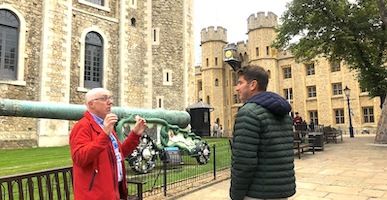
Best Selling Tour
Legends and Lore Tour of the Tower of London
How can you explore London’s top attractions without getting overwhelmed? By joining this guided small group tour! With 1,000 years of history and acres of buildings, the Tower of London is easier to explore and understand with the help of your local guide. Best of all, you’ll even see the famous crown jewels and have a boat ride down the River Thames.
Top Selling Tour
London Walking Tour with Westminster Abbey and Changing of the Guard
This is the perfect tour for someone who wants to get to know the real Westminster Abbey. With skip-the-line entry, you get some quiet time in the nave of the abbey with your guide and small group before exploring the tombs of notable kings, queens, philosophers, and more. Depending on the day, you’ll even get to see the Changing of the Guard ceremony at Buckingham Palace.
Not ready to book a tour? Check out the best London tours to take and why .
9. The Grave Of The Unknown Warrior

World War I | Red Poppies | Congressional Medal | Churchill’s Memorial Close By
This is the most important grave in the whole Abbey and the only one that no one is permitted to walk on. The Abbey audio guide tells us it honours an unknown British soldier who died in the French trenches during World War I.
His remains were recovered from France and buried in the Abbey in 1920. According to the guide, the grave contains soil from the French battlefield. The burial service included a dignified line-up of 100 Victoria Cross-decorated soldiers.
You’ll notice the grave has a frame of red poppies. This is because these flowers grew in the battlefields of Flanders and Belgium, which is why we now commemorate Poppy Day.
On Poppy Day, it is a popular spot for visitors. However, throughout the year, dignitaries and heads of state make a point of paying their respects and laying wreaths.
The USA recognised the sacrifices of the British forces by awarding them a Congressional Medal, which you will find close to the grave. Although, the grave commemorates World War I efforts, don’t forget to visit the memorial to Winston Churchill, Britain’s great World War II leader. It’s close by in the centre of the Nave.
8. Poets’ Corner

Charles Dickens | Shakespeare | Sir Laurence Olivier | Bronte Sisters
The Abbey’s tour book states Geoffrey Chaucer was the first poet buried here in 1400. The celebrated writers and dramatists also buried or commemorated in this section of the south transept include Charles Dickens, Rudyard Kipling, and Sir Laurence Olivier.
You’ll notice a checkerboard of mainly black and white commemorative plaques on the floor. The English Romantic poet Lord Byron and poet/writer Dylan Thomas are next to each other. With Lewis Carroll’s plaque below them, together they form a rather distinguished but accidental T-shape of literary greats. But there are numerous famous writers in this section.
Look out for commemorative plaques and statues to historic authors the Bronte Sisters (Emily, Charlotte, and Anne) and Jane Austen. Also, see William Shakespeare’s statue and a bronze bust dedicated to poet, artist, and engraver William Blake.
Although there’s a significant number of writers honoured in Poets’ Corner, you’ll also find celebrated actors such as David Garrick (1716-99) who has a West End theatre named after him. And great achievers in music such as composer George Frederick Handel (1685-1759).
7. Chapter House

Medieval Paintings | Medieval Tiled Floor |1st English Parliament | UK’s Oldest Door
Built in 1250, it was originally a central meeting room for monks. On the official website (history section) it says the name comes from the practice of holding ‘chapter’ or reading from the bible and other daily duties.
Also, in the 14th century, the House of Commons gathered here to discuss political issues and state affairs. According to the site, the English Parliament actually began here because the preliminary King’s Great Council convened here in 1257.
Medieval Paintings
You’ll notice medieval paintings on the walls featuring prophetic biblical scenes. The information board in the Chapter House says they depict the Apocalypse in the Book of Revelation.
However, the Chapter House’s stand-out features are the stunning stained glass windows. Westminster Abbey’s official tour book states they were first introduced during the Victorian period and had a makeover in the 20th century.
Medieval Tiled Floor
As you study these windows, your eyes will, inevitably, be drawn to the magnificent pillar in the centre of the room that reaches the ceiling. The ceiling’s Gothic fan-like design accentuates these windows arching down from it.
Another notable feature is the remains of a medieval tiled floor, roped off in the centre of the room. The official website describes it as: “one of the finest medieval tile pavements in England.”
Oldest Door In The UK
On entering the vestibule leading to the Chapter House, you’ll notice a small wooden door on your right. This is the oldest door in the UK and the official tour book dates it to around 1050, the period of St. Edward the Confessor.
It’s an important feature because the King replaced the Saxon church with a more substantially-sized Norman one. It’s, perhaps, one of the few links to an era when the Abbey was first known as the westminster (with a small w).
From this Chapter House item, we can see Edward’s significant intervention in the Abbey’s early years. The website describes him as “the re-founder of Westminster Abbey.”
However, other monarchs such as Elizabeth I also lay claim to being the “refounder”. On the same website, we are informed that she refounded the Abbey as a Collegiate Church under the authority of the Sovereign. This is a direct line to the monarchy that stands today, so the title of “refounder” is certainly contestable. The complex evolution of this religious institution throughout history requires careful examination.
Not ready to book a tour? Check out our London Guide for more resources.
6. Pyx Chamber

11th Century Tiled Floor | Oldest Room in London | Oldest Part of Abbey | Royal Treasury
This medieval room can be found in a section of the Abbey called East Cloisters. The official tour book tells us it was built in A.D. 1070-80 and is the oldest room in London and also one of the oldest constructs in the Abbey.
The name comes from its function as a 13th-century royal treasury. The book points out that the word “pyx” refers to a box (pyx) containing pieces of gold and silver. So, you can understand the heavy oak door! It originally had five locks.
You’ll notice the medieval tiled floor is still intact. The Abbey’s website informs us that some of these tiles date back to the 11th century. Other notable features are the oaken chests once used to store state documents and monk’s robes known as copes.
Although access to the room is restricted, the door is open so you can see inside. Also, you can take a few steps onto a platform beyond the door to get a better view.
5. The High Altar

Coronation | Cosmati Pavement | Church Services | Best Central Marker
The High Altar has two main purposes. Traditionally, it is where Britain’s monarchs are coronated. The Coronation Chair is displayed in another part of the Abbey but during coronations, it is placed facing the High Altar. The Abbey’s audio guide informs us that Queen Elizabeth II was crowned here in 1953 and over 8,000 guests attended. In general, the High Altar is where visitors congregate for church services.
Here are some interesting features to look out for. Don’t miss the centrepiece elaborate gilded screen. It was designed by Sir George Gilbert Scott in 1867. In the tour book by Esme West, you can read how the embroidered hangings change according to the church season.
Make a point of visiting the Cosmati pavement just in front of the altar. It was laid in 1268 and you’ll surely appreciate the craftsmanship in the glass and marble design. Westminster Abbey’s own tour guidebook describes it as “the finest example in Northern Europe”.
You might find it helpful to remember, the High Altar is not too far from the main entrance. It’s also very close to other important spots such as Poet’s Corner, The Choir, the North Ambulatory, and the entrance to Cloisters. So, it’s a great central marker in case you get lost!
4. The Quire Screen (And Choir)

Gateway | Choir | Scientists | Sir Isaac Newton | Charles Darwin | Stephen Hawking
In an area of the Abbey called the Nave, you’ll find a magnificent stone screen that separates the Nave from the Choir section. This is the Quire Screen. The audio guide gives its function as an ornate gateway found in all such monastic churches. The gilded parts are real gold. The original design can be traced back to medieval times. But the Westminster Abbey website will confirm it was renovated in 1834.
To the left of the Quire Screen, you’ll find a number of memorials to Britain’s greatest scientists. Look out for the graves of Sir Isaac Newton, Charles Darwin, and Stephen Hawking.
The Choir section of the Abbey is on the other side of the screen/gateway. Here, you’ll find choir stalls for the daily services, some of which are assigned to high commissioners of the Commonwealth.
The current Choir accommodates twenty-two choristers and was built in the 19th century. However, its origins lie in the monastic choirs of medieval times. The Abbey’s audio guide informs us that if these medieval choristers arrived late they had to lie face down on the floor!
3. The Queens Window
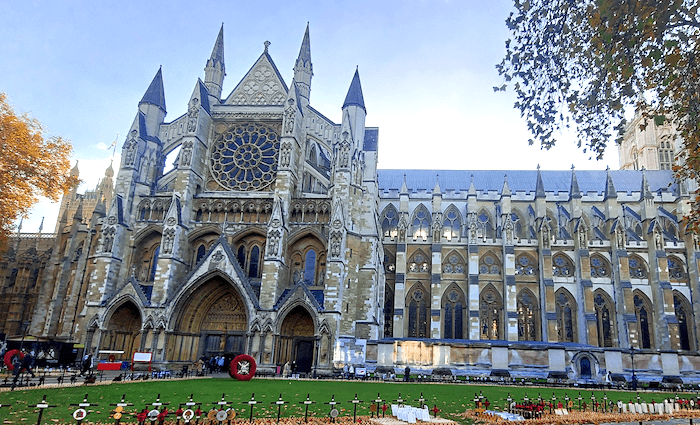
Artist David Hockney | Stain Glass Window | Yorkshire Countryside | Queen Elizabeth II
David Hockney, one of Britain’s greatest living artists, was invited by the Dean of Westminster to create a stained glass window that celebrated the reign of Queen Elizabeth II. He was told that the commission must be true to his own artistic style and not necessarily follow the Westminster Abbey signature. The work was completed in 2018.
And it is markedly different from the faith-based and regal designs that dominate the Abbey. Hockney’s simplistic, colorful style can be described as faux-naive and has a very childlike feel. On the Abbey website, he claims the work is set in his Yorkshire homeland. You can also read on the site how its landscape features show the Queen’s connection to the countryside. Traditional stained glass artists from Barley, York, directed by Hockney, helped create the piece.
2. Lady Chapel
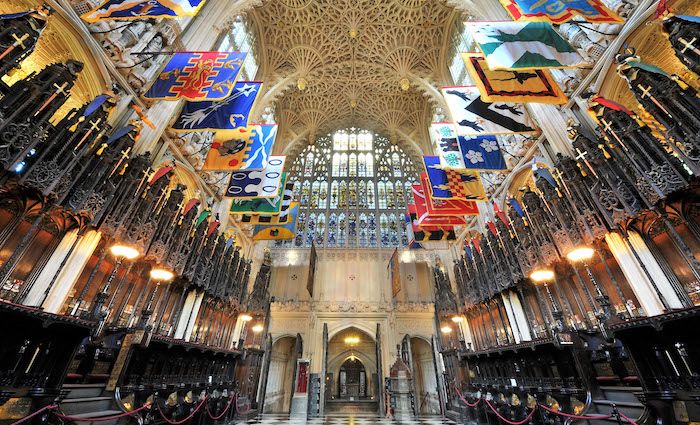
Henry VII | The Reformation | Catholics vs Protestants | Church of England | Henry VIII
According to the Abbey tour book, The Lady Chapel gets its name from the Blessed Virgin Mary. Henry VII (1457 – 1509) had it constructed to contain the remains of Henry VI but ultimately he was never moved from his original burial place in Windsor. However, Henry VII and his wife were buried here. Interestingly, the Chapel is also known as King Henry VII’s Chapel in his honour.
Elizabeth I and Mary I
Here lie the tombs of Elizabeth I and Mary I. The coffins of these two queens, who are half-sisters, were placed one on top of the other. Elizabeth’s tomb is the visible one. A grand white marble effigy shows her in the death state clutching a sceptre.
They were both daughters of Henry VIII (1491- 1547) who ruled during a period of religious turmoil, which set his new Church of England against Catholicism. The Abbey tour book gives a brief history of these events and the opposing views held by the sisters.
Mary I was a Roman Catholic and during her reign, Britain resumed close ties with the pope. According to the Abbey website, even her coronation oil was a gift from the Catholic bishop of Arras. It replaced the oil “tainted” by her Protestant brother Edward VI during his coronation.
Mary was feared and despised for persecuting Protestants, for which she gained the nickname “Bloody Mary.” But these were topsy-turvy times, and her sister Elizabeth I, who was crowned after her, favoured Protestantism. Therefore, the Church of England became the state religion and she upheld the desires of her father Henry VIII.
The Reformation, as this religious split was known, divided the sisters in life but not in death. As we have seen, they were buried together. The official tour book (edited by Esme West) underscores this by referencing the Latin inscription on the tomb: “Partners both in throne and grave, here rest we two sisters, Elizabeth and Mary, in the hope of one Resurrection.”
1. North Ambulatory

Large More Elaborate Tombs | Edward The Confessor | Henry III | St John The Baptist Chapel
Edward The Confessor
The North Ambulatory is easily found—its entrance is close to Westminster Abbey’s main entrance. Here you’ll find a number of historic and elaborate must-see memorials and tombs side-by-side. Edward the Confessor’s shrine is closed to visitors because of its fragility. But you can still see the lavish care and craftsmanship that went into it.
He’s an important figure because he led the most significant restructuring in its early history. According to the website, with the pope’s sanction, he built a large Norman church in 1065 dedicated to St. Peter in place of the modest Saxon one. Because of this, he is credited with being the refounder of Westminster Abbey and is described as such on the site.
It’s significant that the Abbey only became known as Westminster during his reign. Minsters were monastic communities and this one was in the west—hence Westminster. Both the official tour book and the website point out this fact.
After his death, the Pope declared him a saint. This canonization led to the Abbey becoming a place of pilgrimage and increased its popularity amongst worshippers.
St. John The Baptist Chapel
Directly opposite Edward the Confessor’s shrine is St. John the Baptist Chapel. Inside you’ll find the tallest memorial in the Abbey, which is dedicated to Henry Carey, Lord Hunsdown (1525-96), Queen Elizabeth I’s Lord Chamberlain.
Another of the lavish-looking tombs that dominate this section is that of Henry III (1207-72). The official tour book provides lots of information about his contribution to the Abbey’s design.
His architects are responsible for the look of the Abbey as it is today. He had it rebuilt in the Gothic style that was fashionable in French cathedrals. You’ll notice decorative mosaic pieces missing from his tomb. An information board beside the shrine says this is because of pilgrims stealing them.
What Is Westminster Abbey?
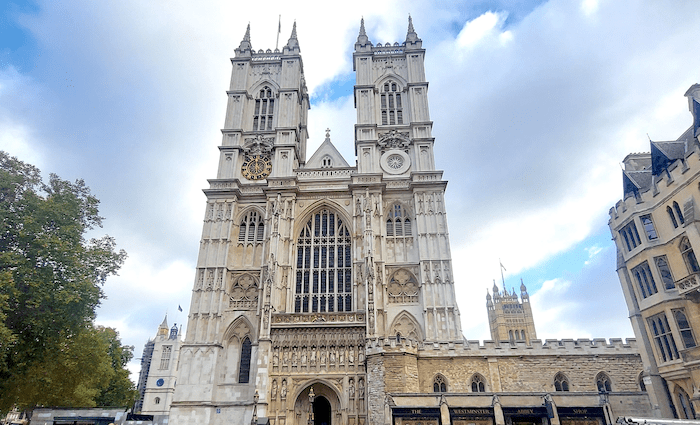
Where Did The Name Come From?
One of the most important figures in the Abbey’s history is St. Edward the Confessor (1002 – 1066). The Abbey’s official tour says that in 1065 he had the church reconstructed as a sizeable place of worship and increased its monastic land. Interestingly, the book also says the church became known as the westminster (with a small w) during his reign because minsters were monastic communities and this one was situated towards the west of the city.
Who Is Responsible For The Architectural Style?
The Abbey we see today was built in the 13th century by Henry III. His architects followed the Gothic style that embodies French cathedrals. Find his tomb in the Abbey’s North Ambulatory section, close to Edward the Confessor.
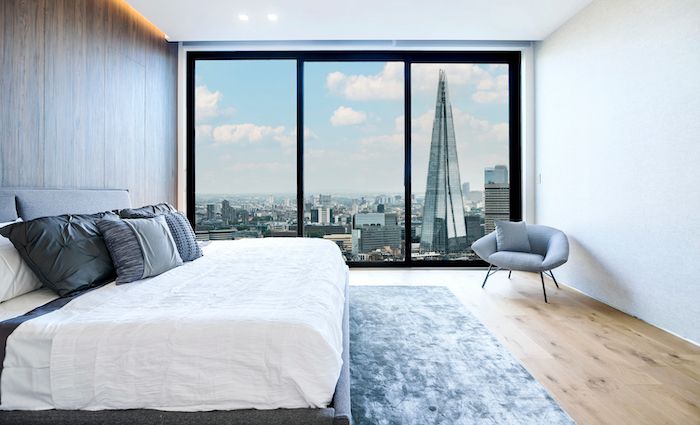
Find the best places to stay
Where To Stay in London
Deciding where to stay at a great hotel in London can take some effort since it’s a massive city. Make your decision easier with our list of the best neighborhoods and hotels in London.
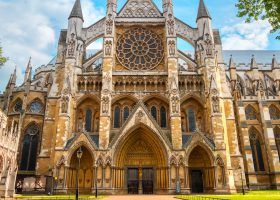
Reader Interactions
Leave a comment cancel reply.
Your email address will not be published. Required fields are marked *
- Travel Guide
- In The Press
POLICY & TERMS
- Cancellation Policy
- Terms & Conditions
- Privacy Policy


Woman&Home
32 facts about Queen Elizabeth II's Coronation that you may never heard of before
Posted: April 24, 2024 | Last updated: April 24, 2024
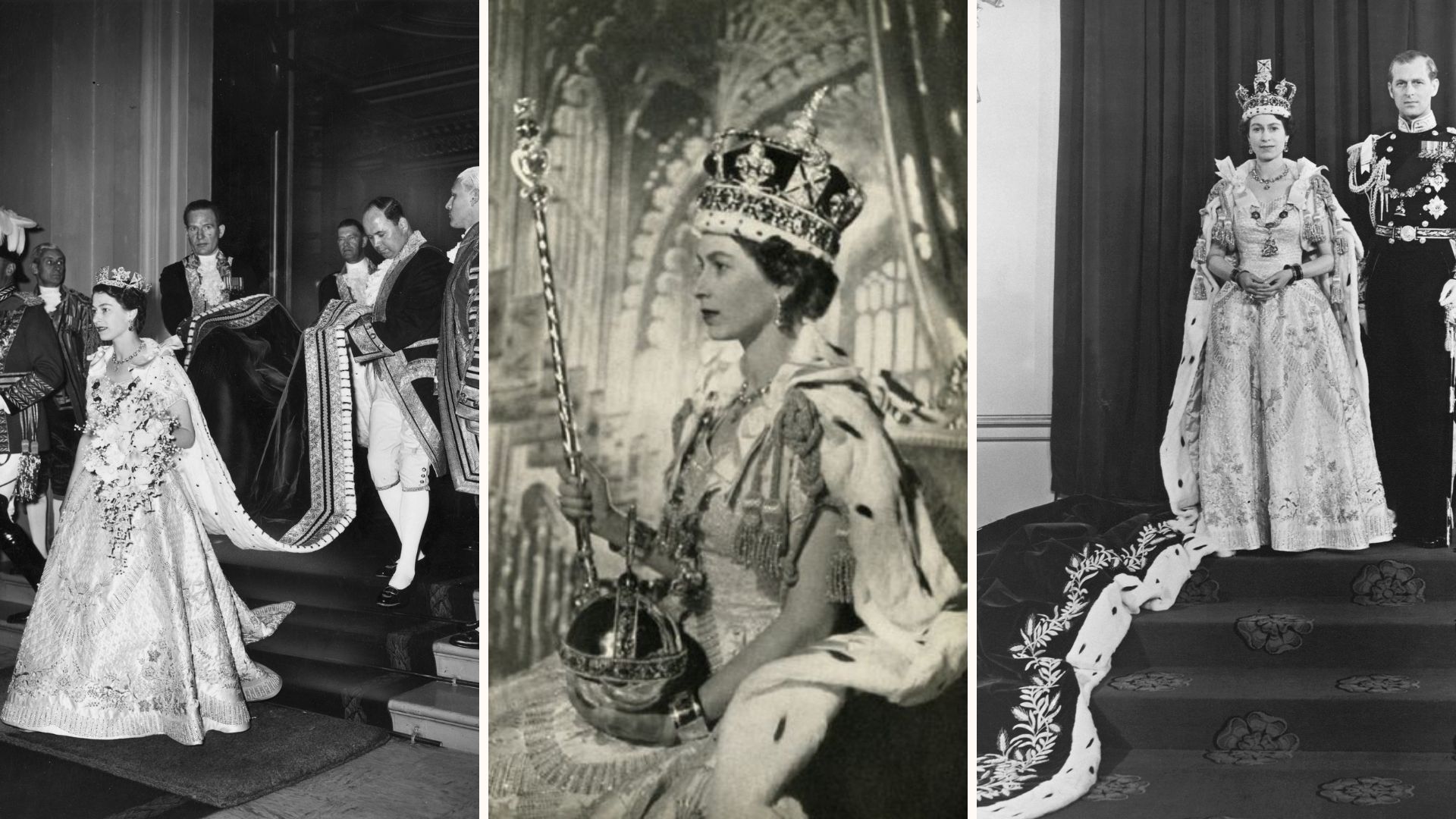
Queen Elizabeth II's Coronation was a monumental moment in history and the first event many watched on TV
Queen Elizabeth II's Coronation took place on 2nd June 1953, 16 months after she officially became the Queen after her father, King George VI passed away. It was a momentous day in history and a lavish affair by all accounts, capturing the excitement of the nation.
Queen Elizabeth II was the longest-serving British monarch in history, loved by the nation for her no-nonsense attitude, incredible work ethic and love of her family. We're looking back at where it all began at the grand service at Westminster Abbey, when the Queen was just 27 years old.
We consulted The Royal Family's website archives to find out 32 facts that you might not know about Queen Elizabeth II's Coronation. How long did it last? How was it in the audience? And did everyone eat Coronation Chicken on the big day? These answers might surprise you.

The Queen recycled her Coronation dress multiple times
The royals have been known to recycle their outfits - and the late Queen was no exception. Since the Coronation, the Queen reportedly wore her coronation dress six times including during the Opening of Parliament in New Zealand and Australia in 1954, as pictured here.
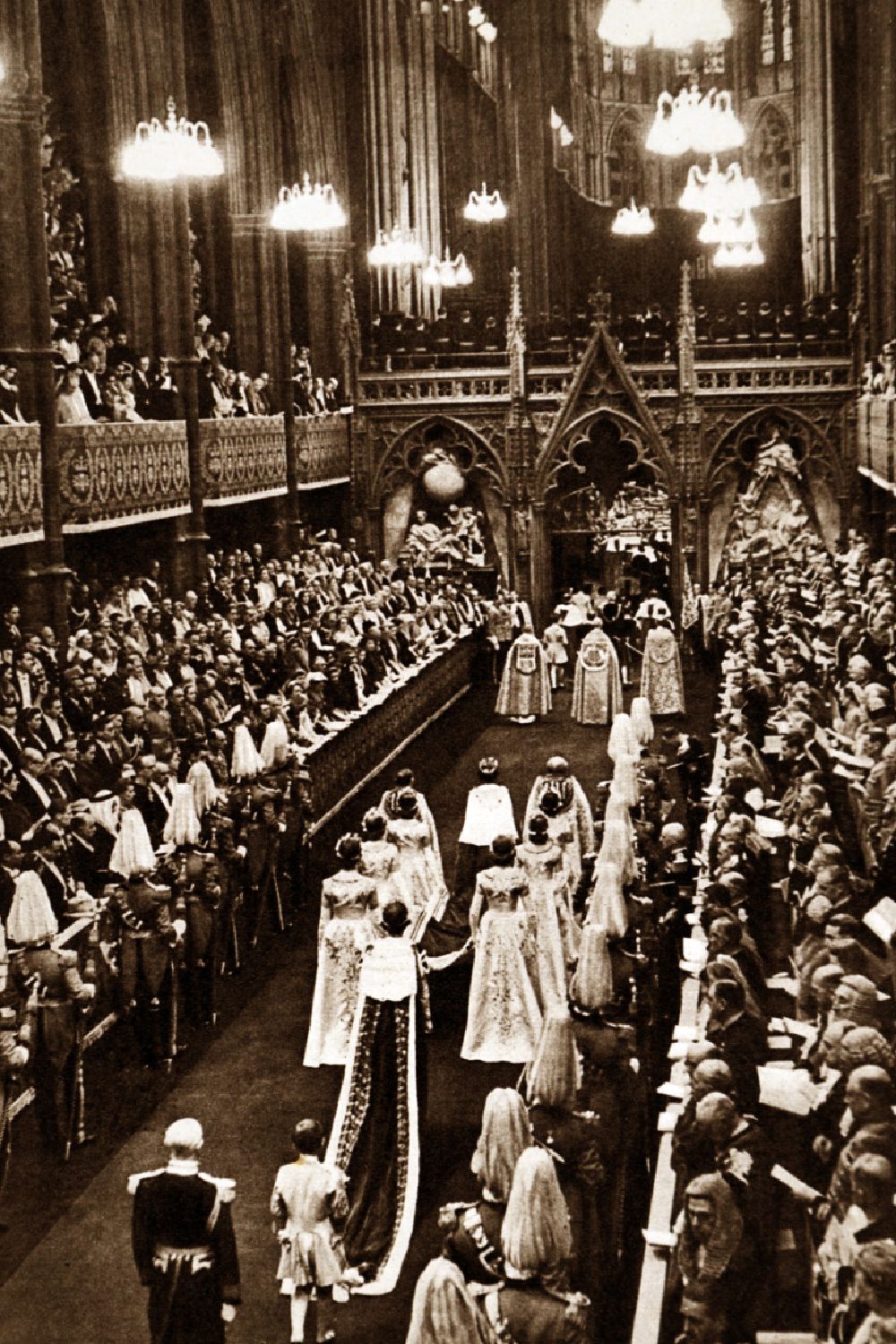
The Coronation running time was actually reasonably short
The Queen's coronation service was certainly a grand affair, but the actual ceremony only lasted three hours, beginning at 11.15 am. The coronation had six parts: the recognition, the oath, the anointing, the investiture (which includes the crowning), the enthronement and the homage.
The Queen had a big send off from Buckingham Palace
Naturally, the Queen's send-off to Westminster Abbey was a large-scale affair, with Buckingham Palace housemaids, chefs and gardeners who gathered inside the Grand Hall at Buckingham Palace to see Queen Elizabeth leave.
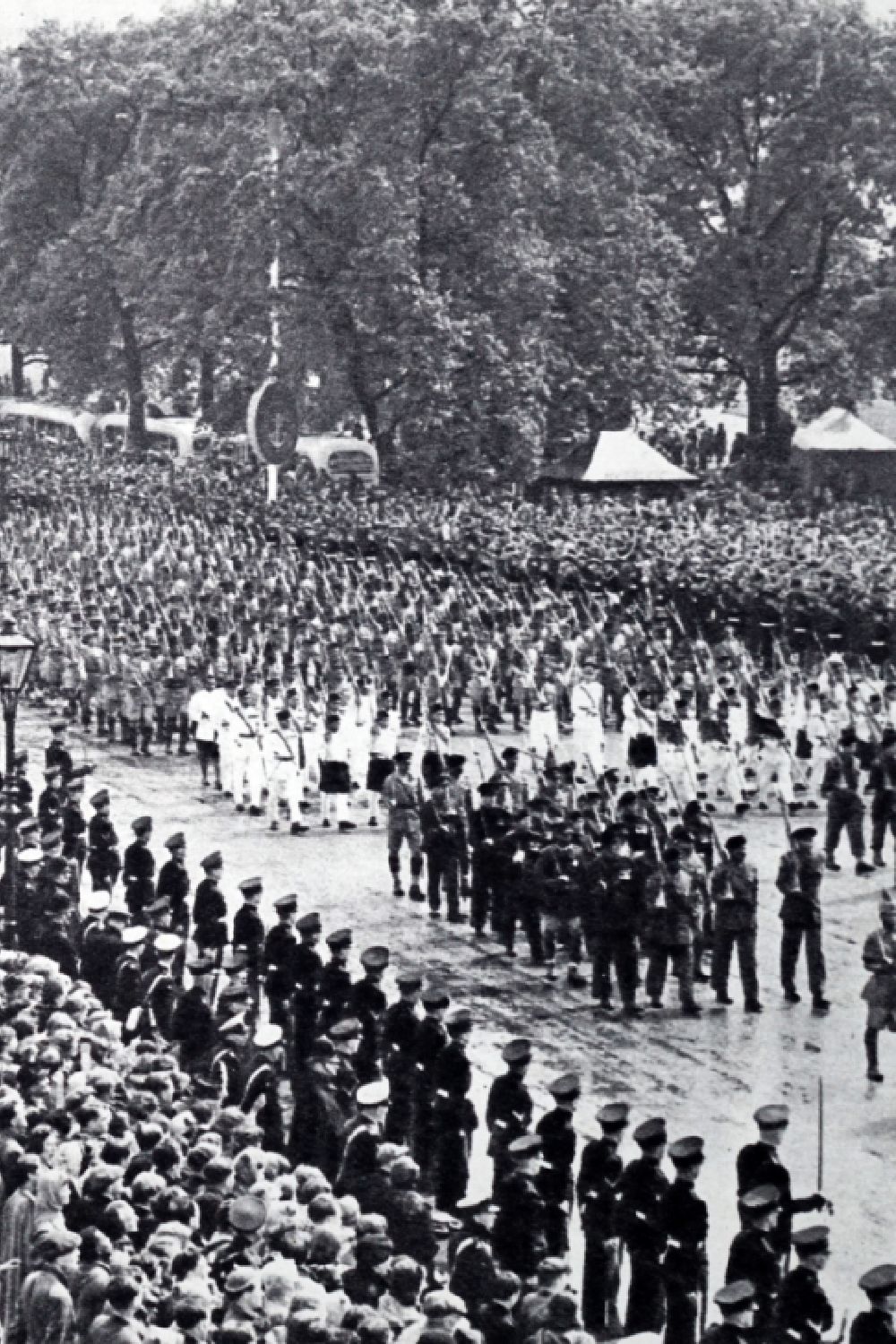
There was a new batch of Anointing Oil, breaking royal tradition
Using a special Anointing Oil is part of the official coronation process and there's a special recipe for this fragrant oil, containing orange, cinnamon, musk, ambergris and roses. In usual practice, the oil would be made in a large batch to be used at several coronation services, but in May 1941, a bomb hit the Deanery destroying the phial, meaning a new batch was made specifically for Elizabeth.
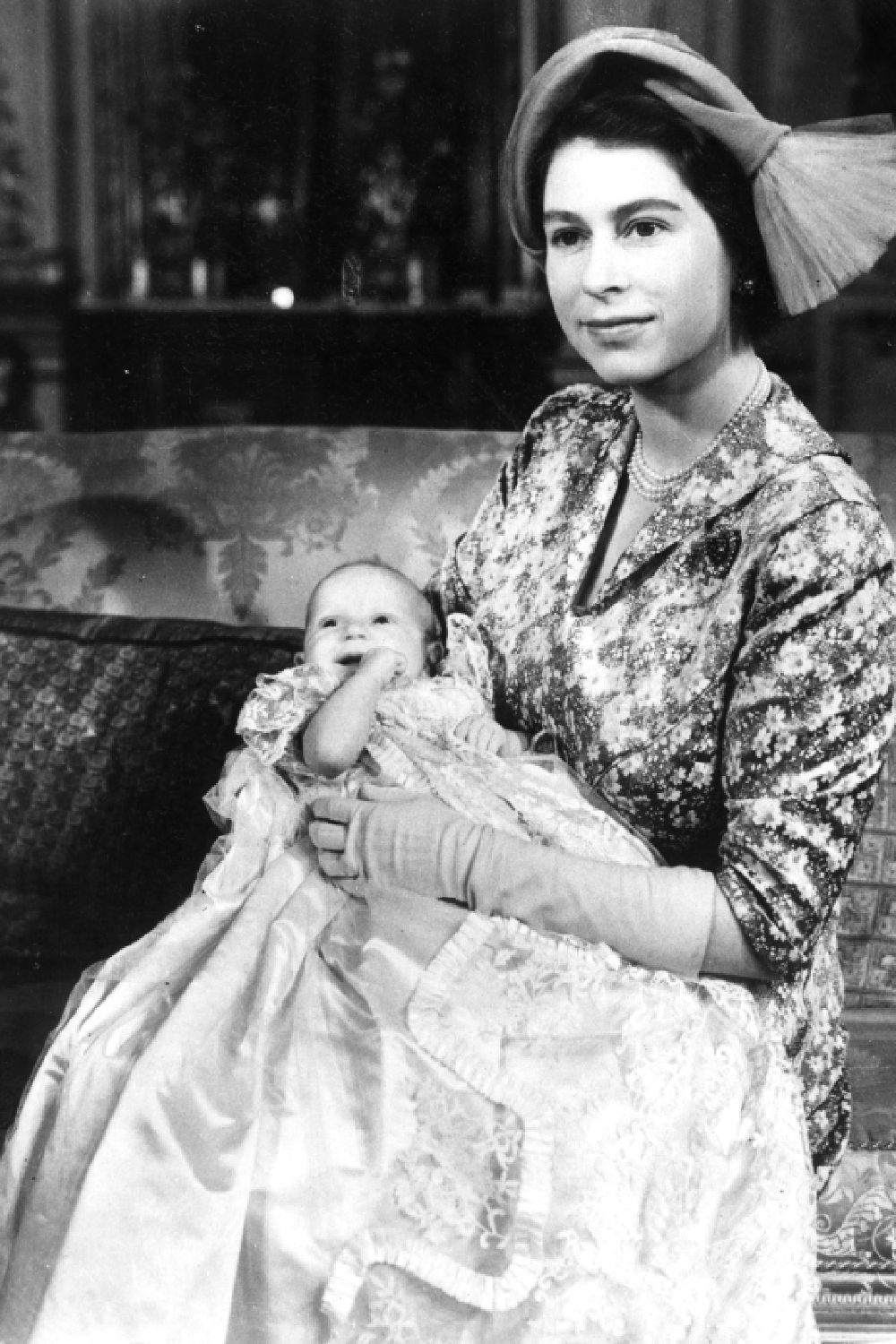
Princess Anne didn't attend the ceremony
Princess Anne didn't actually attend the ceremony as she was considered too young (she was two years old at the time). However, the young Princess did later join the royal family on the Buckingham Palace balcony.
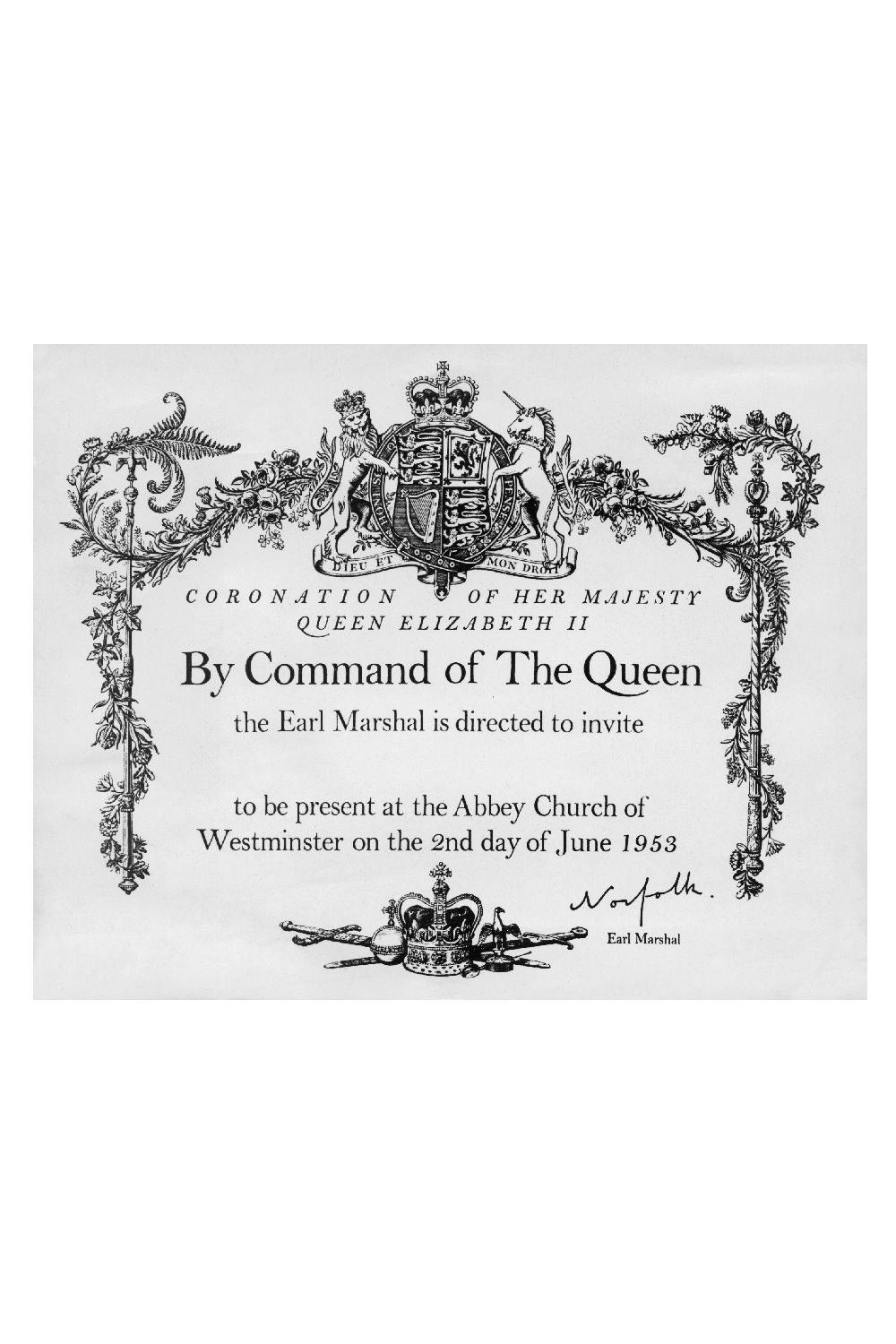
Some special Coronation invitations were given out
As a sweet touch, Prince Charles received a special hand-painted children's invitation to his mother's coronation. We don't have a copy of this invitation, but we managed to unearth an original Coronation Day invitation from 1953.
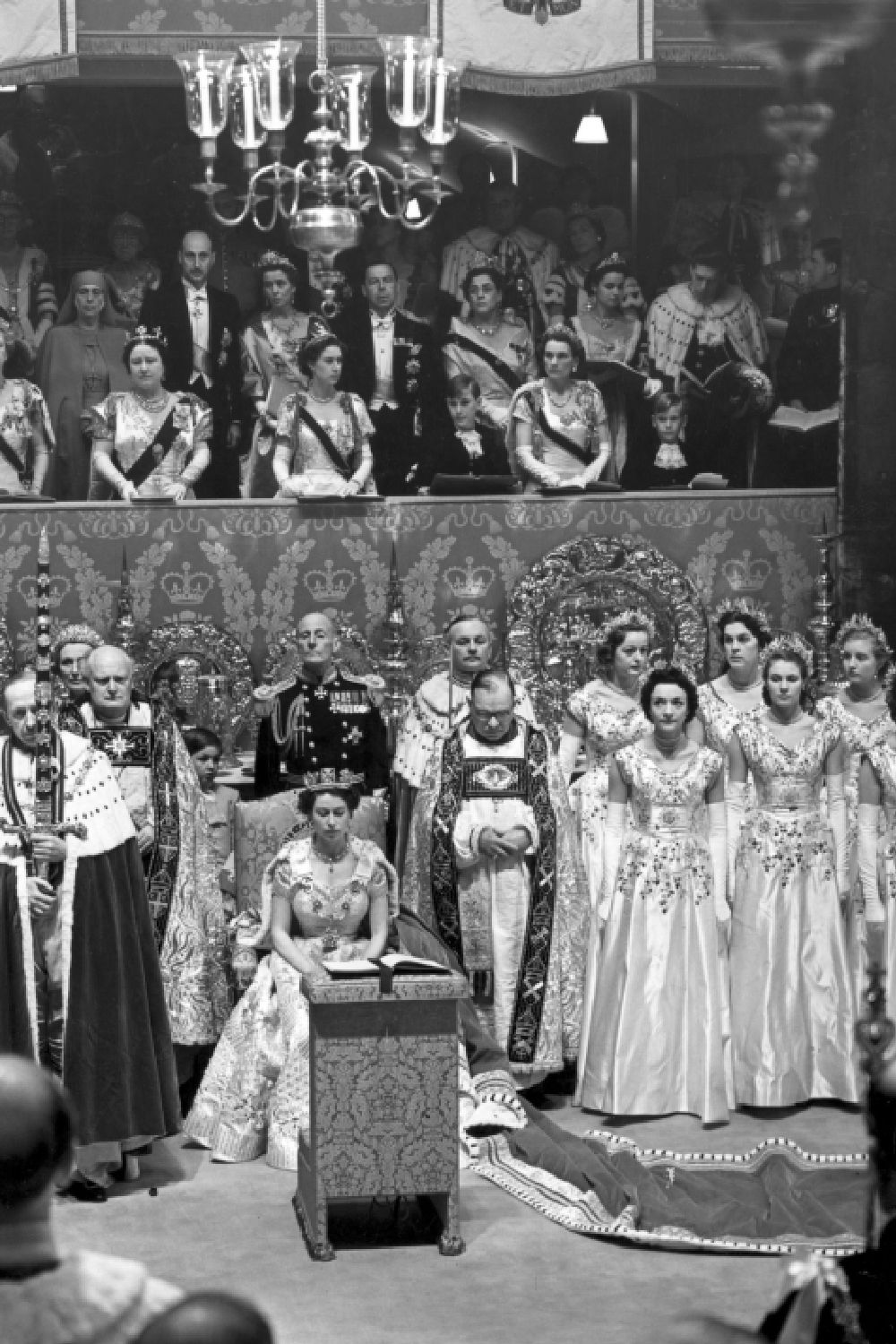
The Coronation Day guest list was huge
A huge 8,251 guests attended the Queen's Coronation ceremony at Westminster Abbey, with the procession made up of 250 people including Church leaders, Commonwealth Prime Ministers, members of the Royal Household, civil and military leaders and the Yeoman of the Guard.
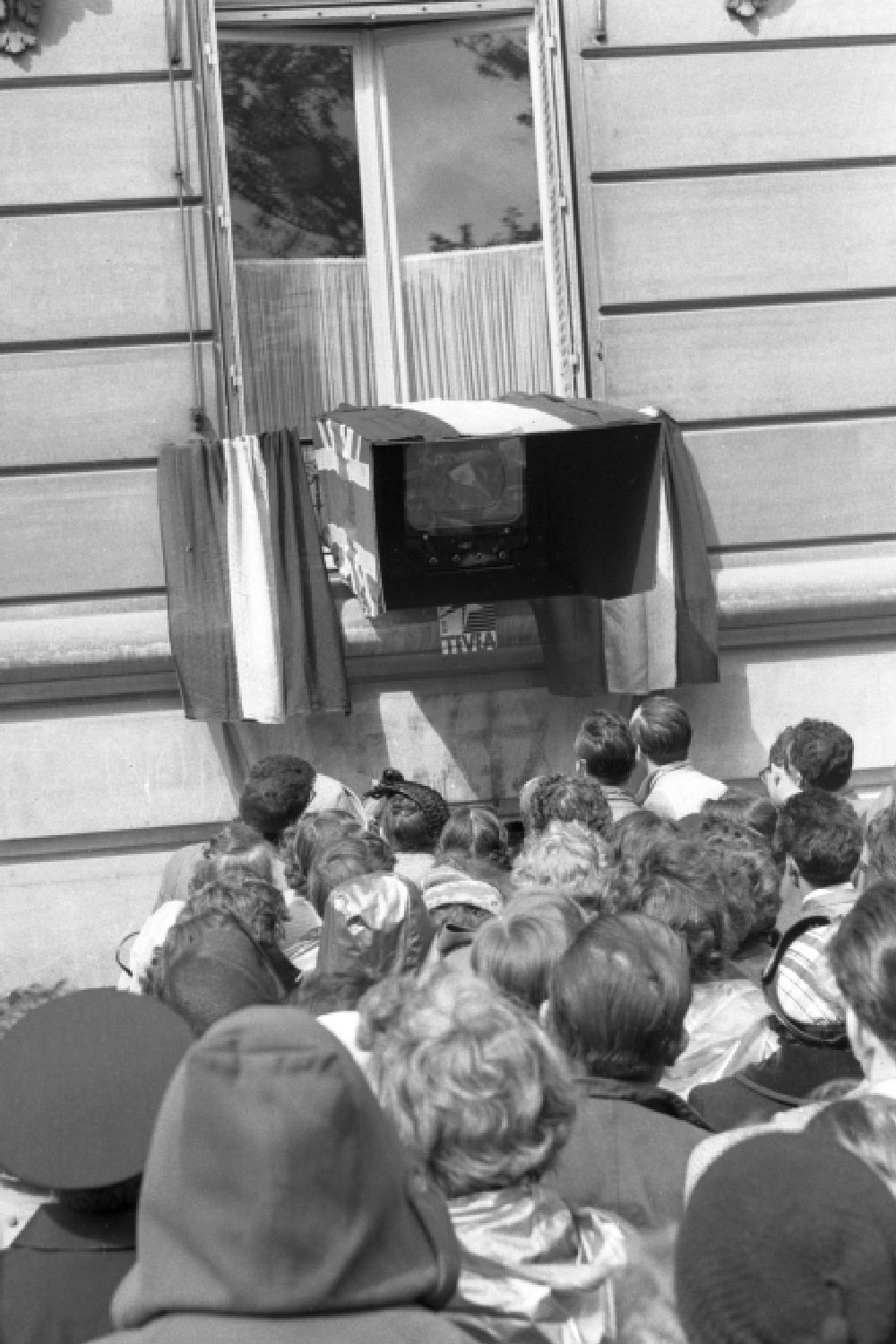
The event had a captive audience
Reportedly, a whopping 27 million people in the UK watched the ceremony on television and 11 million listened on the radio, with even more viewers across the globe. This photograph depicts a crowd in France gathering together to watch the coronation ceremony on a public screen.
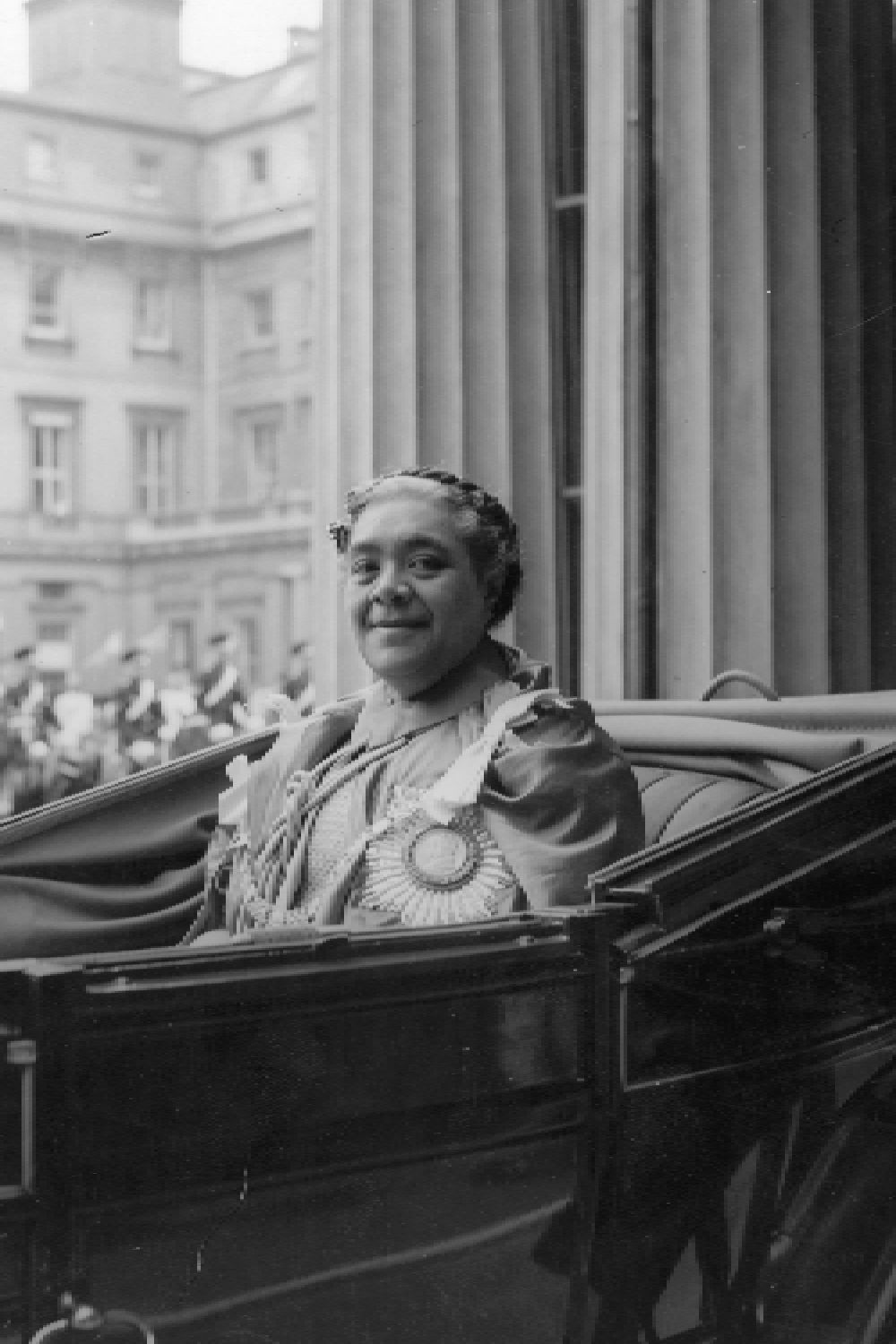
There was a stand-out guest on the Big Day
In true British fashion, the Queen's Coronation Day was a rainy one. And one guest in particular won the hearts of onlookers with her response. Queen Salote Tupou III of Tonga kept the roof of her carriage down, beaming at the crowds, despite the miserable weather.
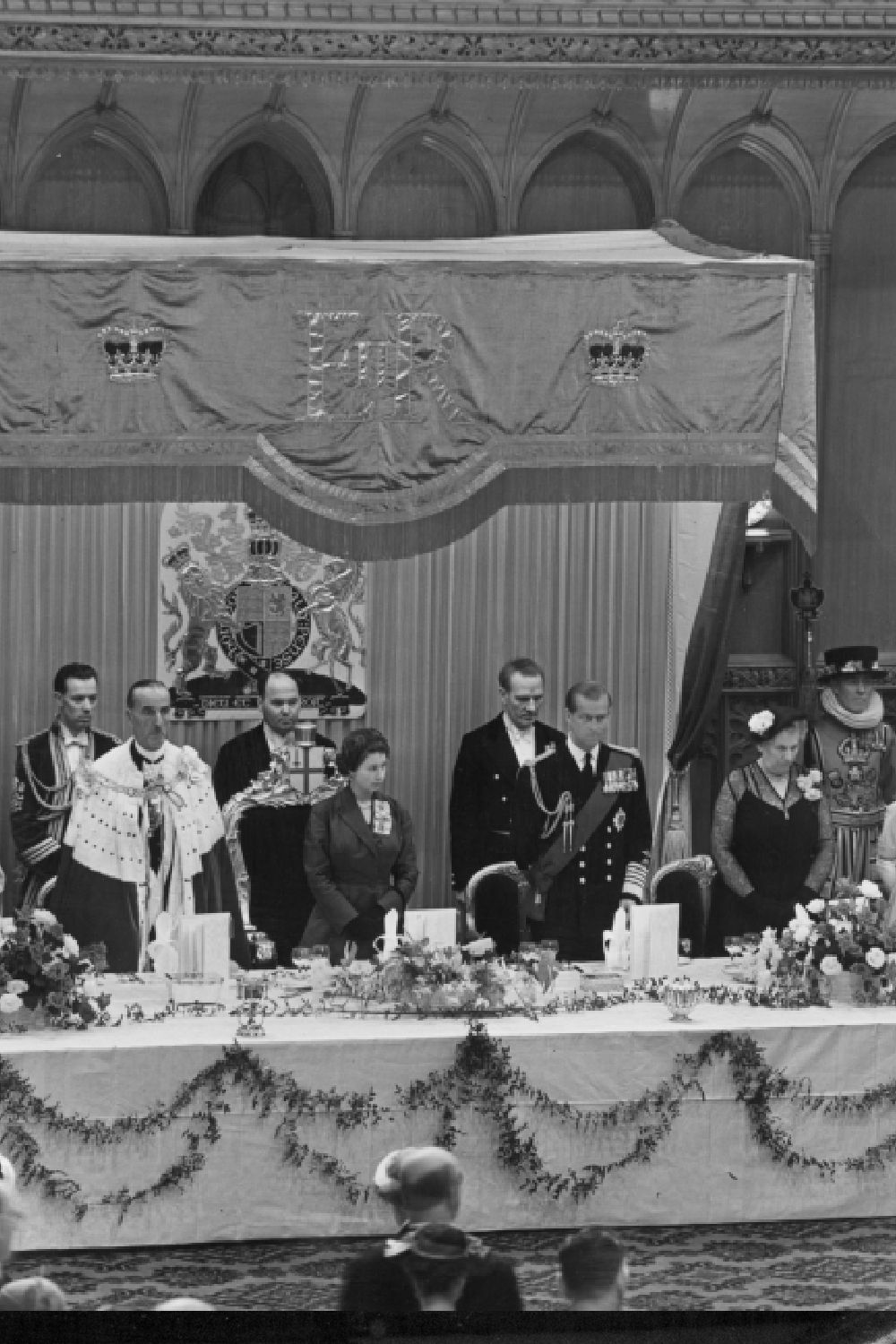
Coronation Chicken was invented for guests from overseas
Coronation Chicken is a dish that's often associated with royal occasions, but it was actually invented for guests from overseas, who were entertained after the Coronation ceremony. The recipe was actually suggested by florist Constance Spry, who came up with a recipe of cold chicken in a curry cream sauce with a well-seasoned dressed salad of rice, green peas and mixed herbs.
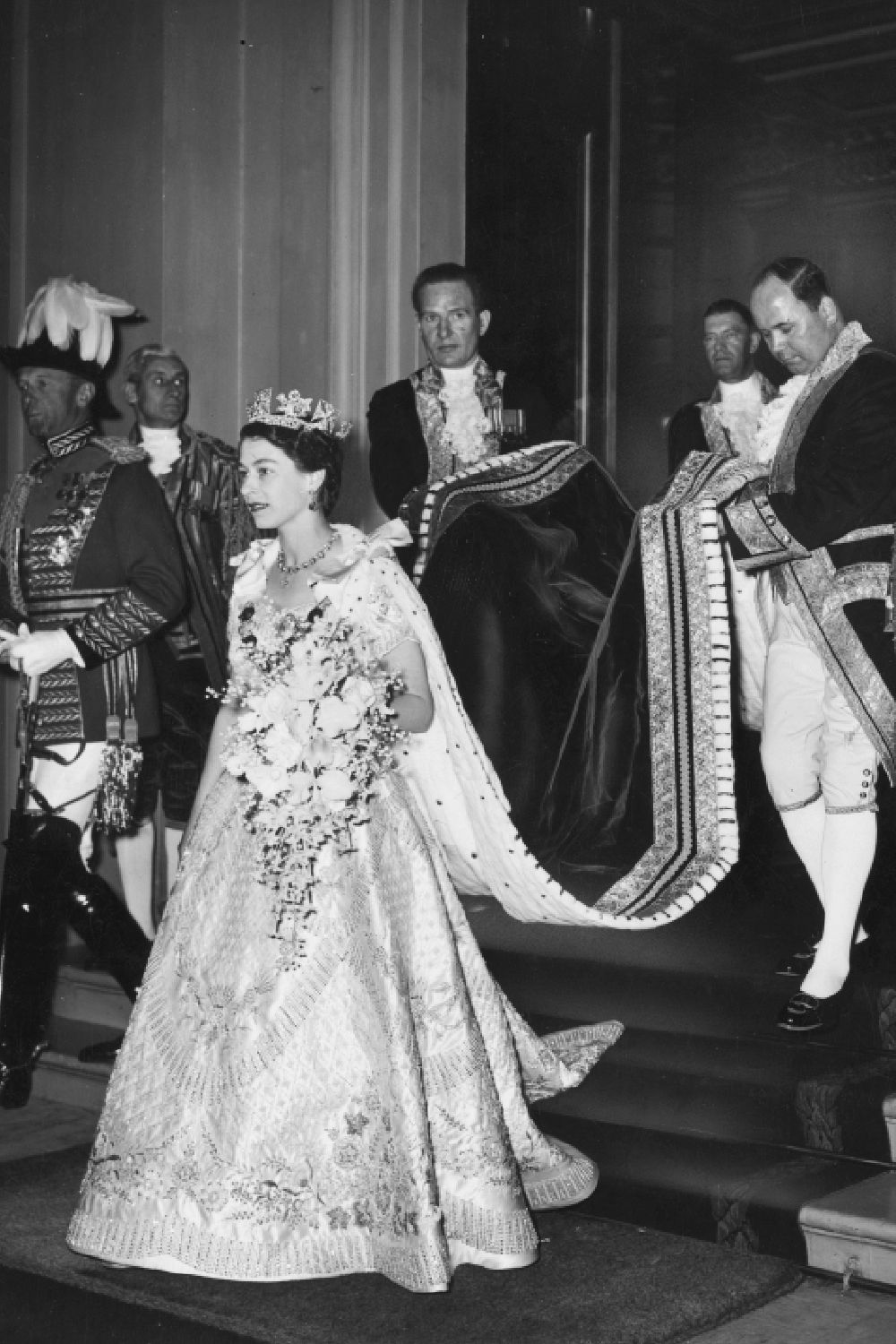
The Queen's bouquet had a special significance
Queen Elizabeth's coronation bouquet was seriously impressive, with stunning white flowers representing different parts of the UK. The bouquet consisted of orchids and lilies-of-the-valley from England, stephanotis from Scotland, orchids from Wales, and carnations from Northern Ireland and the Isle of Man.

Cecil Beaton took the most iconic photograph of the day
Of course, there were hundreds - if not thousands - of beautiful pictures taken on Coronation Day, but perhaps the most iconic was one in particular taken by esteemed royal photographer Cecil Beaton. For the striking image, he had Queen Elizabeth pose in front of a backdrop depicting Henry VII's Chapel in Westminster Abbey.
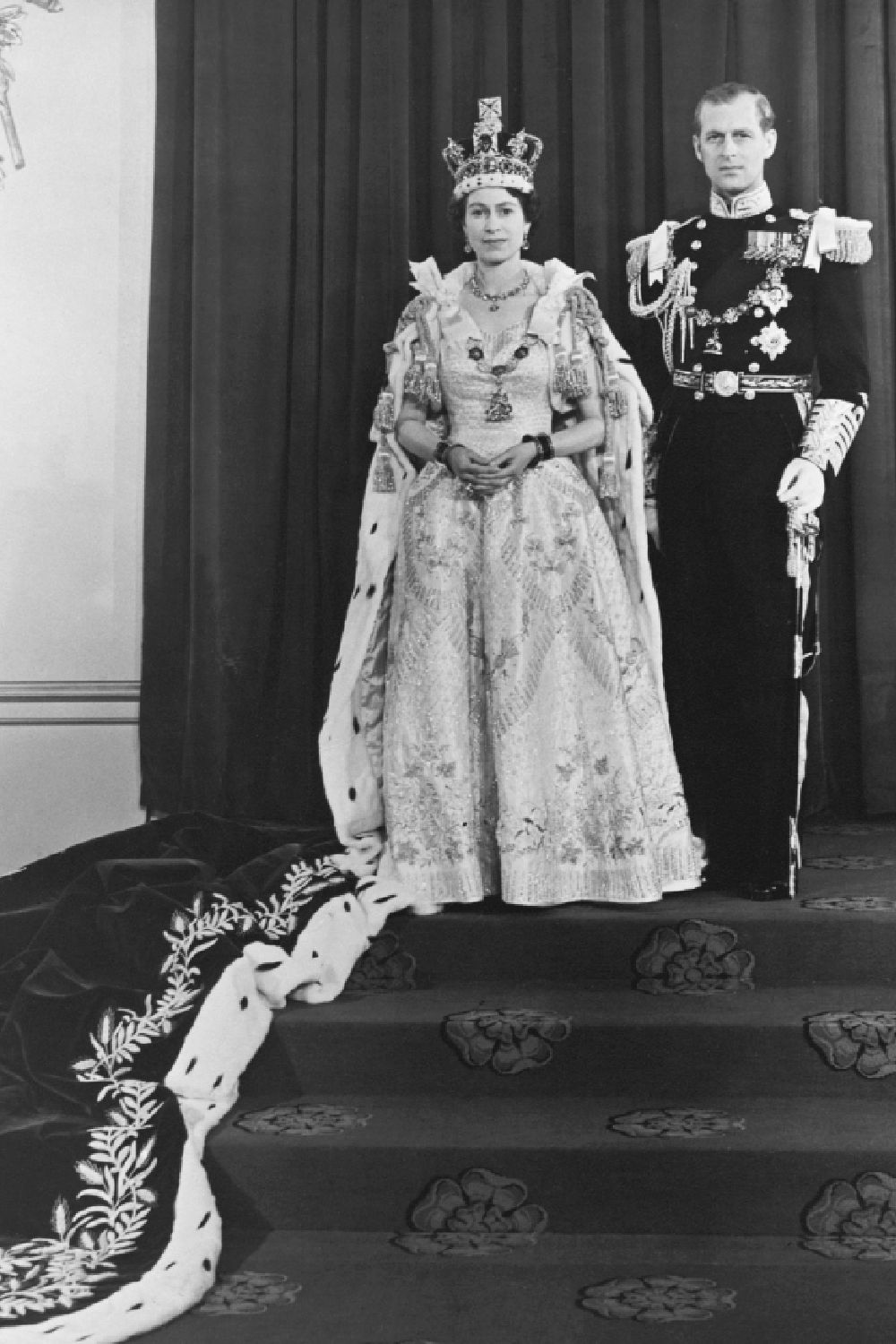
The Duke of Edinburgh wore full navel dress
It was by all means a smart occasion for all involved and the Duke of Edinburgh wore his official Naval uniform for the journey to and from Westminster Abbey to support his wife during her Coronation. While in the Abbey, Philip wore a coronet and an opulent robe over his uniform.
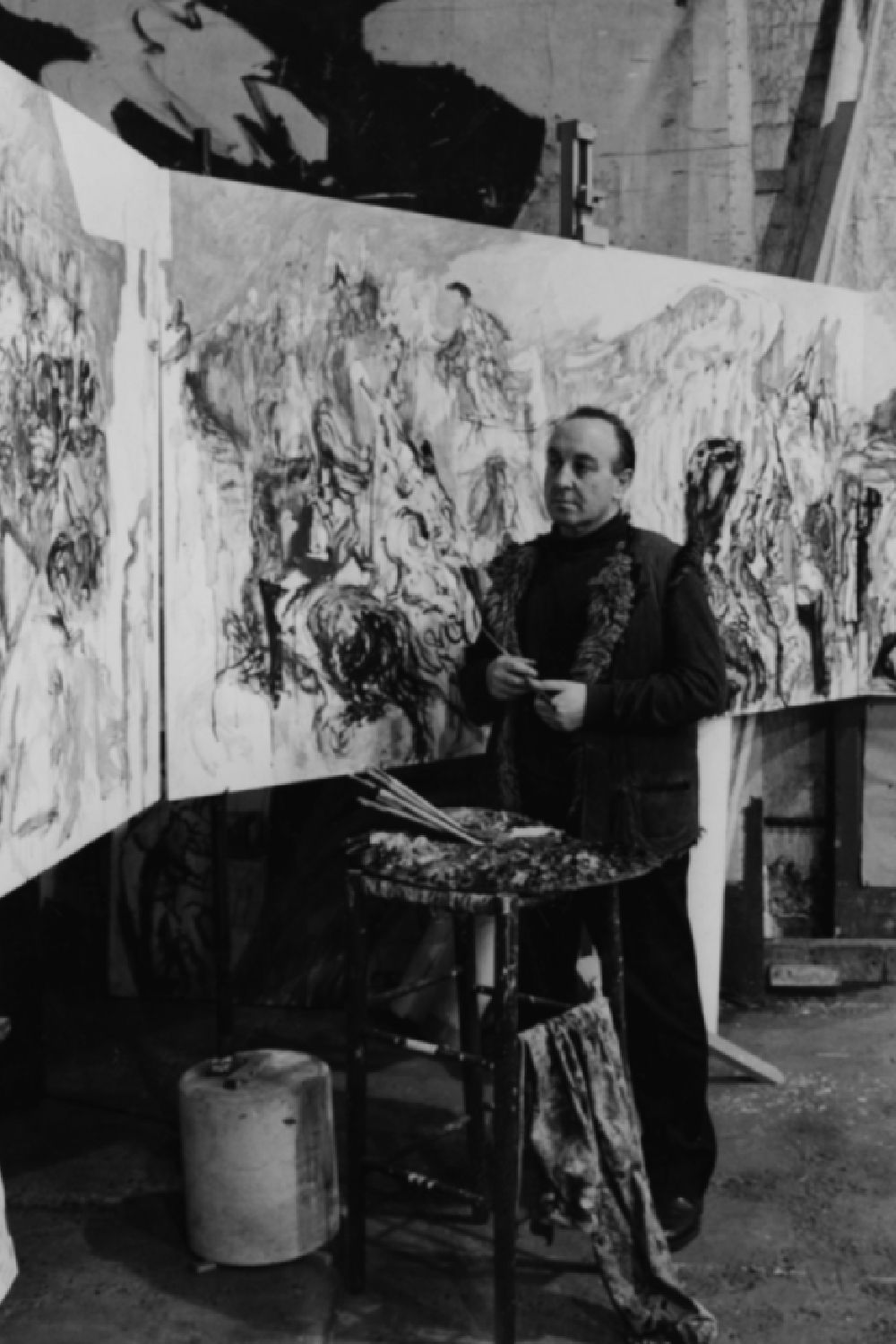
The official artist for the day was Feliks Topolski
Polish artist Feliks Topolski was the official artist for the Queen's Coronation and he worked tirelessly on a large mural showing scenes from the Queen's Coronation in 14 sections. The artist was commissioned by Prince Philip in a sweet gesture to the late Queen.

The Coronation date was on hold for a while
Queen Elizabeth ascended to the throne on the 6th of February 1952 when her father King George VI passed away, but the actual Coronation Day didn't take place until 1953 - 16 months later. The country was still under a lot of economic pressure following the war and this coupled with the mourning period for the King means that the ceremony was significantly delayed.

The Queen's dress was embroidered in a significant way
Her Majesty's stunning coronation dress was crafted from white stain and embroidered in gold and silver thread with some significant images for those if you were to look closely enough. The dress, designed by British fashion designer Norman Hartnell, was adorned with emblems of the United Kingdom and the Commonwealth.
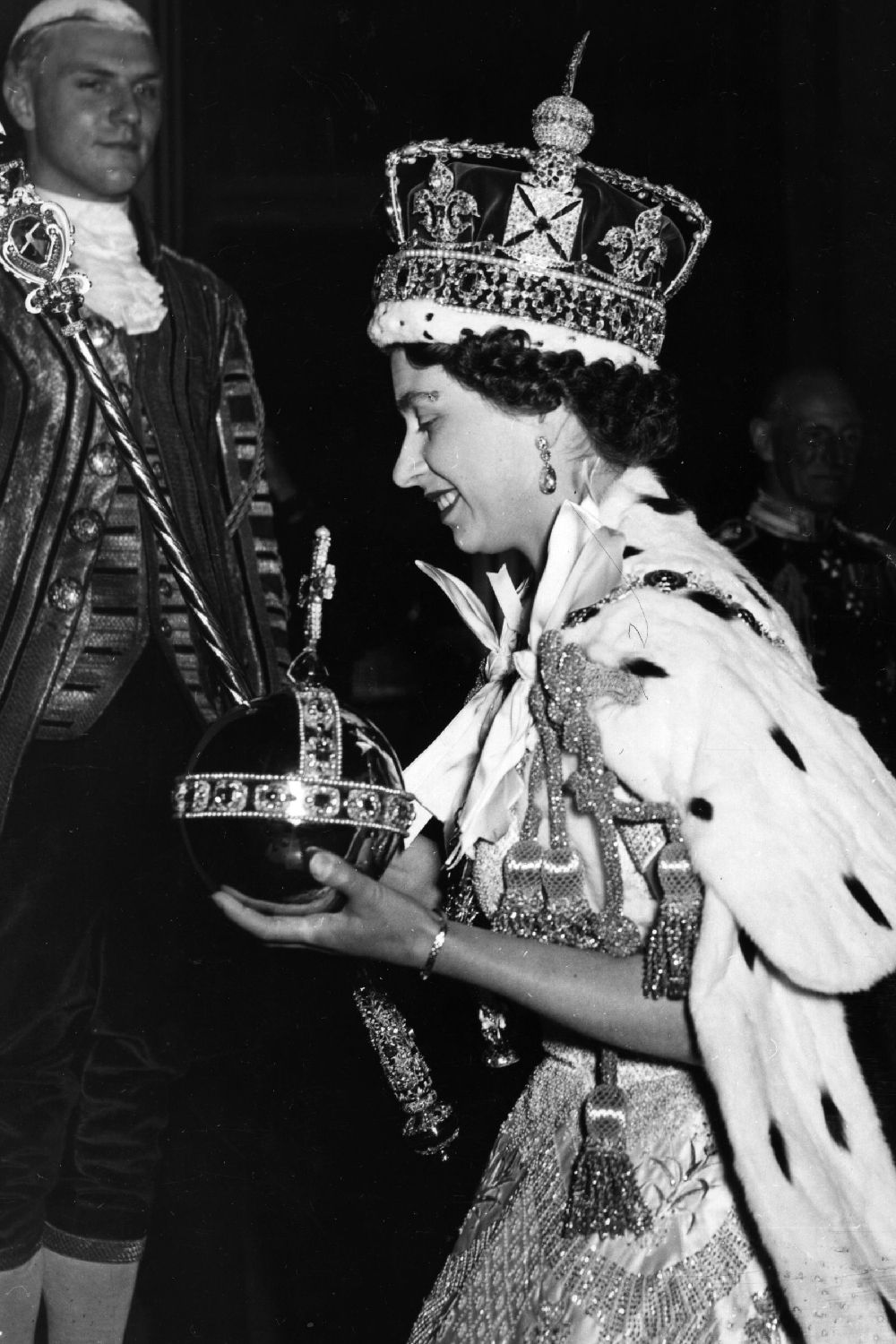
The Queen's crown featured over 1,000 diamonds
The Queen's incredible coronation crown, known as the George IV State Diadem, was made with 333 diamonds, 169 pearls and roses, thistles and shamrocks and crafted in 1820.
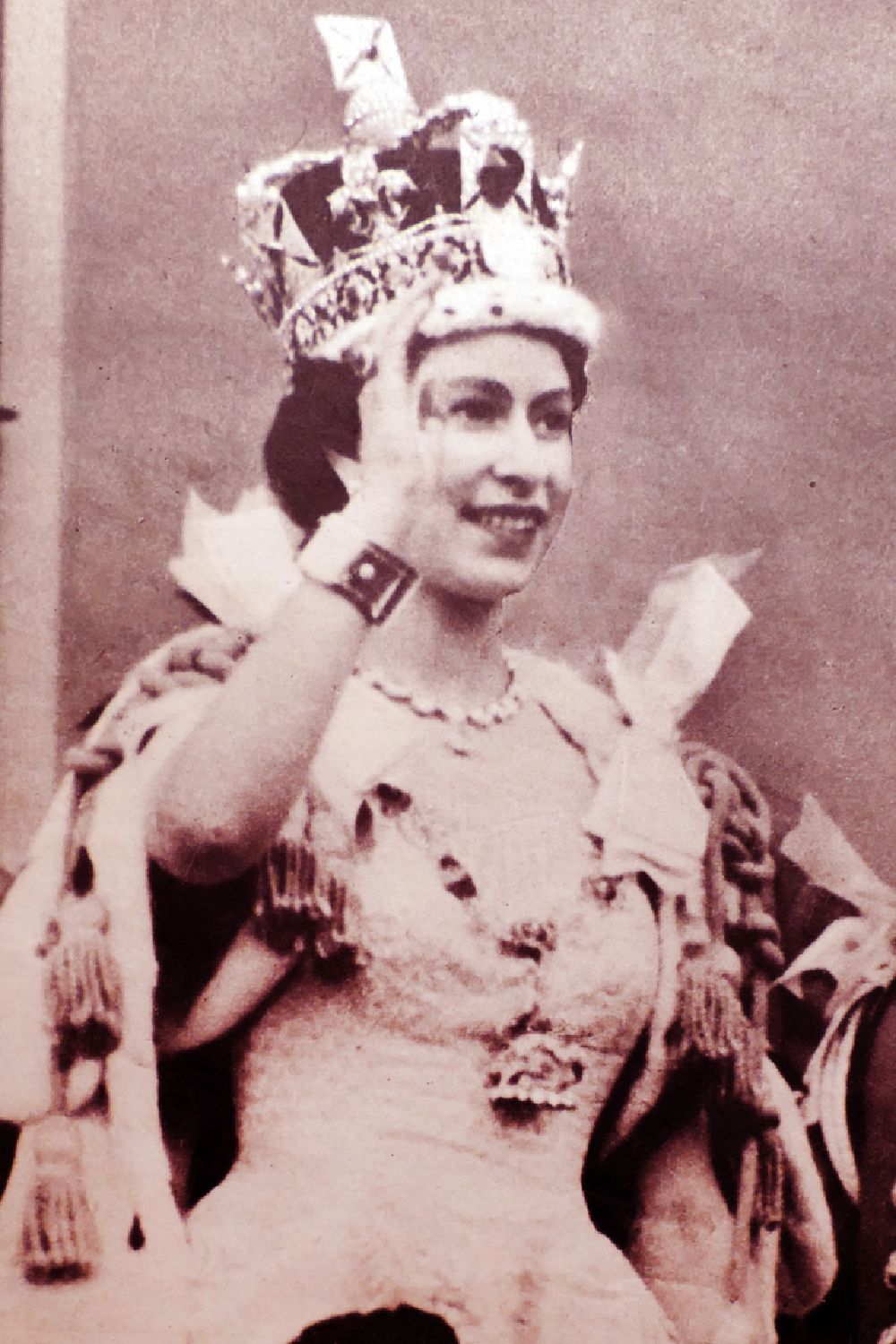
The Queen's Purple Robe of Estate took over 3,000 hours to complete
The Queen wore the Purple Robe of Estate on her two-hour journey back to Buckingham Palace from Westminster Abbey, where she greeted the crowds watching her carriage. Crafted from silk, it reportedly took twelve seamstresses (from the Royal School of Needlework) to craft the piece - and a huge 3,500 hours to complete!
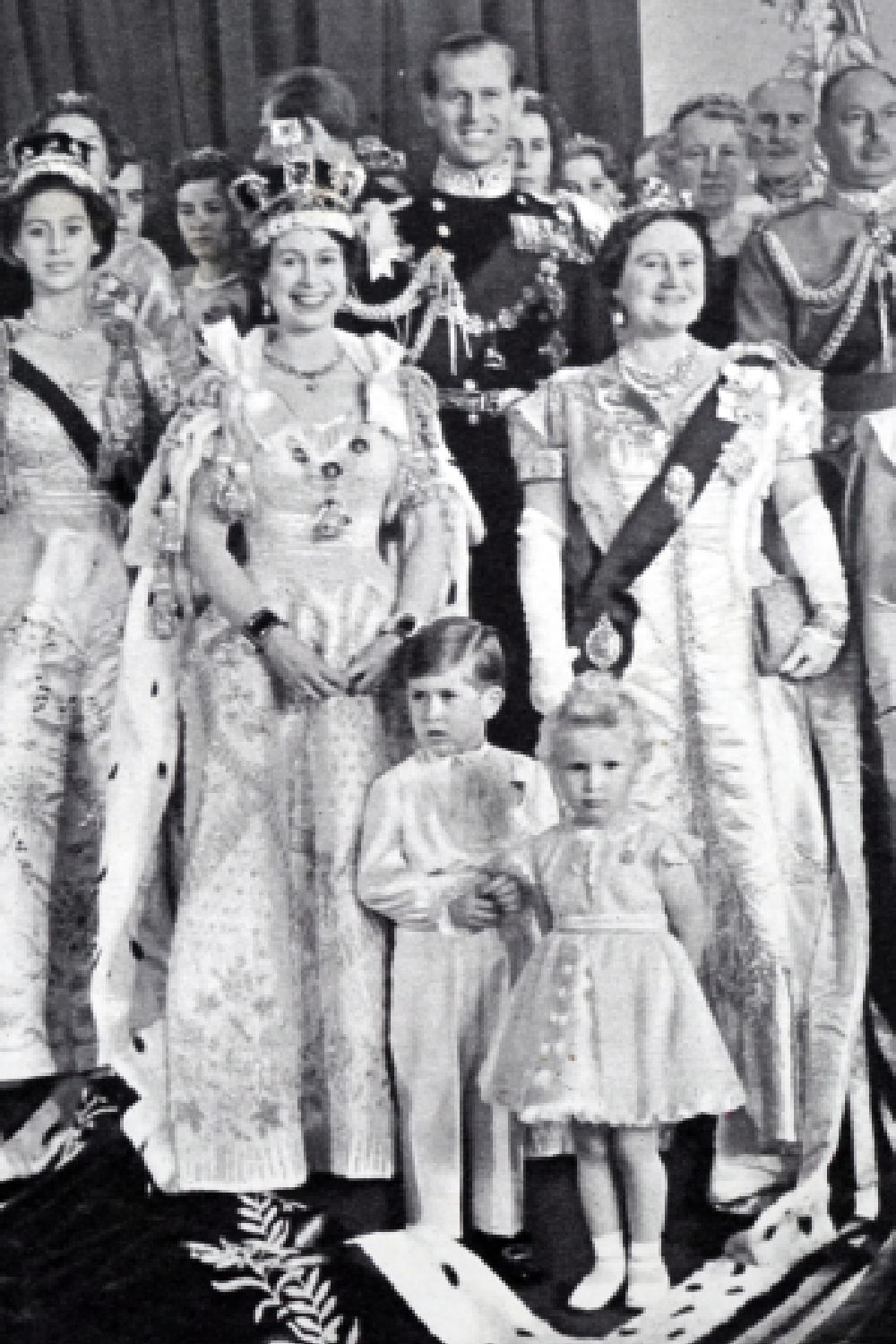
There is a special Coronation ring
As well as her incredible crown, the late Queen wore a special ring that had been passed down the generations, known as 'The Wedding Ring of England'. The ring was originally made in 1831 for King William IV's Coronation and has been worn at every coronation since.
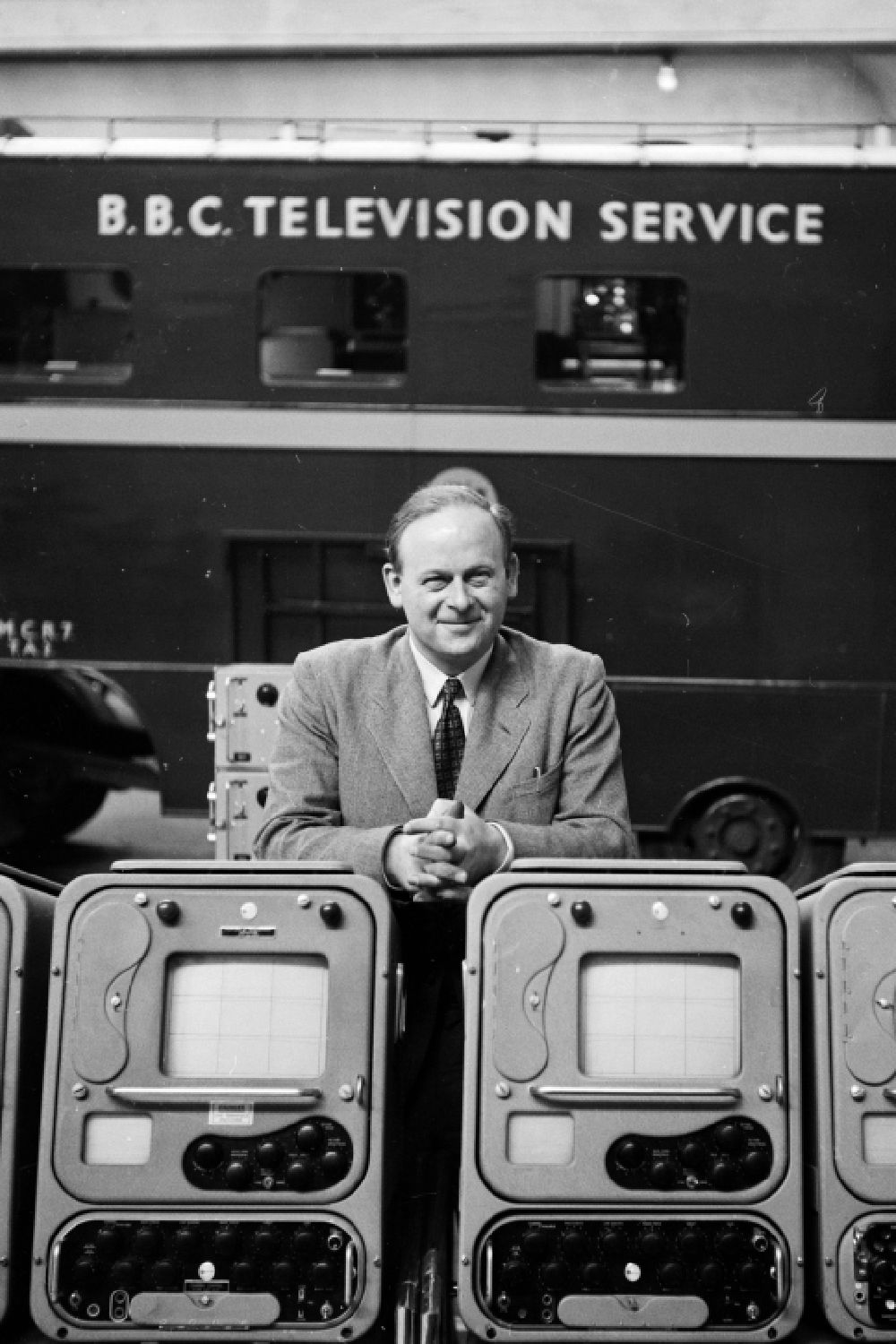
It was the first Coronation to be televised
The Queen's Coronation was a huge event for the people of Great Britain, with an estimated 27 million people tuning in to watch the ceremony, and 11 million listening to it on the radio. For many, it was the first event they'd ever watched on television.
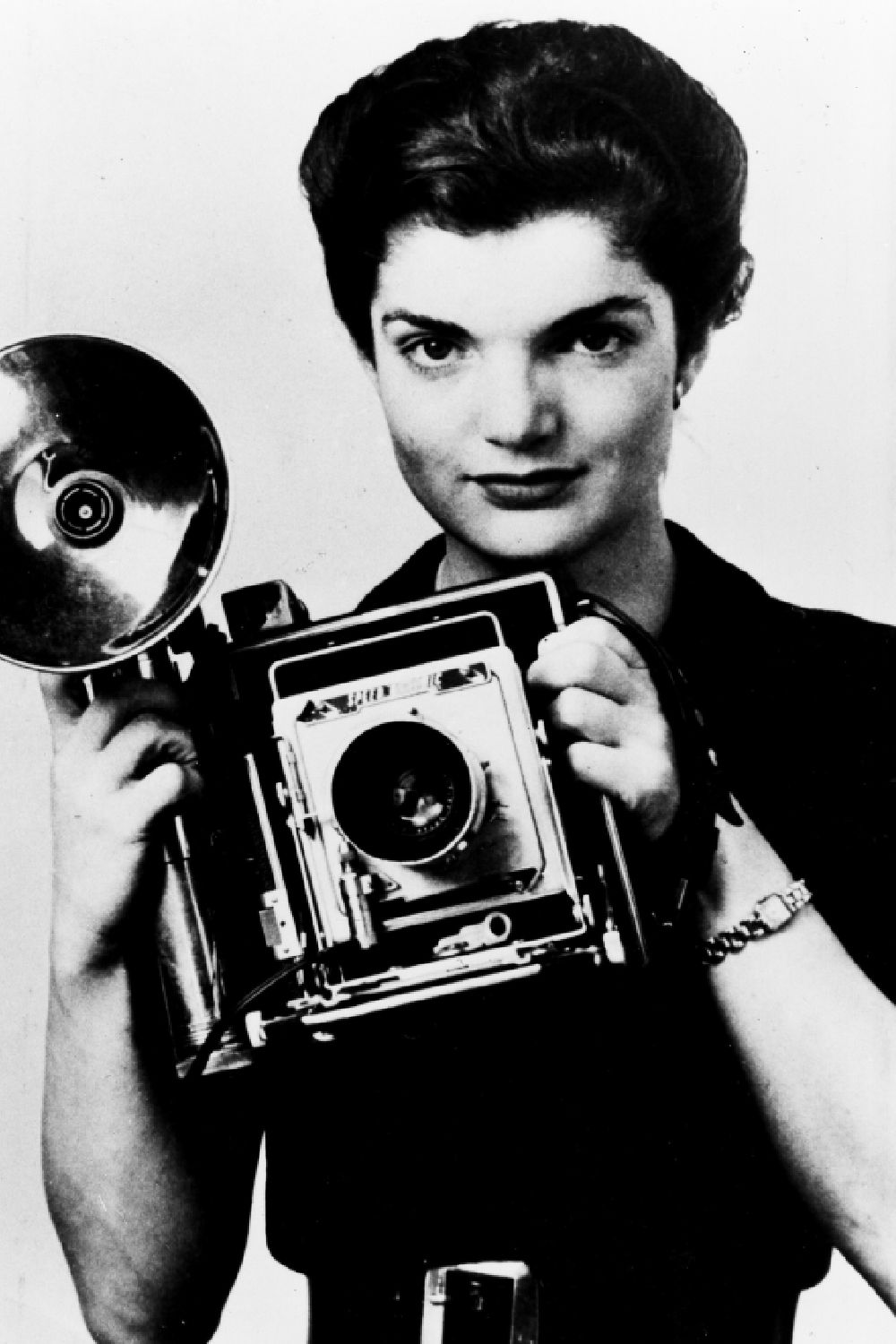
Jackie Kennedy covered the event as a journalist
One of the thousands of journalists covering the coronation ceremony was a journalist called Jacqueline Bouvier, writing up the big day for the Washington Times-Herald . This young journalist went on to become Jackie Kennedy, the First Lady of the United States.
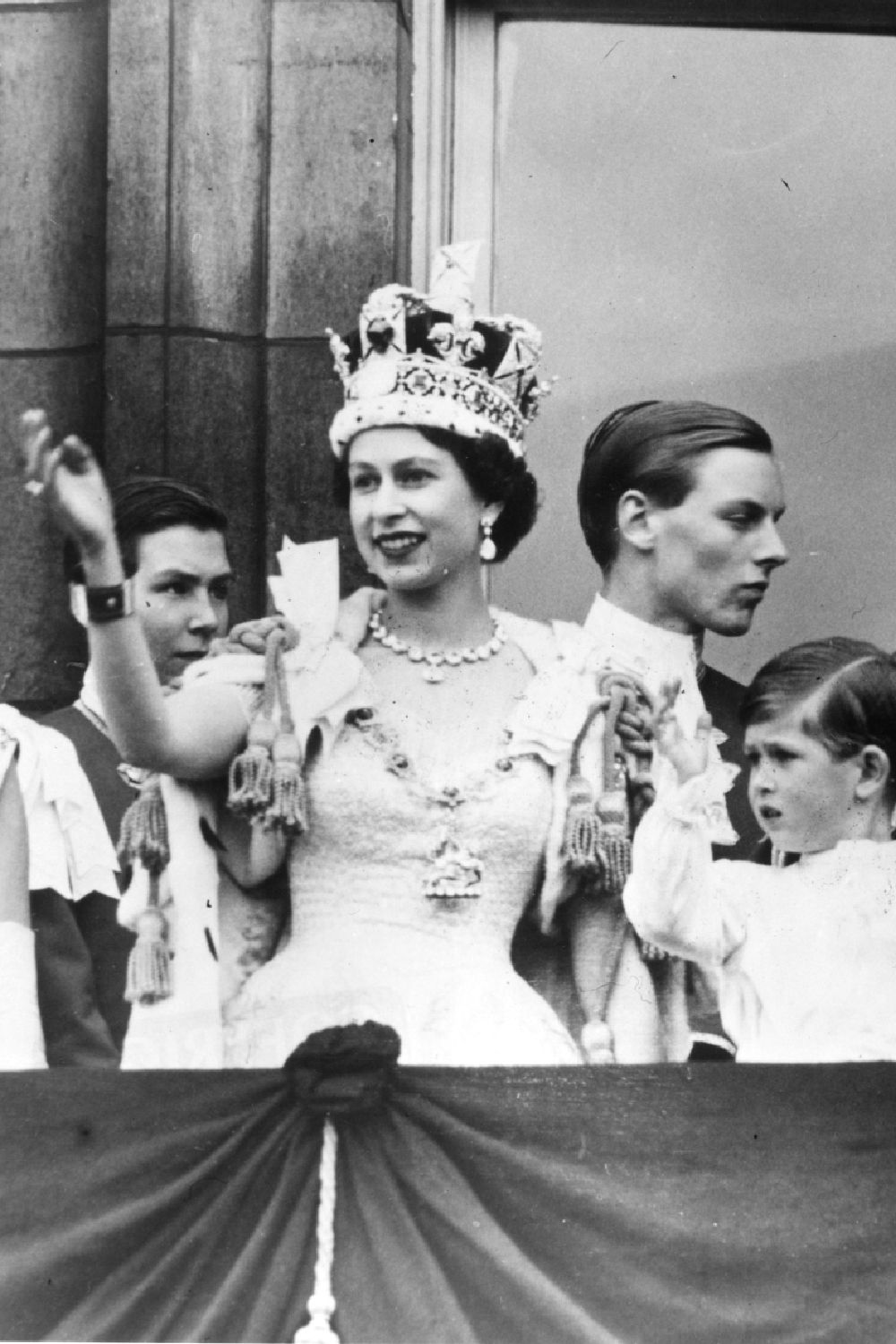
The Queen opted for a simple meal on the day
The Queen is known to enjoy simple food - and her Coronation day in 1953 was no different. Her Majesty was said to enjoy a traditional menu of soup, steak and salad, followed by ice cream.
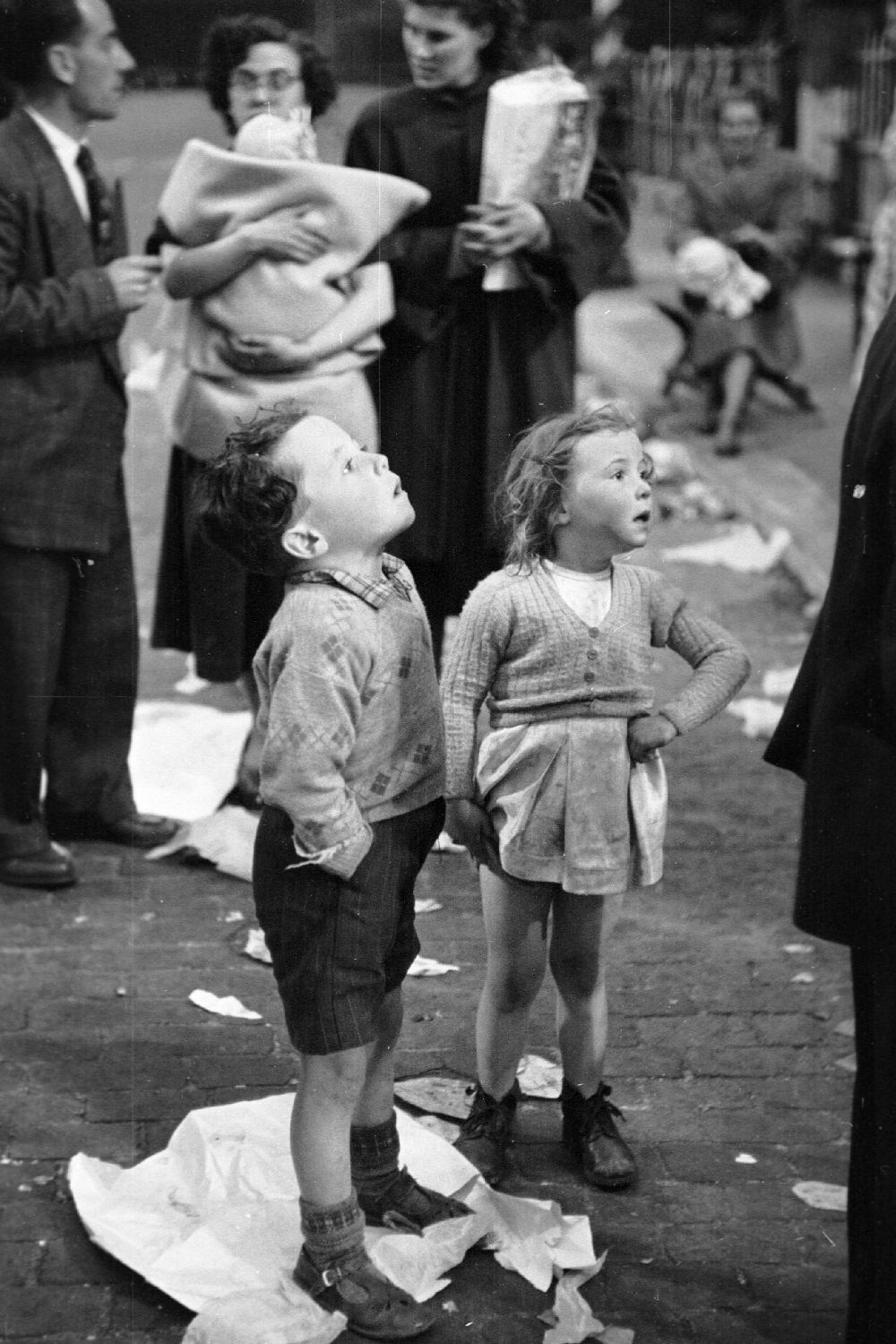
Children across the country received special gifts
It was an exciting day for children across the UK who joined street parties and watched the coronation with their families. It was reported by the Royal Household that over one million children received a matchbox model of the Queen's golden coach, while others were given a special coronation mug or a tin of Smarties.
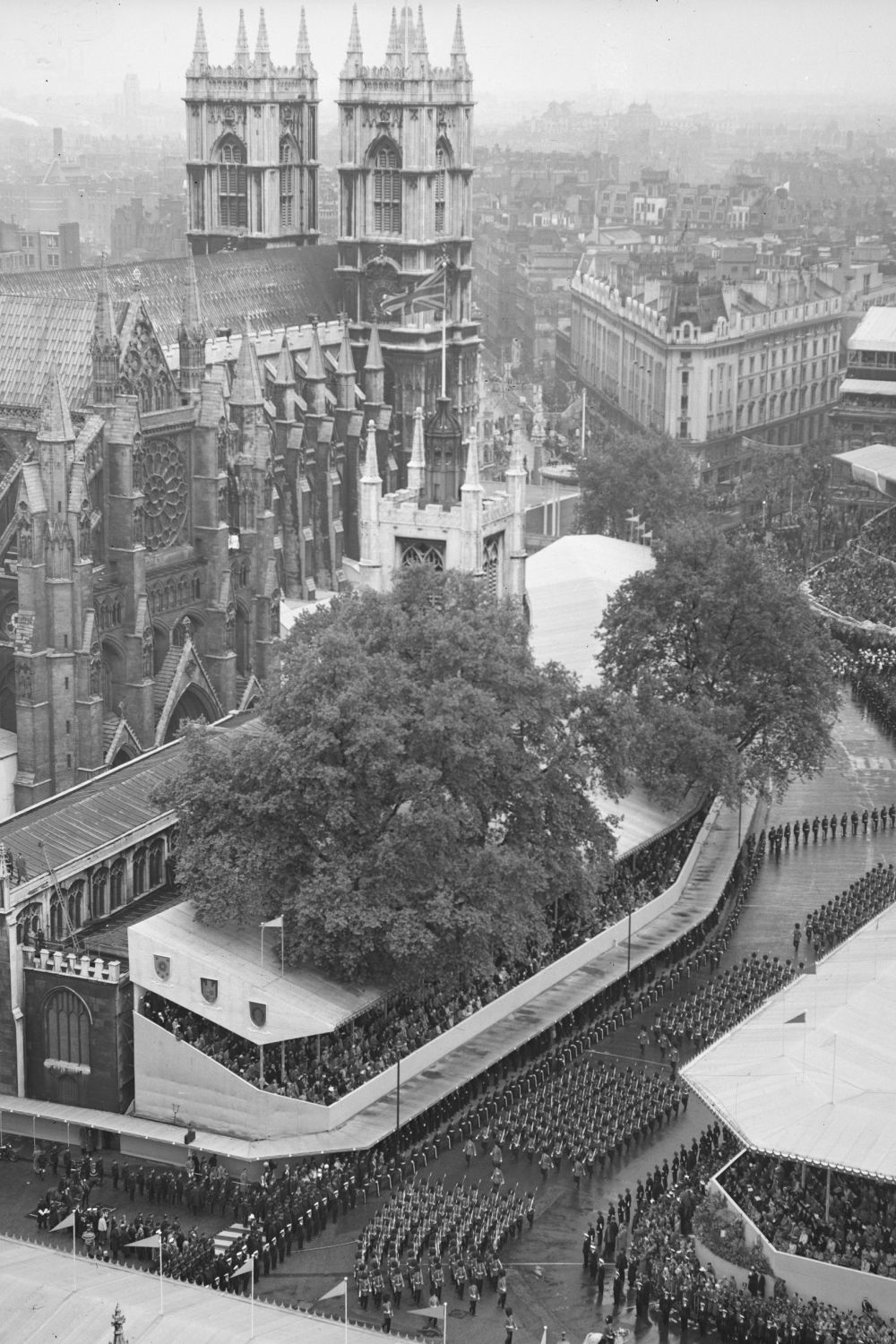
Westmister Abbey was closed for months ahead of the event
Westminster Abbey was actually closed for five months ahead of the event to prepare for the Queen's Coronation. This involved a fair bit of maintenance work, including felting and boarding the floor, as well as special monuments to try and avoid damage during the event.

There were 13 clocks in Westminster Abbey
It was very important on Coronation Day that things ran like clockwork according to the day's schedule. With this in mind, thirteen clocks in the Abbey were all electronically linked so they told exactly the same time.
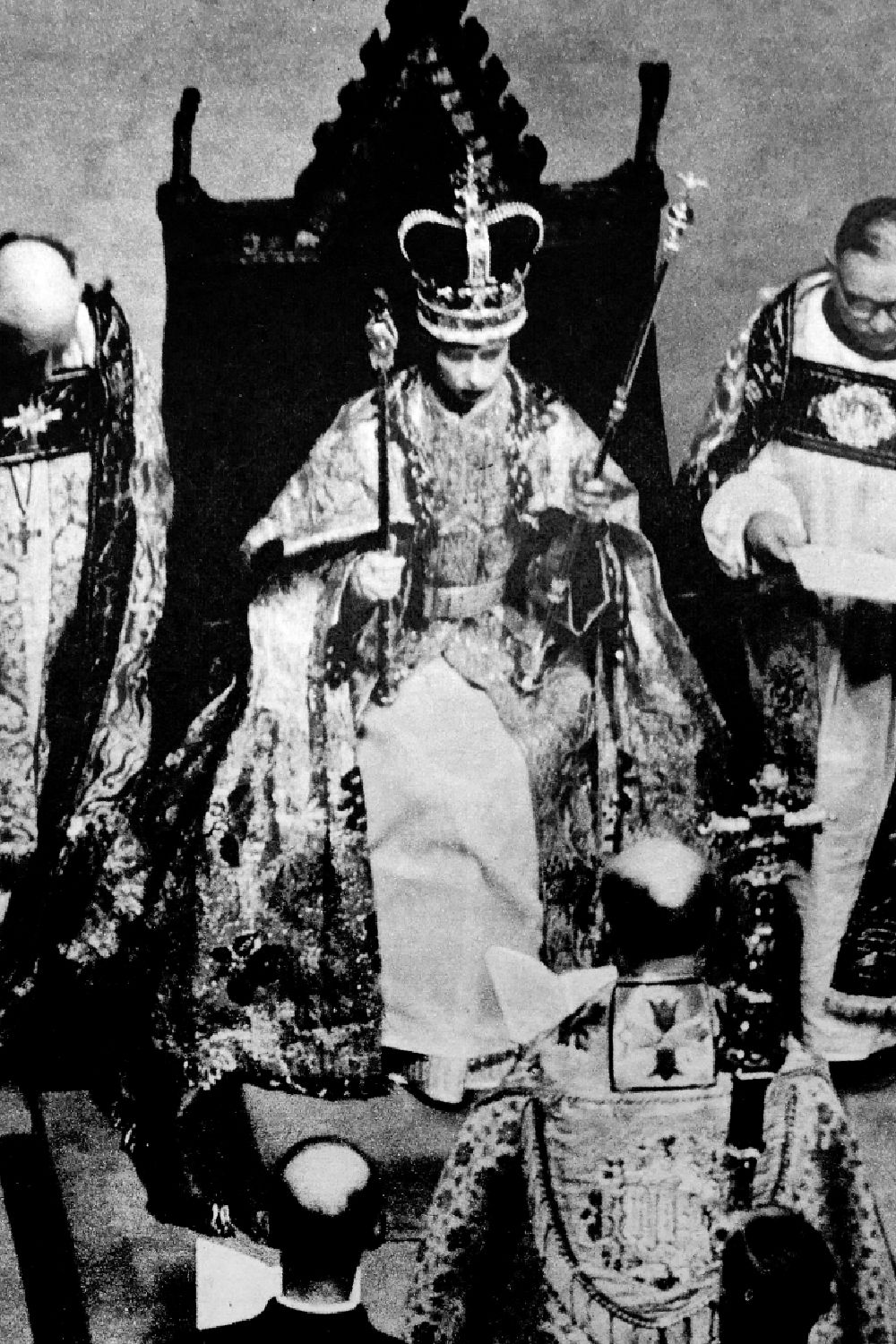
The Coronation day actually began at 4am
It was a very early morning for those working behind the scenes on Coronation Day! The day started for the Stewards at 4 am, who were given a special breakfast before a briefing session on the day's events. Guests could arrive from 6 am - many hours before the service began at 11.15 am.
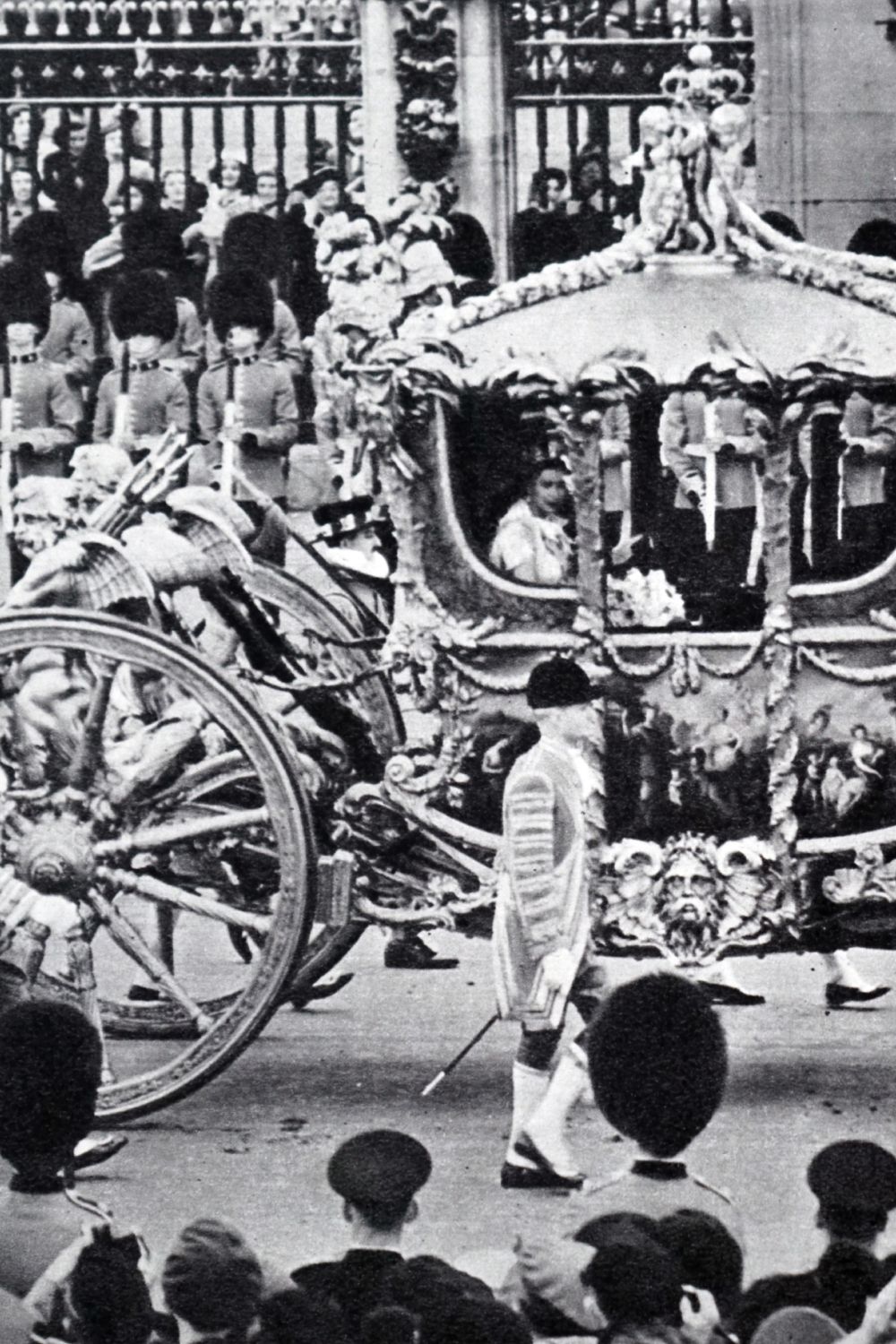
The ride to Westminster Abbey was very uncomfortable
The Queen described her ride to Westminster Abbey in the Gold State Coach as "horrible" as it was so uncomfortable, explaining, "It’s only sprung on leather" (via ITV ). The grand coach was drawn by eight horses called Cunningham, Tovey, Noah, Tedder, Eisenhower, Snow White, Tipperary and McCreery.
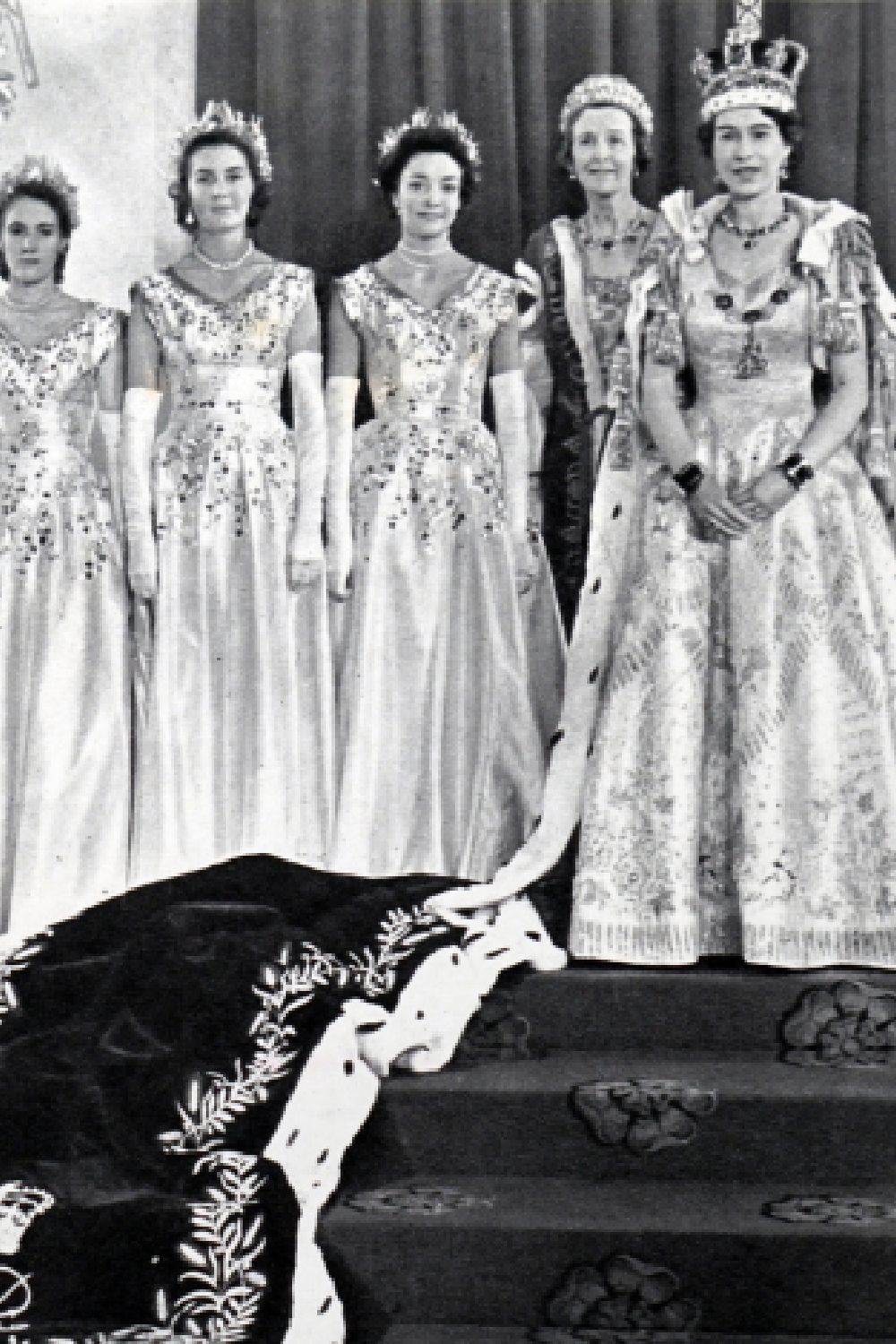
The Queen had six maids of honour
Queen Elizabeth II has a Mistress of the Robes and the six Maids of Honour to assist her during her coronation. They carried her long train as she walked down the aisle - much like a wedding. They also wore dresses designed by Norman Hartnell, who crafted the Queen's elaborate gown.
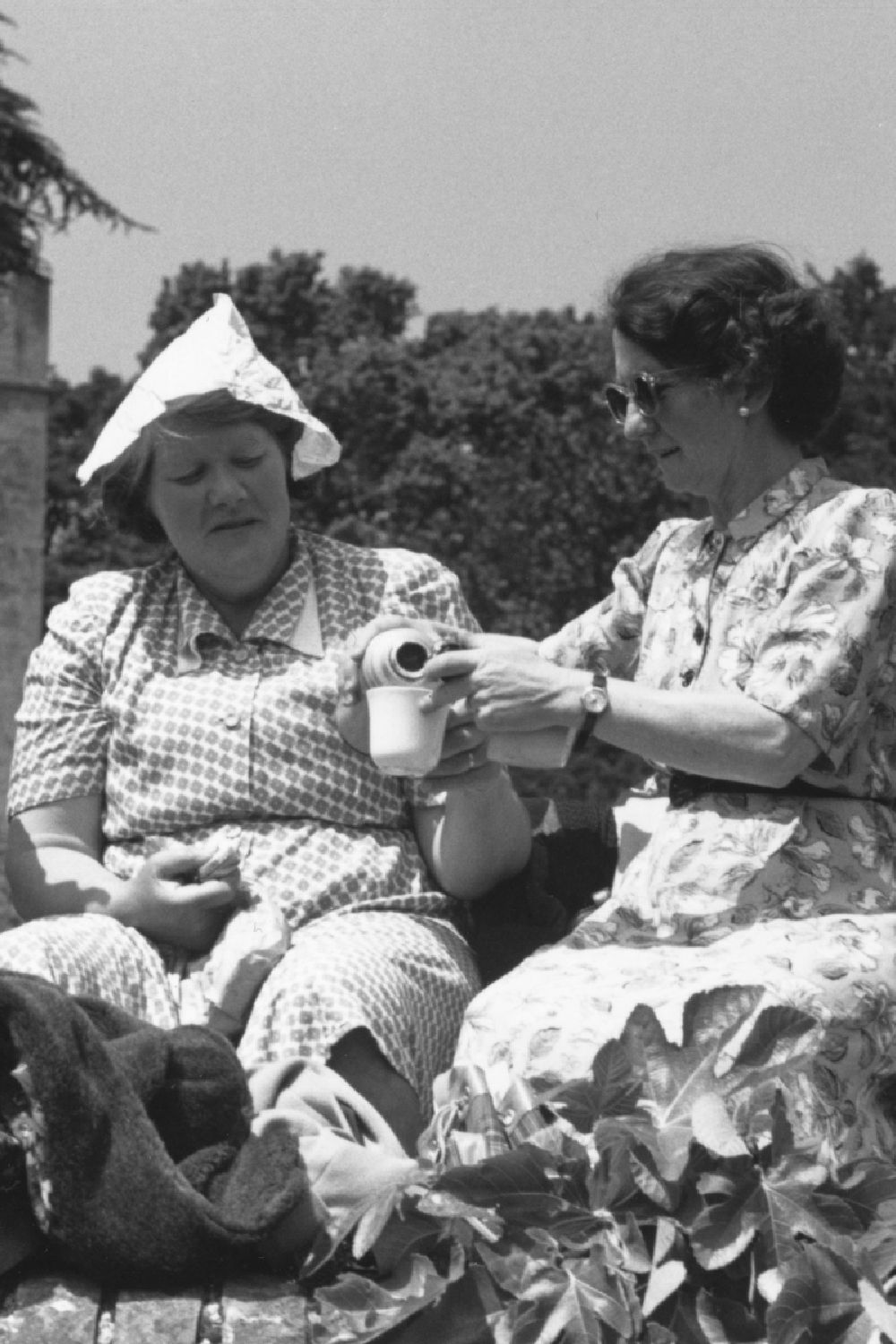
For many, the day involved a big, boozy picnic
It was - and still is - customary for families and friends across the country to pull a picnic together to mark big royal events. But it was also reported that of the 2,000 guests invited to watch the coronation, many had brought alcohol with them along with their snacks, with miniature bottles of gin and whisky found among the litter after the service.

Prince Philip had a brilliant time
Prince Philip had a brilliant time at the late Queen's Coronation, explaining that "much of that day certainly remains rather a blur in my memory, although I have the most vivid memories of individual incidents," (via Yahoo ). He also said the service was "one of the greatest ceremonies the Abbey has ever witnessed".
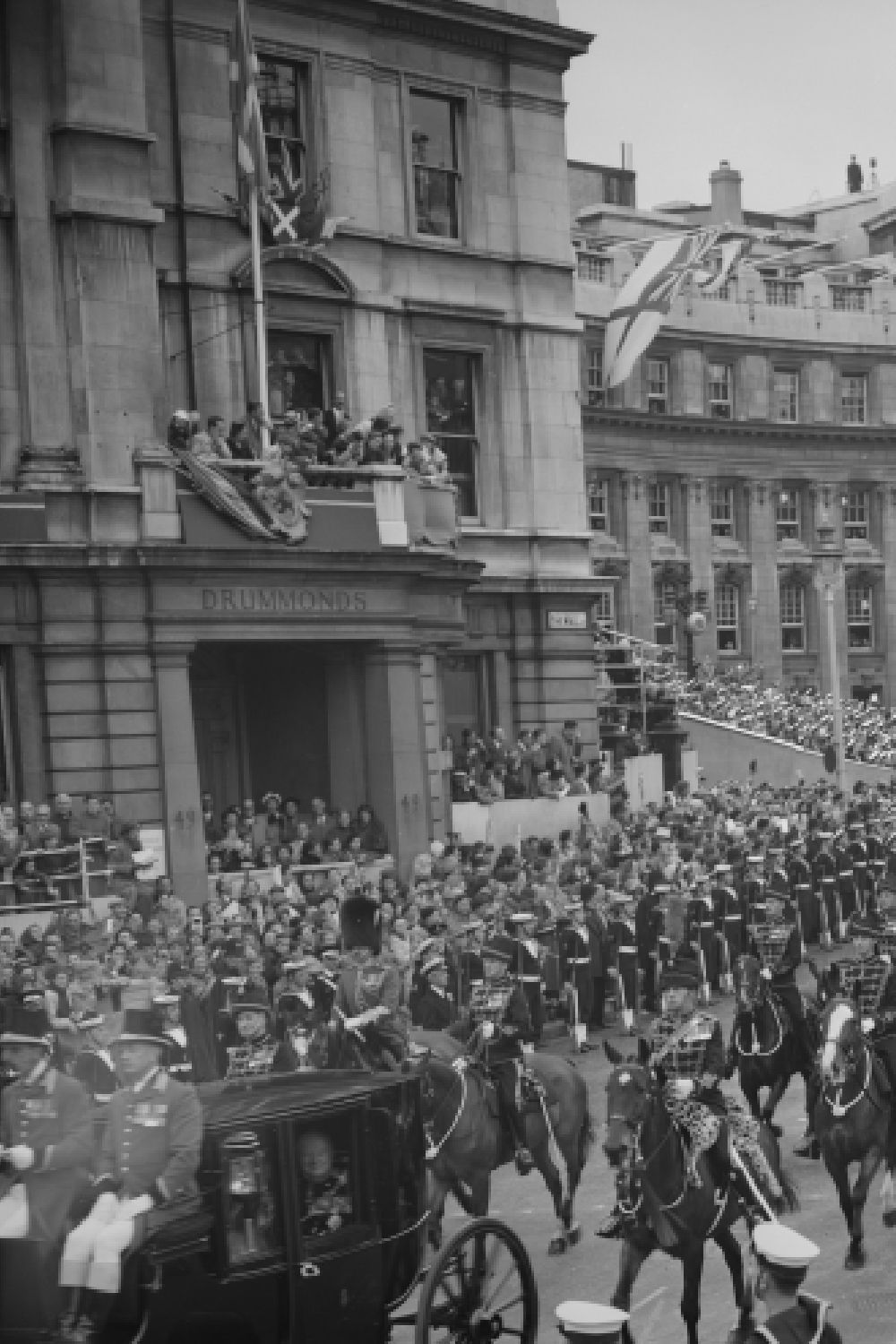
The return route took hours to complete
The return route was much longer than the outward journey to Westminster Abbey, specially designed so that the procession could be seen by as many people in London as possible. It took two hours to complete and was 7.2 km in length.
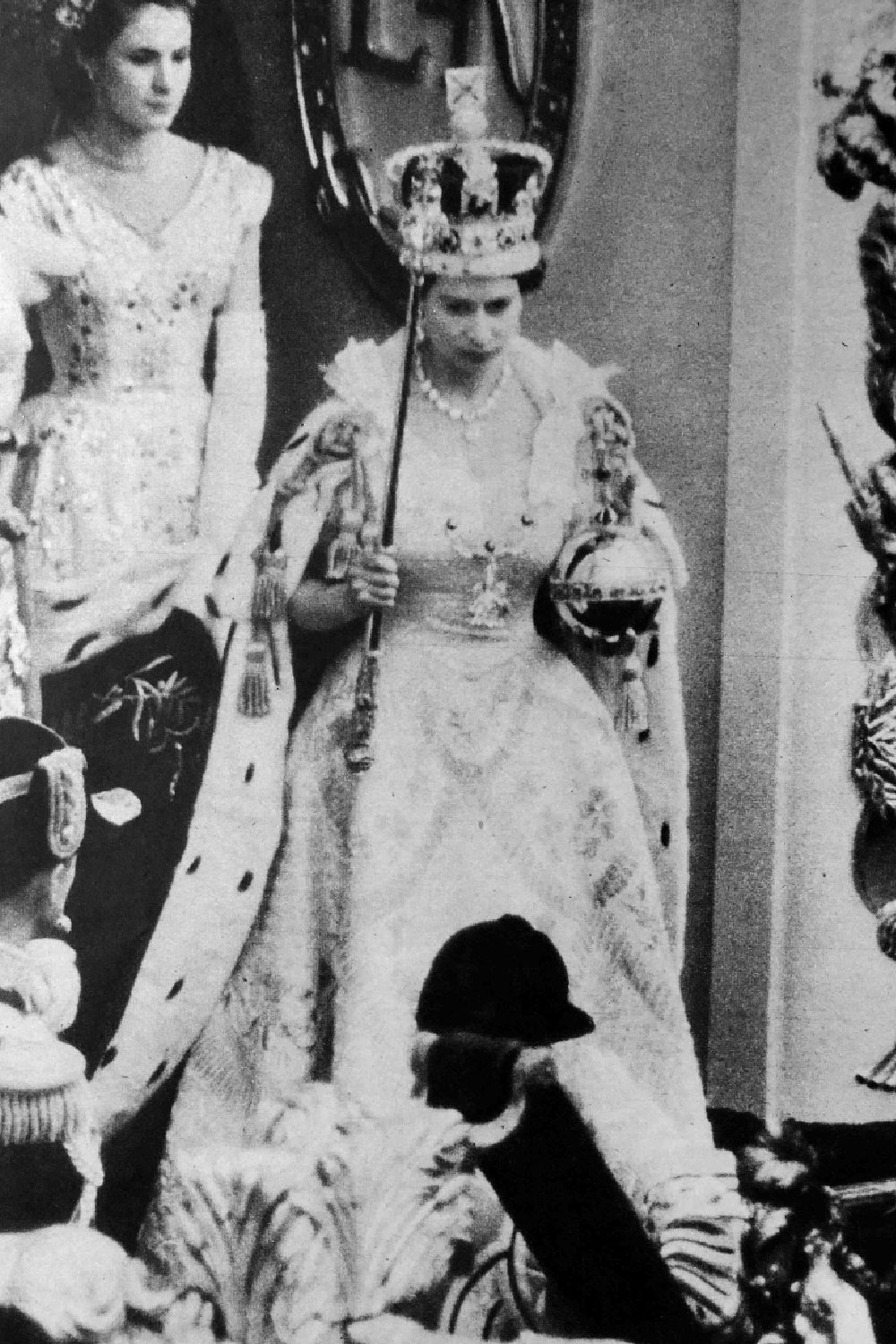
There was a special broadcast to close the event
The Queen shared a special message at 9 pm on the evening of the coronation, thanking all those involved. She told listeners, "It is hard for me to find words in which to tell you of the strength which this knowledge has given me."
Before adding, "As this day draws to its close, I know that my abiding memory of it will be, not only the solemnity and beauty of the ceremony but the inspiration of your loyalty and affection. I thank you all from a full heart."
More for You
Popular restaurant chain filing for bankruptcy, closing all locations
Scientists discover gigantic 'structure' under the surface of the Moon
LeBron James rips NBA replay center in expletive rant after Nuggets top Lakers with buzzer-beater
3 lies women have been told about their bodies, according to a female doctor
UAE Floods Shown in Incredible Before-and-After Satellite Photos
Age at which you're officially old has changed
Culver's Vs Five Guys: Which Burger Chain Is Better?
These 18 senators voted against Ukraine and Israel aid
Top physicist publishes 'evidence' that we're living in a computer simulation
DJT stock plunges 8% as Trump qualifies for 36 million bonus shares
Frightening map shows the best parts of the United States to withstand a nuclear apocalypse
Here’s When to Expect Cicadas If You Live in One of These 17 States
The Costco Food Court Pizza Trick We Should Have Tried Sooner
‘Atlas' Trailer: Jennifer Lopez Is Humanity's Only Hope In Brad Peyton's Sci-Fi Action Film For Netflix
The IDF is doing something I've never seen before: Gen. Jack Keane
I moved my family from California to Austin, Texas, and regretted it. Here are 10 things to consider before making an expensive mistake.
Anonymous associate reportedly warned Trump before Jack Smith indictment
What Does It Mean if You Remember Your Dream When You Wake up
The best pizza place in 25 major US cities
"GMA" Fans Congratulate Robin Roberts as She Announces Major Career Achievement

IMAGES
COMMENTS
We're open to visitors most days, but as Westminster Abbey is a living working church, we may need to close some areas off to the public at times and offer reduced opening hours. General opening times. Monday - Friday: 9.30am - 3.30pm (last entry) Saturday: 9.00am - 3.00pm (last entry) Sunday: Open for services.
How Long To Spend at Westminster Abbey. Short answer: 2 hours. If you include sit-downs and café breaks, it'll take you the full two hours. Bear in mind, there are over 3,000 public figures buried in this sizeable church. Also, you have to factor in many more memorials honouring important figures from British history.
Children aged 6-16 can visit Westminster Abbey for £9 if tickets are booked online, or £10 if tickets are bought at the Abbey. Concessionary tickets (over-60s and students) cost £18 online, or £20 at the Abbey. ... As well as taking a guided tour of Westminster Abbey, you can also book a combined tour.
You can see inside Westminster Abbey for free. The Abbey never charges people who want to worship but they rely on admission fees from visitors to cover running costs. Evensong is the most beautiful of services where the Abbey choir sings. The Choristers of the Choir are educated at Westminster Abbey Choir School and are all extremely talented.
Guided tour with early access to Westminster Abbey - Buy ticket. Private 2 ½ hour tour of Westminster Abbey with skip-the-line and a London Blue Badge Guide. - Book here. Skip-the-line Westminster Abbey small group tour with a guided visit & tour around the Houses of Parliament - Book here. Verger-guided tours are available for £10 but ...
Westminster Abbey is a venerable landmark that's an absolute must visit attraction in London. It's the most historic church in the English-speaking world. This Westminster Abbey guide gives you an overview of the abbey's 1,000 year history and tells you everything to see inside. I also give you must know tips for visiting.
Westminster Abbey has over one million visitors a year. Westminster Abbey is England's main religious building. Originally built in Saxon times in the 7th century, its real importance dates from 1065 with Edward the Confessor setting up his throne here. Since that time Government has always been centred on Westminster, with commercial activity ...
With the Abbey's rich history, there are many parts of it you'll want to see when you visit. Explore the most popular spots to find out which area interests you most. It's a privilege to live and work here - the Abbey really is the heart of the country and its history ...
Interesting Facts about Westminster Abbey. A joyous mix of royal fanfare, genius scribblers, and incredible scientists, Westminster Abbey has been a hotspot for history buffs since it first planted roots in the early 1000s. It's definitely so much more than a church: it's a treasure chest of artifacts, a resting place for important British figures and monarchs (3,500+ lay here!), and a ...
Westminster Abbey. Westminster Abbey was initially built by Henry III in 1245 and it is one of the most important Gothic buildings of England. At first home of Benedictine monks, the coronation church since 1066 and the final resting place of 17 monarchs. It contains a treasury full of paintings, stained glass, pavements, textiles, books and ...
Monday - Friday: 10.00am - 3.00pm (last entry) Saturday: 9.30am - 3.00pm (last entry) Sunday: Closed. Tickets from £5 (in addition to entrance ticket) Experience the architectural marvel of the new Weston Tower, an exquisite addition to the historic Westminster Abbey since 1745, designed by Ptolemy Dean.
Buy at the Abbey. £23. £20. £10. £23 (£10 per additional child) Ticket prices are cheaper to purchase online, rather than in the Abbey on the day, and can be purchased via the Westminster Abbey website here. Also note, tickets booked in advance online include a multimedia guide and fast track entry.
According to Tripadvisor travellers, these are the best ways to experience Westminster Abbey: Westminster Abbey Entrance Ticket Including Audio Guide (From £29.27) Westminster Abbey Tour and optional visit to Houses of Parliament in London (From £59.55) Skip the Line into Houses of Parliament & Westminster Abbey Fully-Guided Tour (From £140.26)
Houses of Parliament/Big Ben are located to the east of the Abbey. You can tour the Houses of Parliament. Unfortunately, Big Ben is under renovation. If you want to visit both Westminster Abbey and the Houses of Parliament, consider taking this exclusive guided small group tour. Jewel Tower is around the corner from Westminster Abbey. It was ...
Join us for a season of events focusing on the fellowship between the UK and France, celebrating shared stories, cross-channel influence and the unity of nations. Through an immersive exhibition, music, talks and tours, uncover the relationship between these countries and their national churches, Notre-Dame and Westminster Abbey. Spring season.
How to make the most of Westminster Abbey in London . When making the most of Westminster Abbey, one of London's top 10 attractions, make sure you spare at least 1 hour of your visit to the Abbey.If you spend 3 days in London or 4 days in London, that will give you ample time to make the most of the city.Take your time when visiting Westminster Abbey because there's so many stories that ...
See our best Westminster Abbey tours to take and why. 10. The Coronation Chair. St George's Chapel | UK's Oldest Furniture | Stone of Scone | Oliver Cromwell. Traditionally, Britain's monarchs are crowned in an area of the Abbey called the High Altar, but the Coronation Chair is on display in another section called the Nave.
For a detailed disabled access guide to Westminster Abbey, please visit the AccessAble website. Wheelchairs. We have wheelchairs you can use - please ask an Abbey Marshal when you arrive. Visually impaired visitors. We offer an audio described tour that has been created with the assistance of VocalEyes. Assistance dogs
A huge 8,251 guests attended the Queen's Coronation ceremony at Westminster Abbey, with the procession made up of 250 people including Church leaders, Commonwealth Prime Ministers, members of the ...
The Storytent is located in Dean's Yard. Doors will open at 5.45pm. Stories will begin at 6pm. There will be an interval between stories during which we will explore the Abbey Gardens. This event is for adults and young people over the age of 16, please see our family pages for information and events to explore this theme as a family.